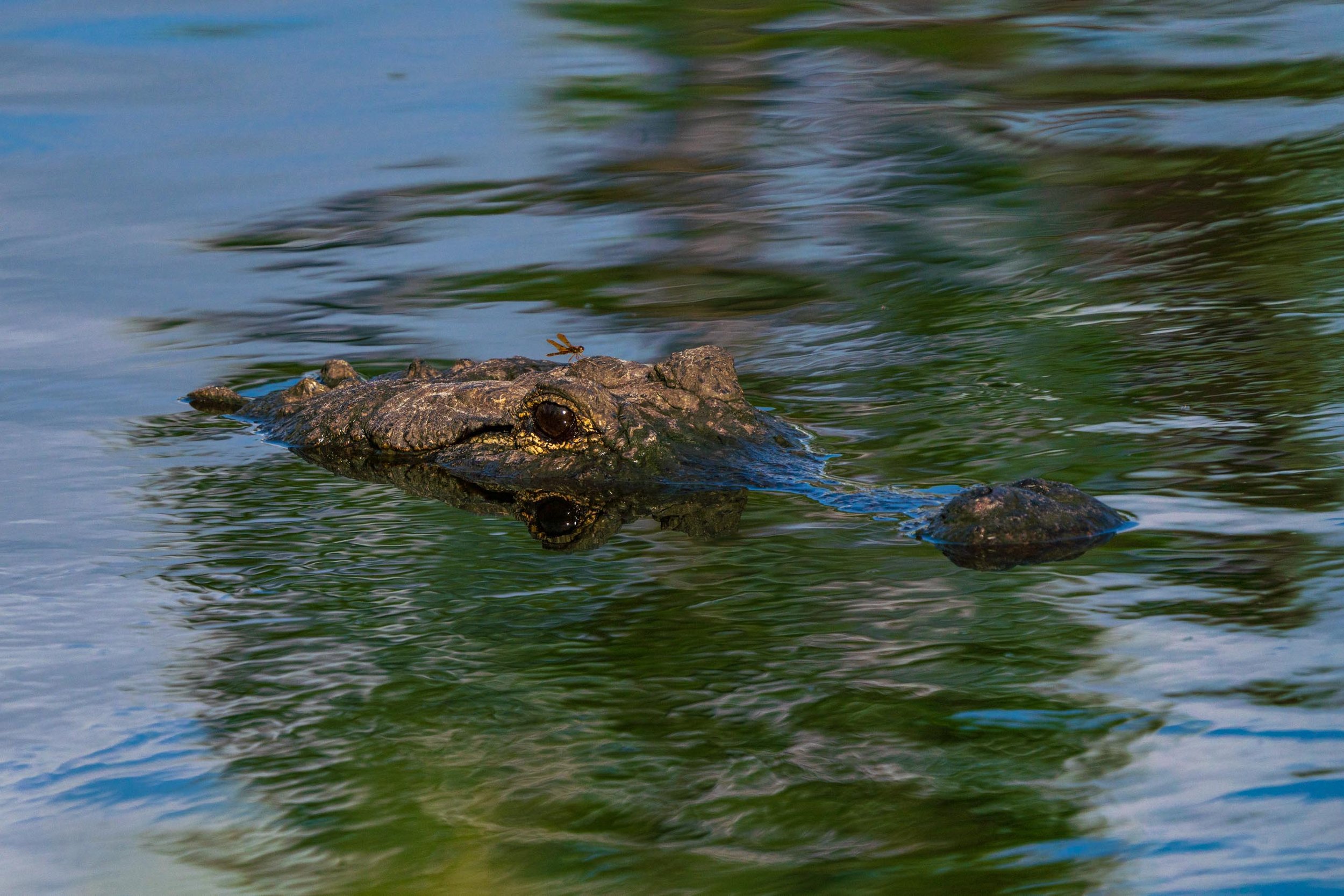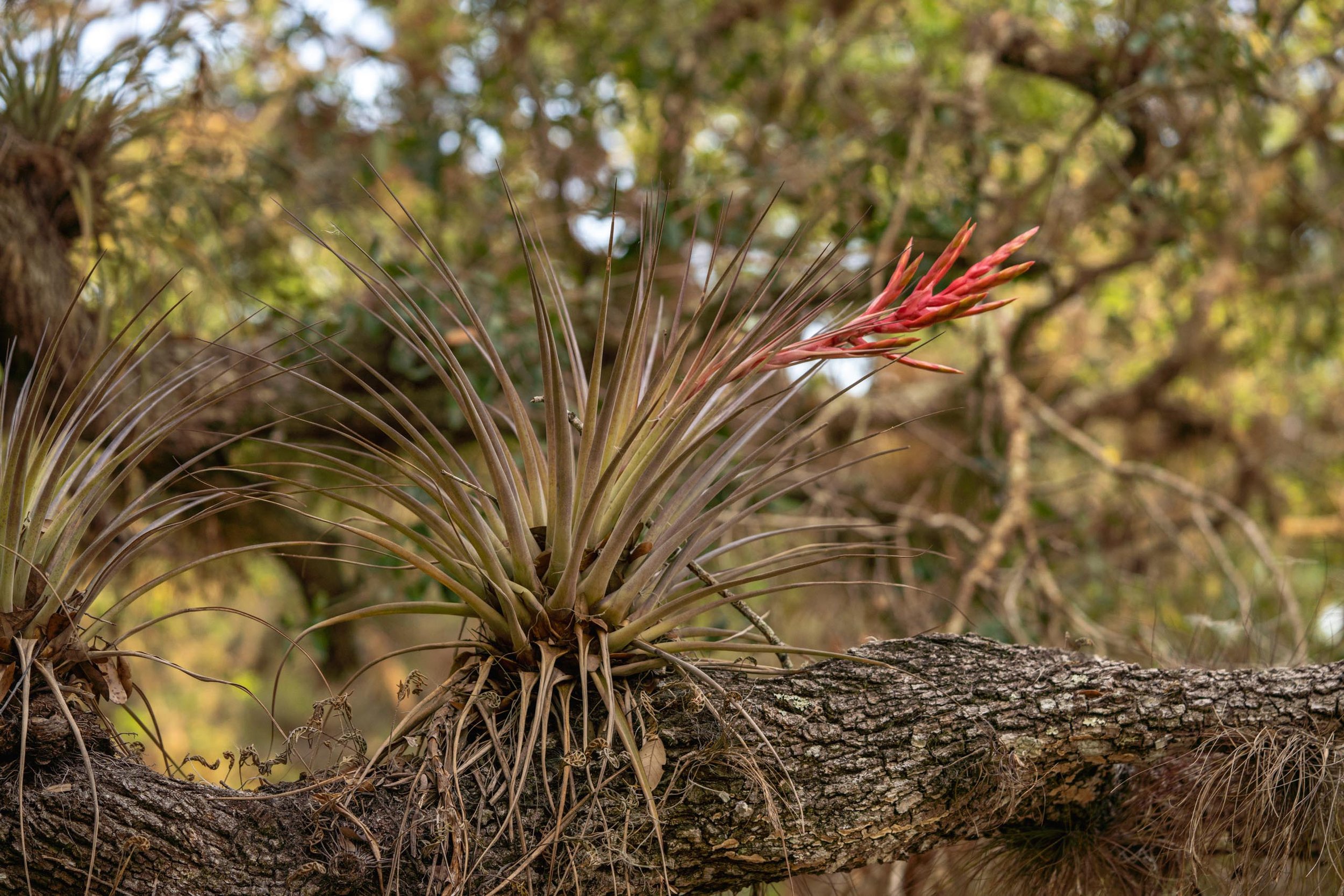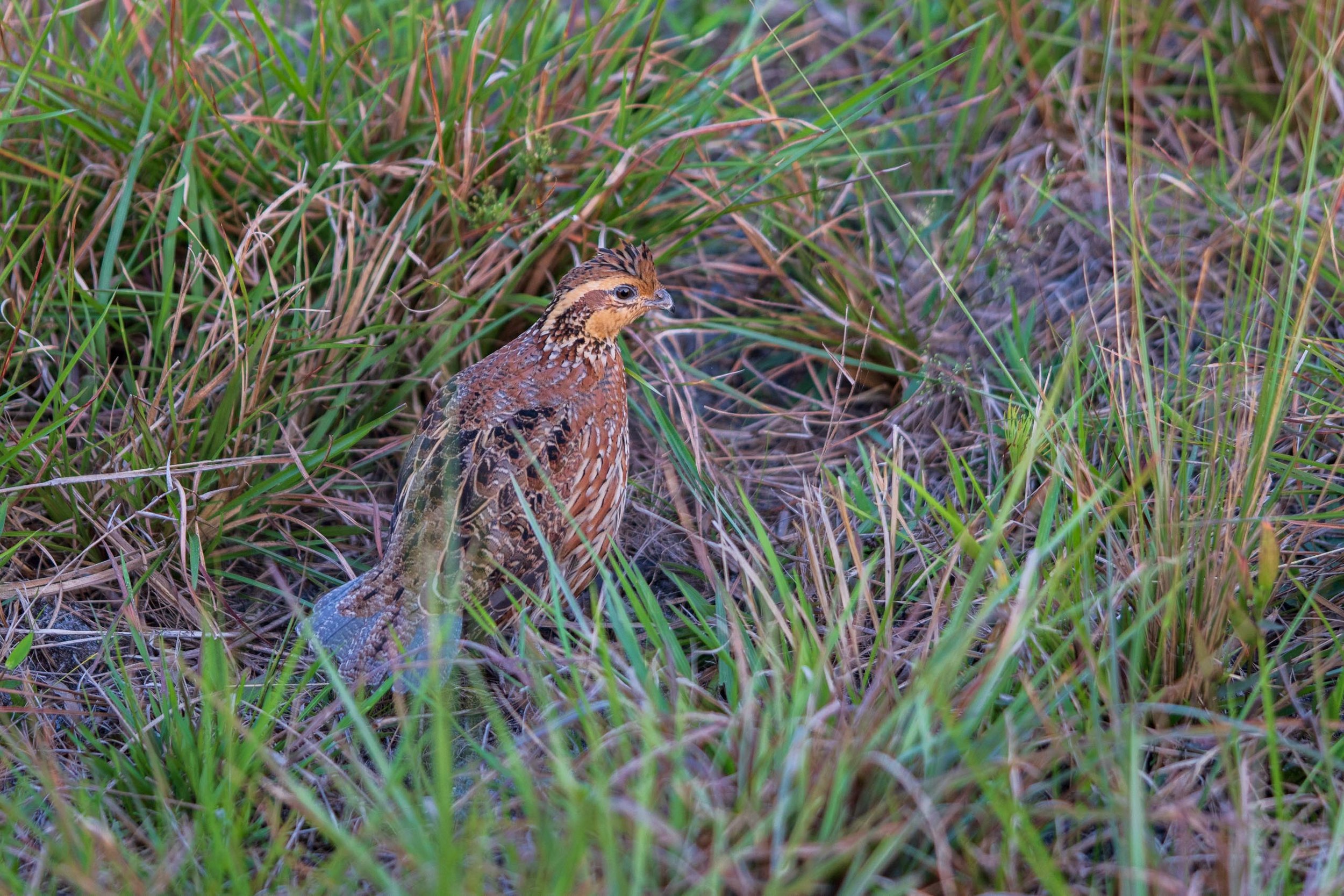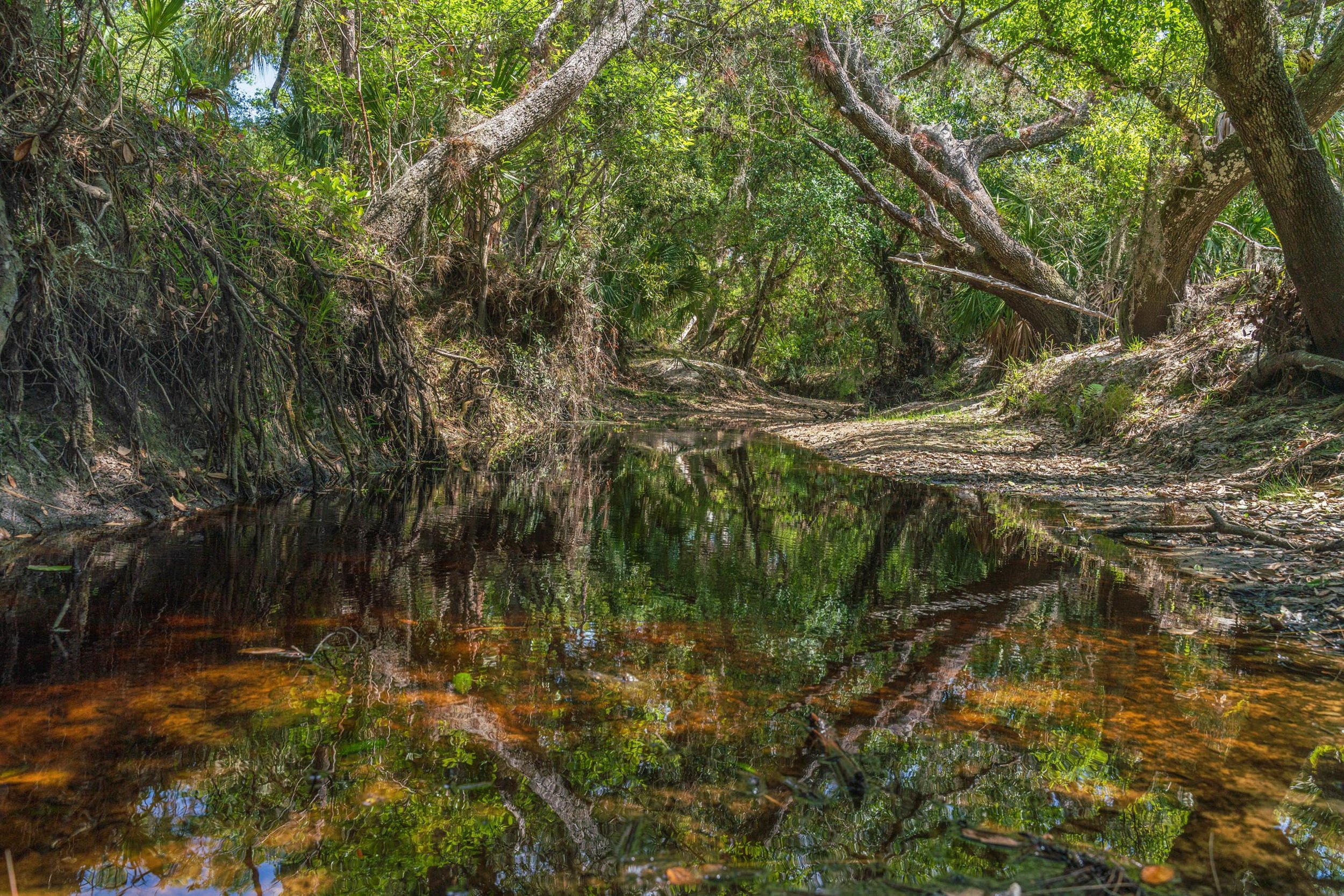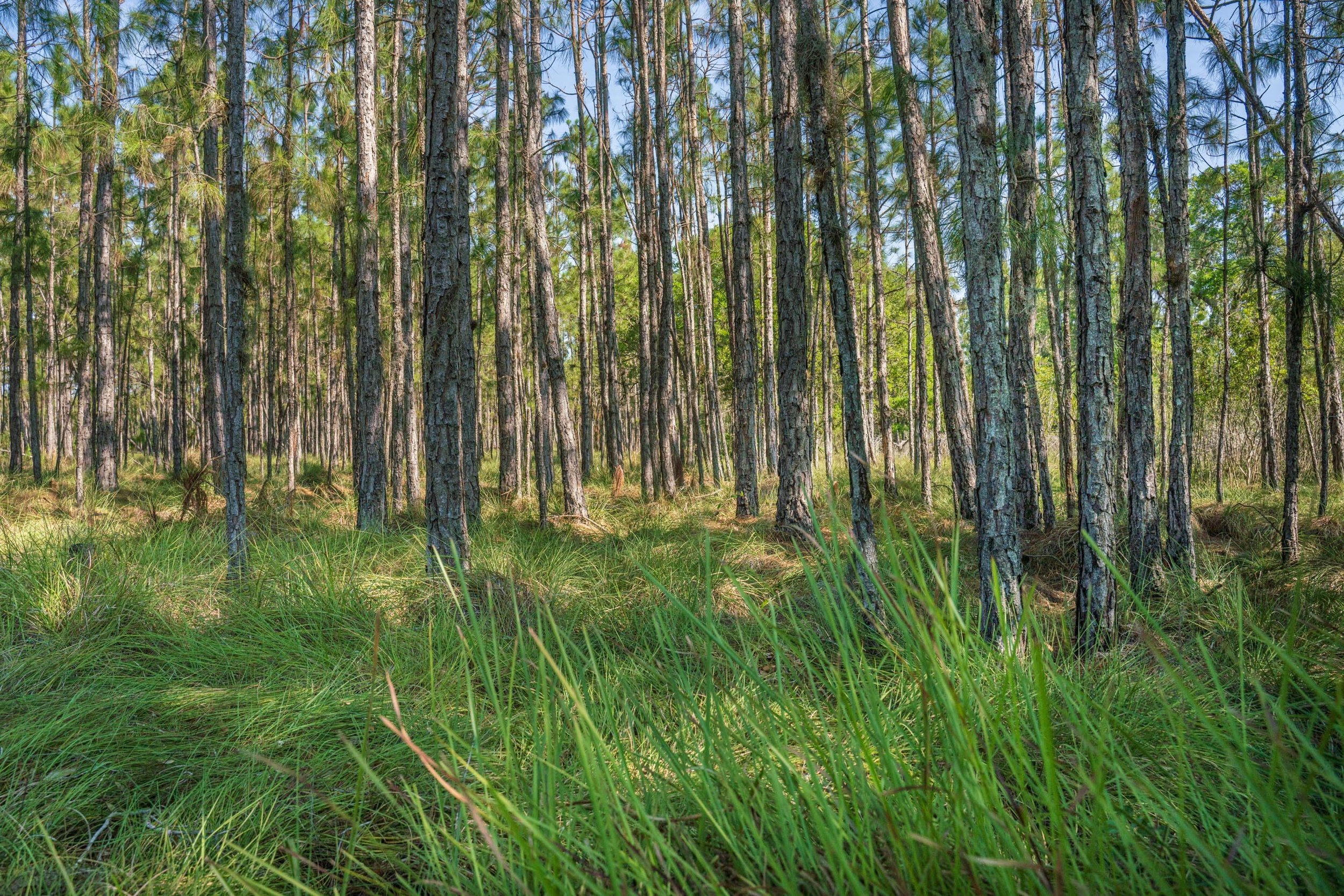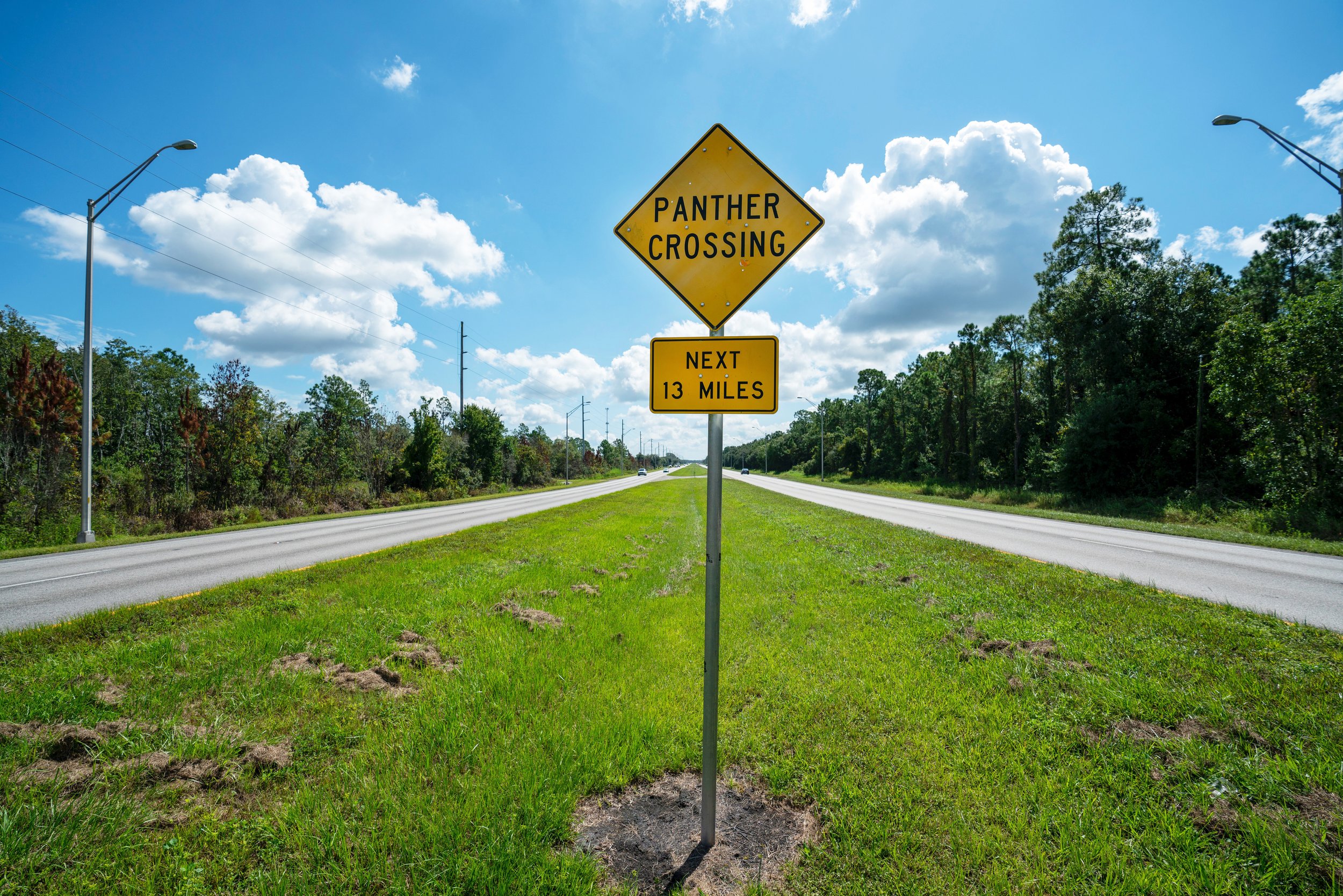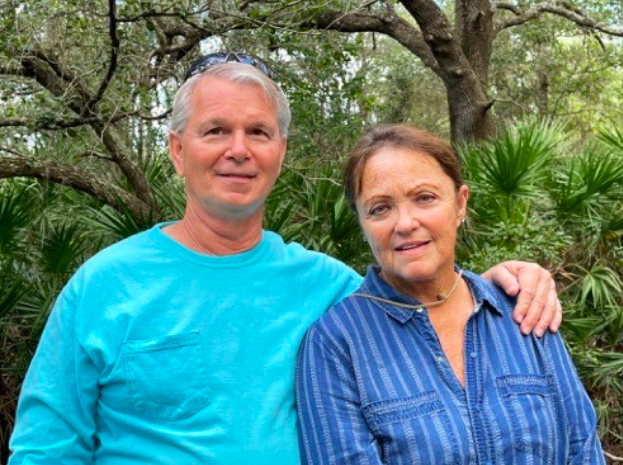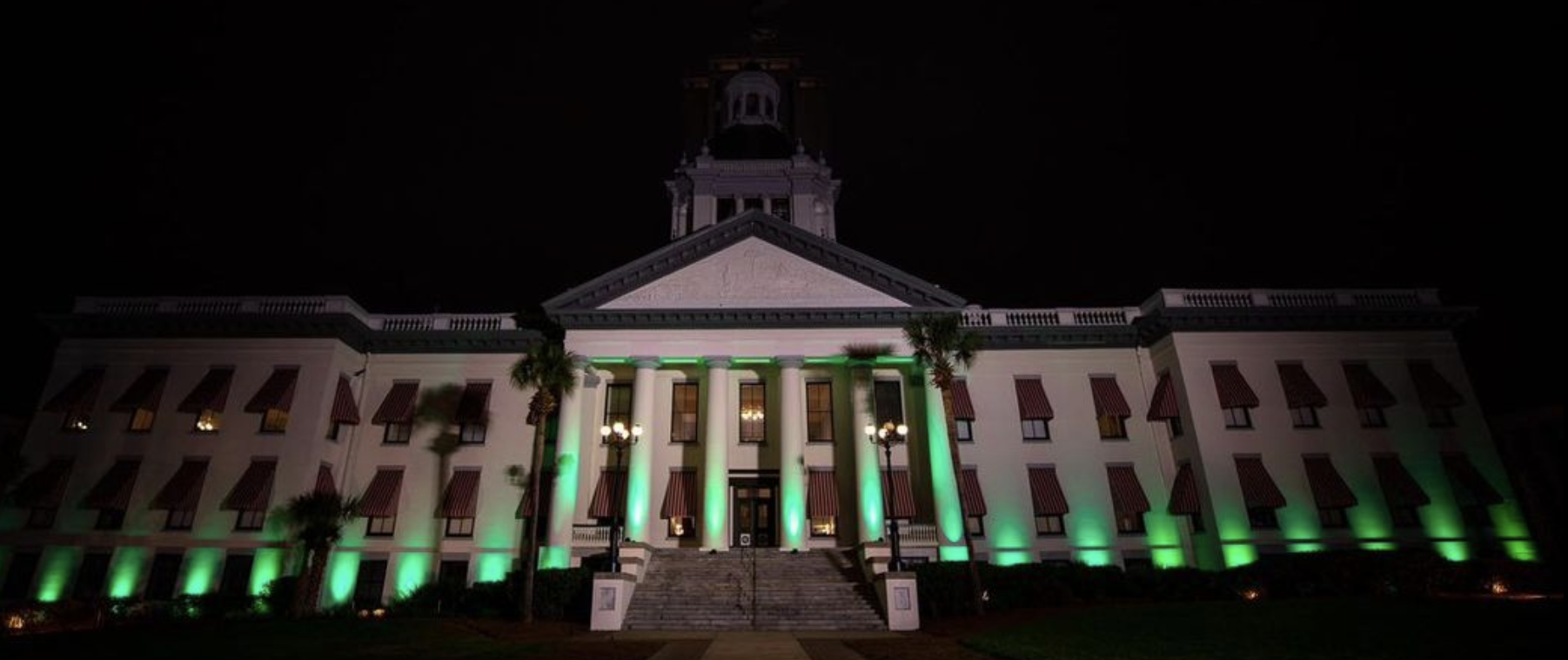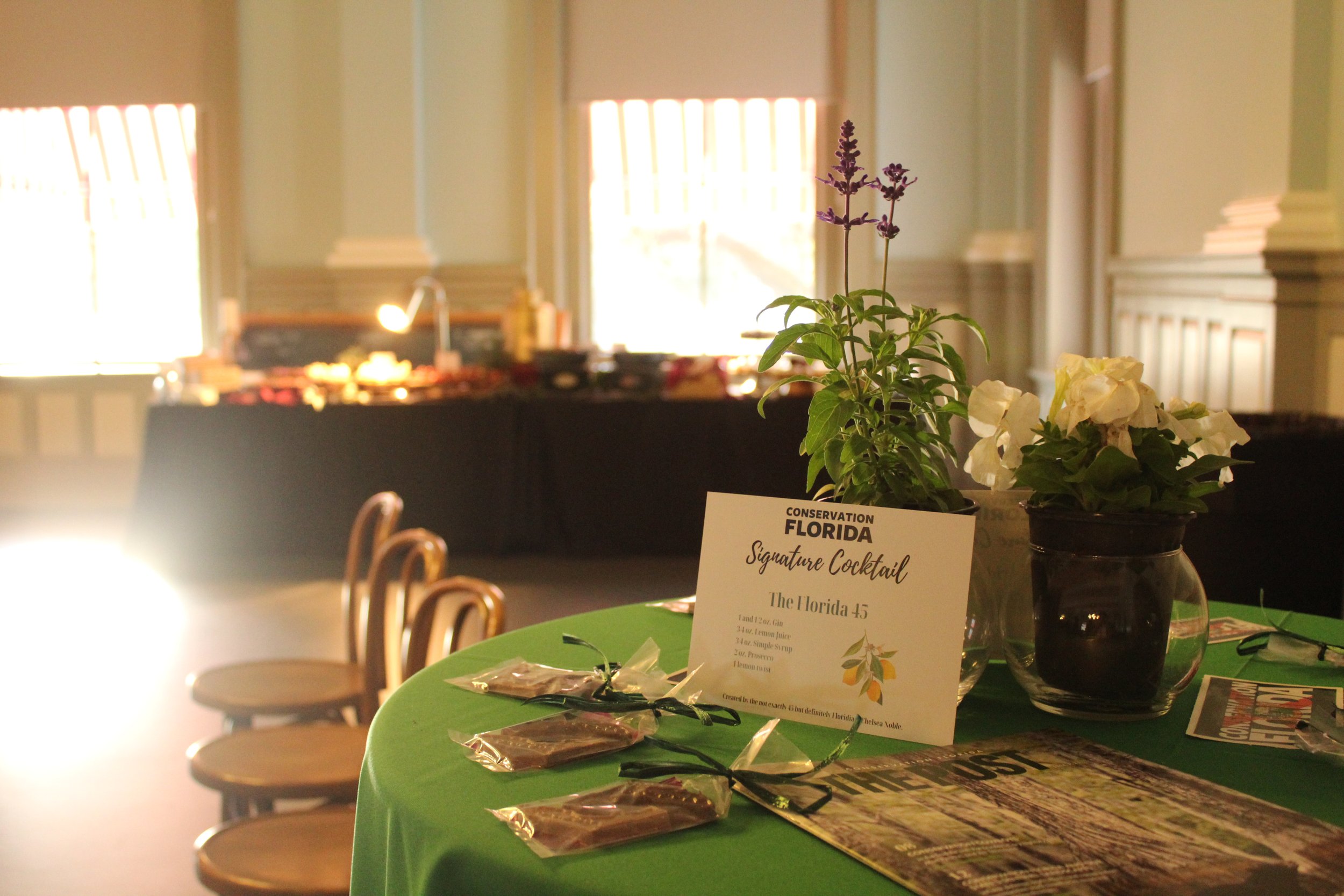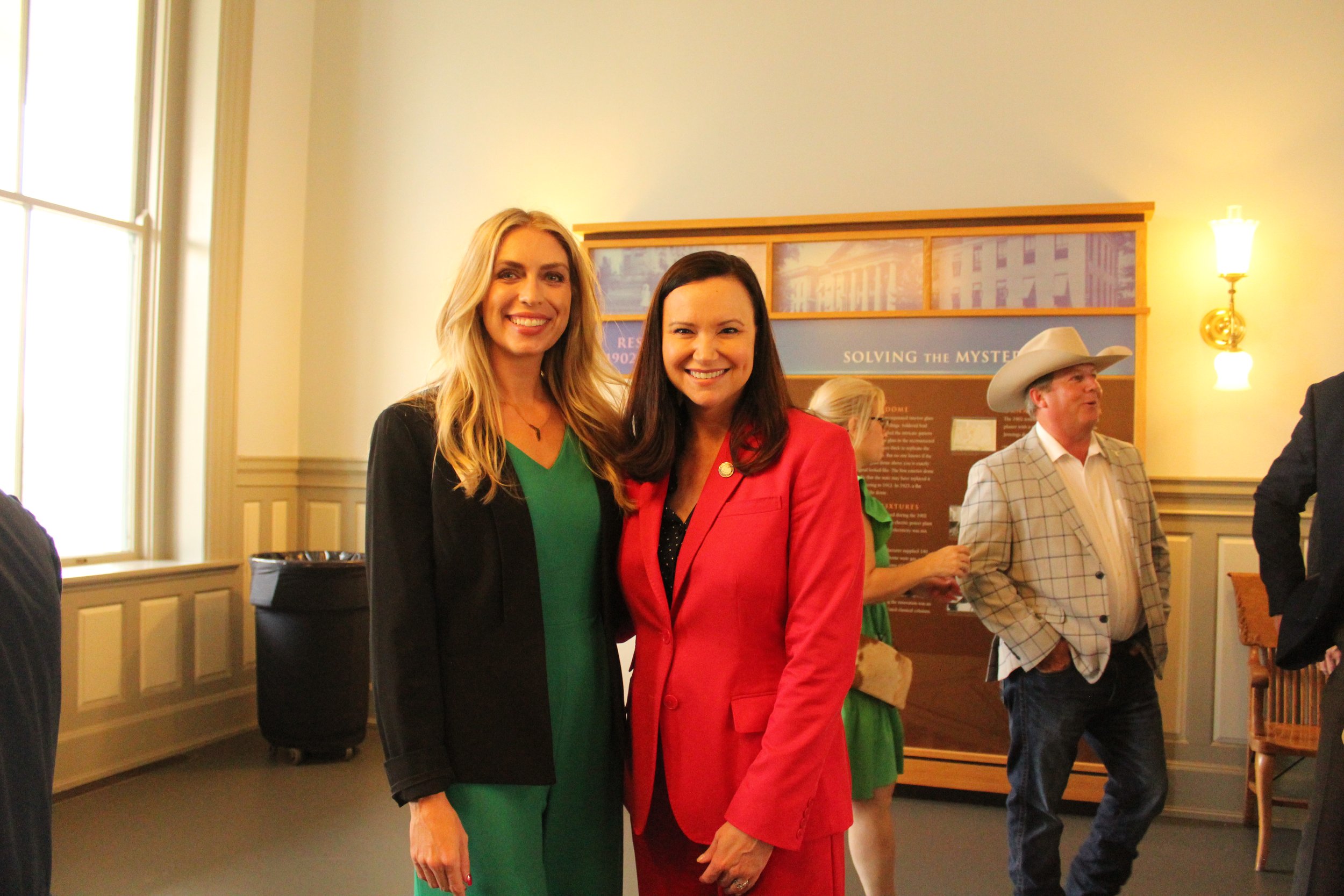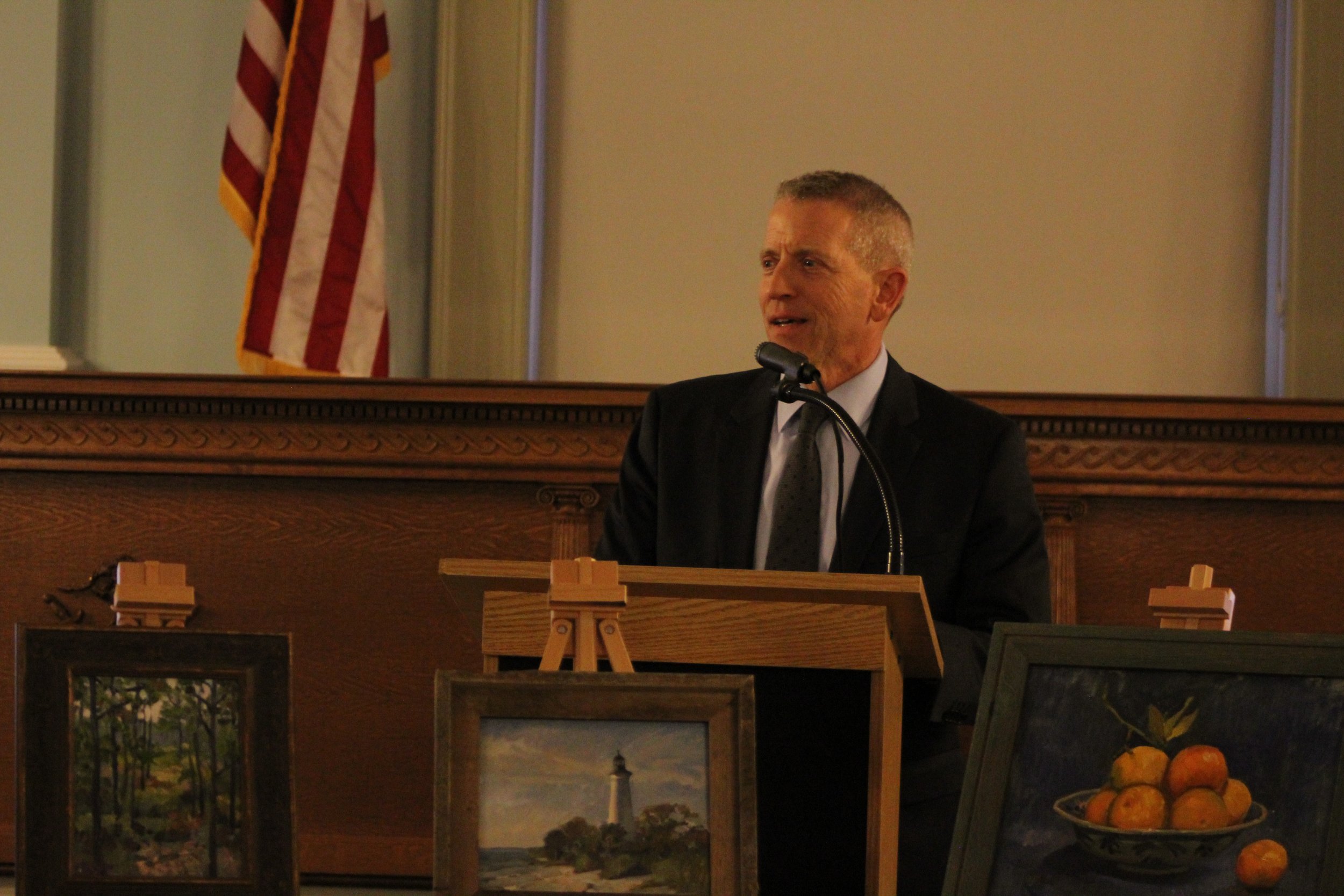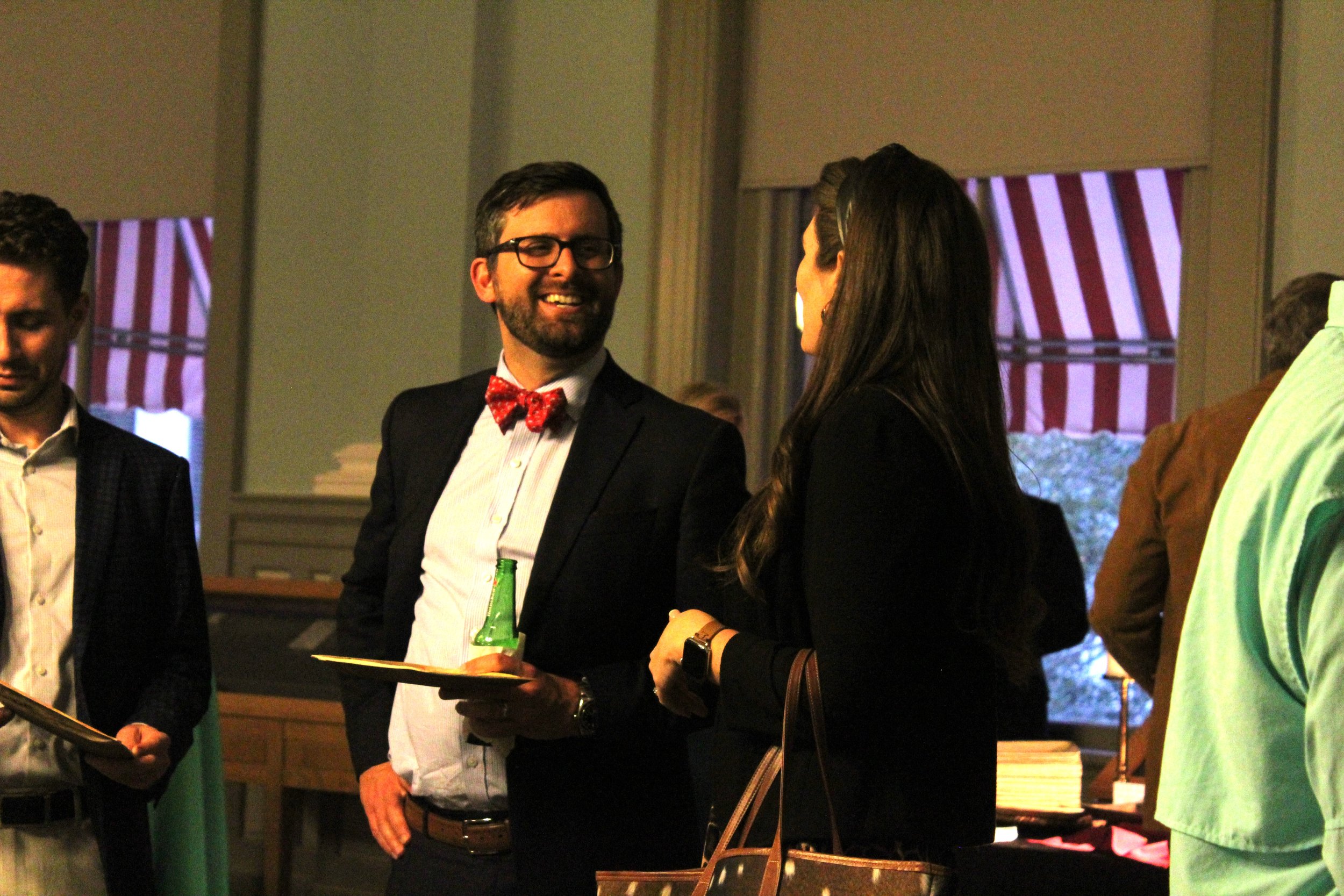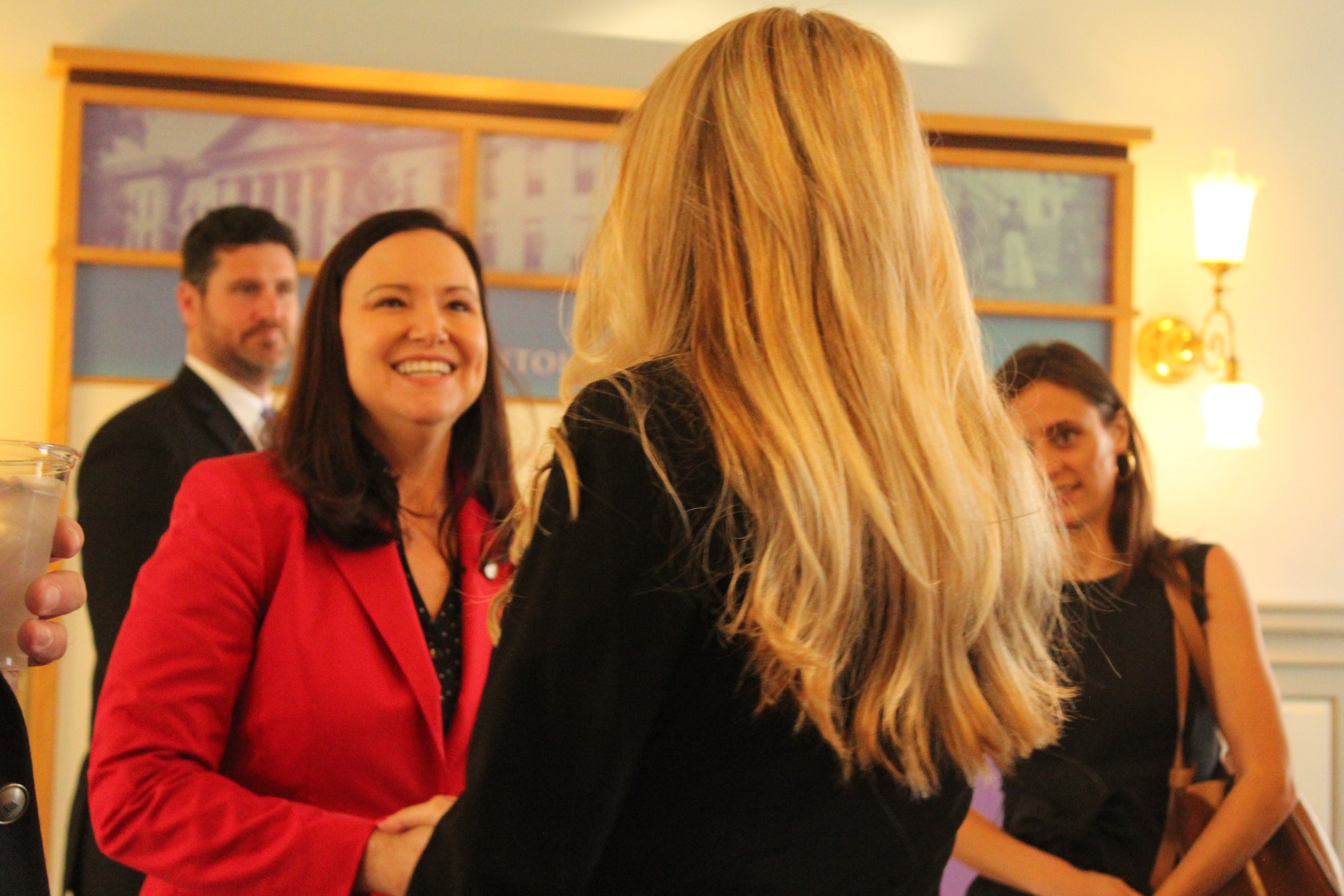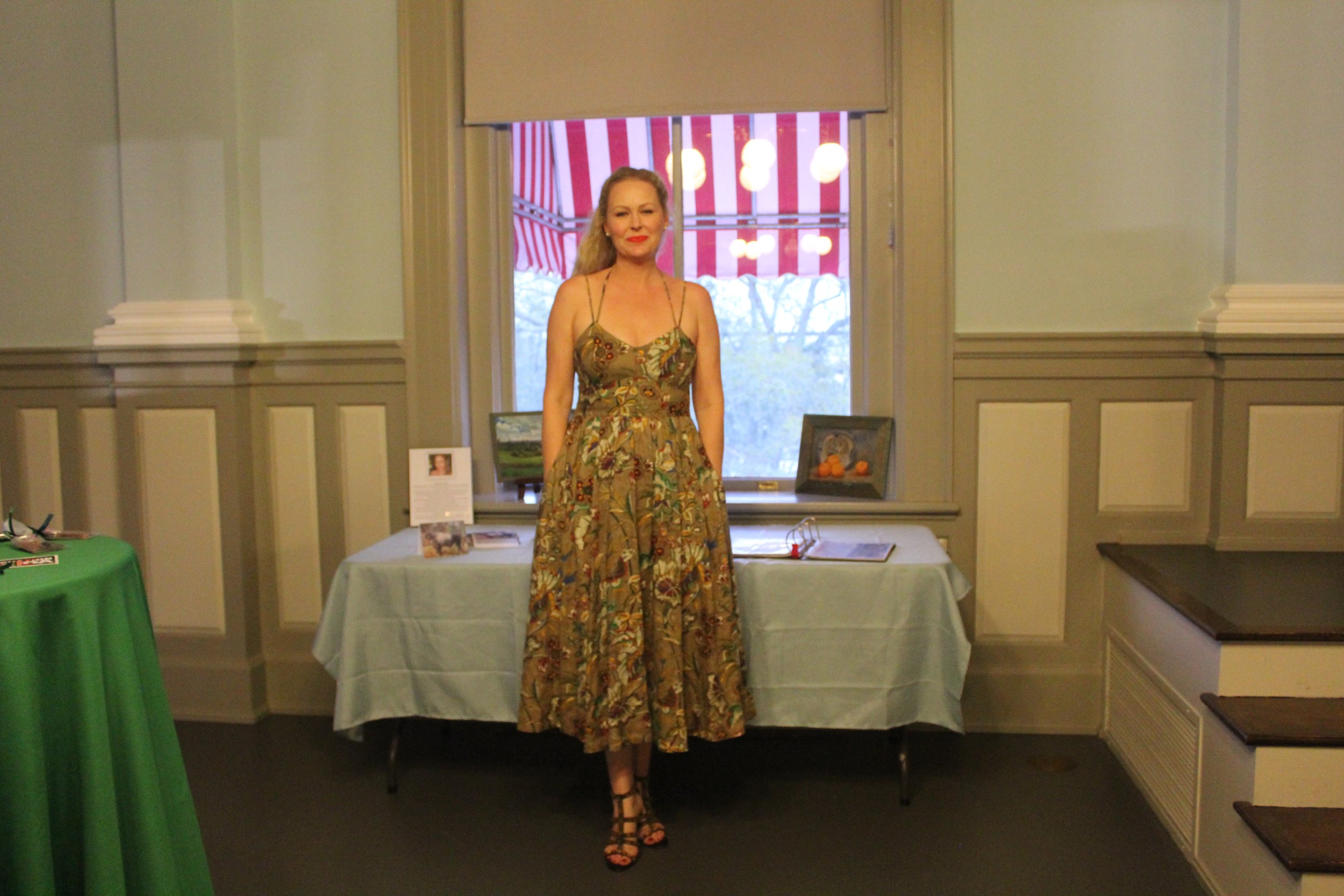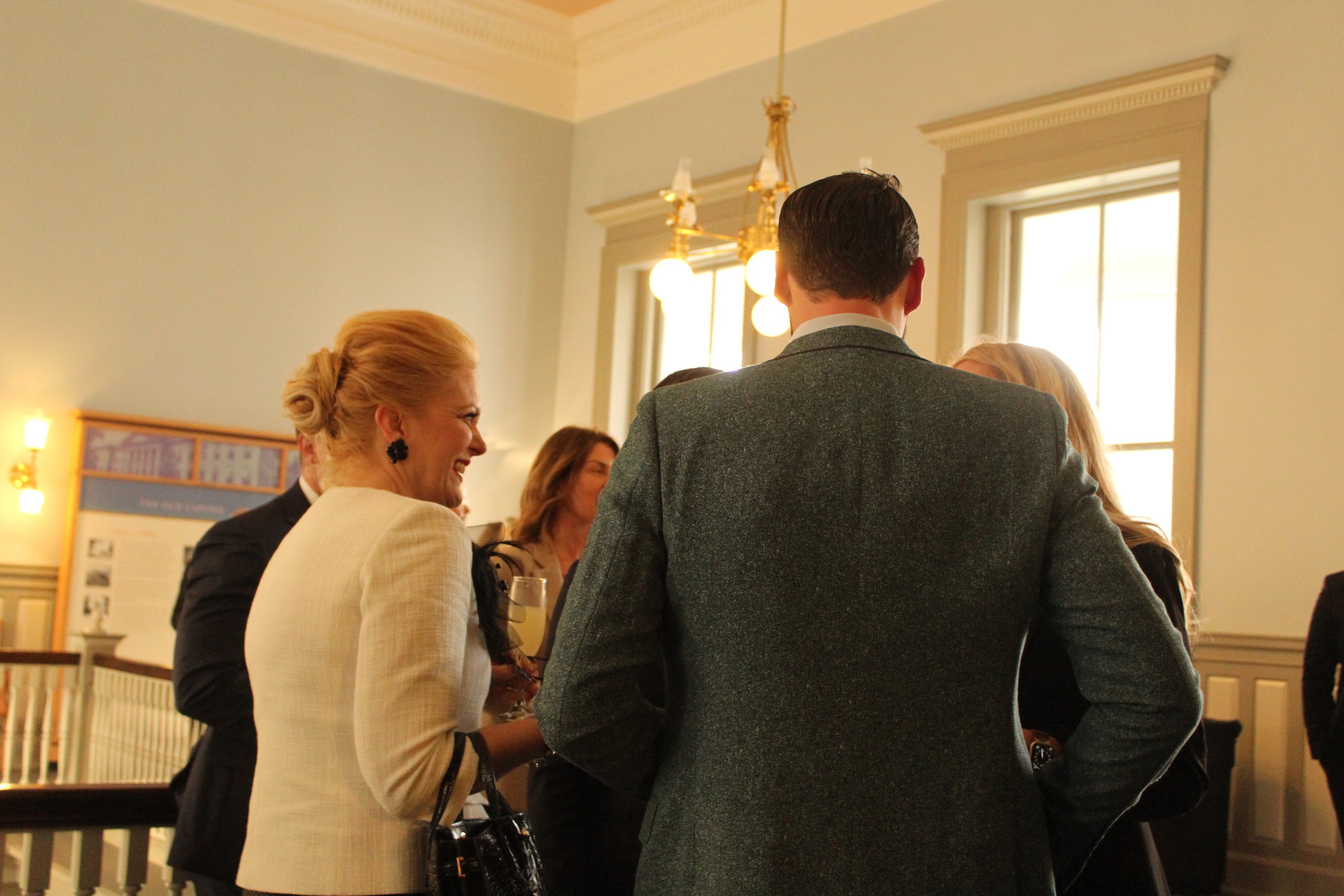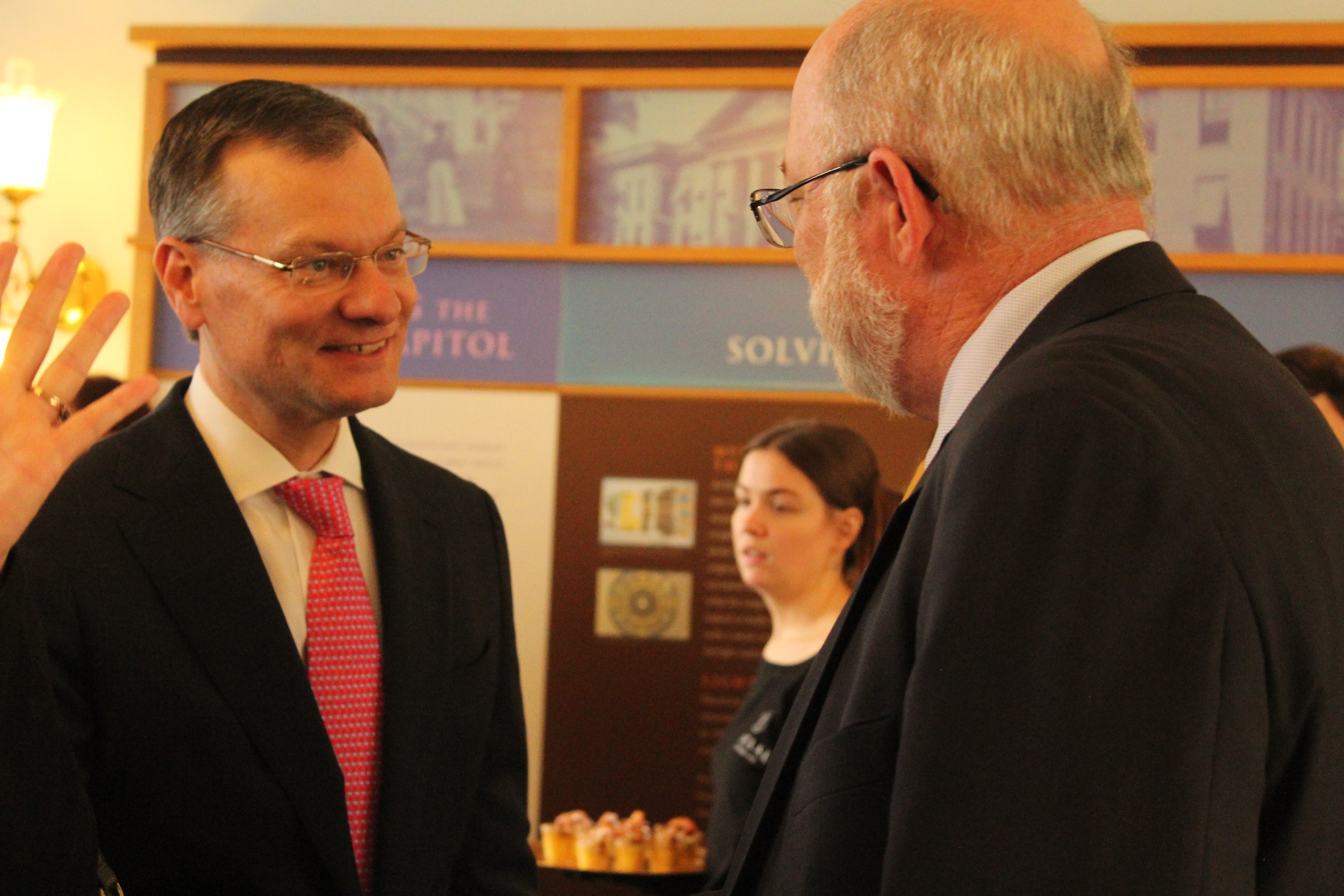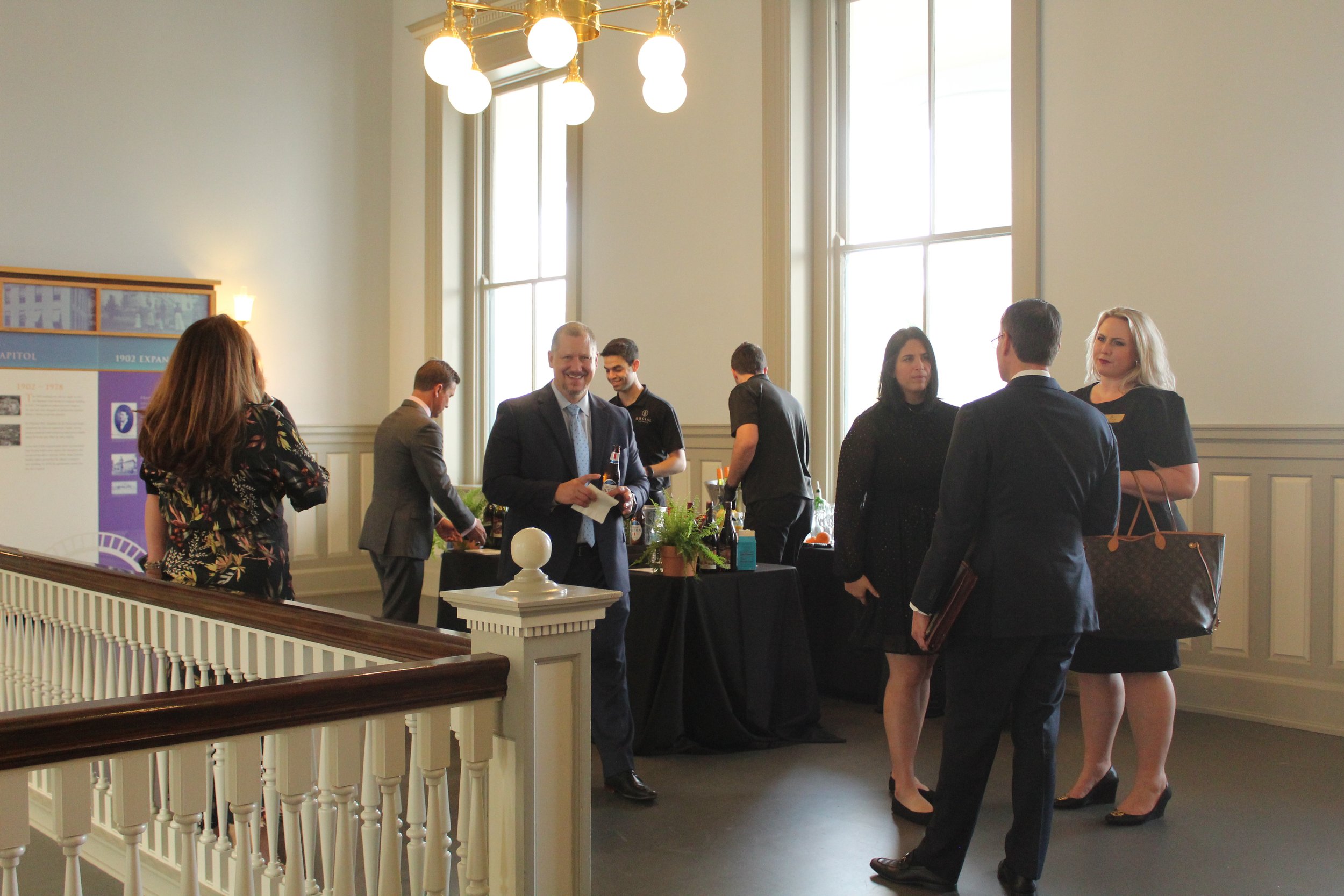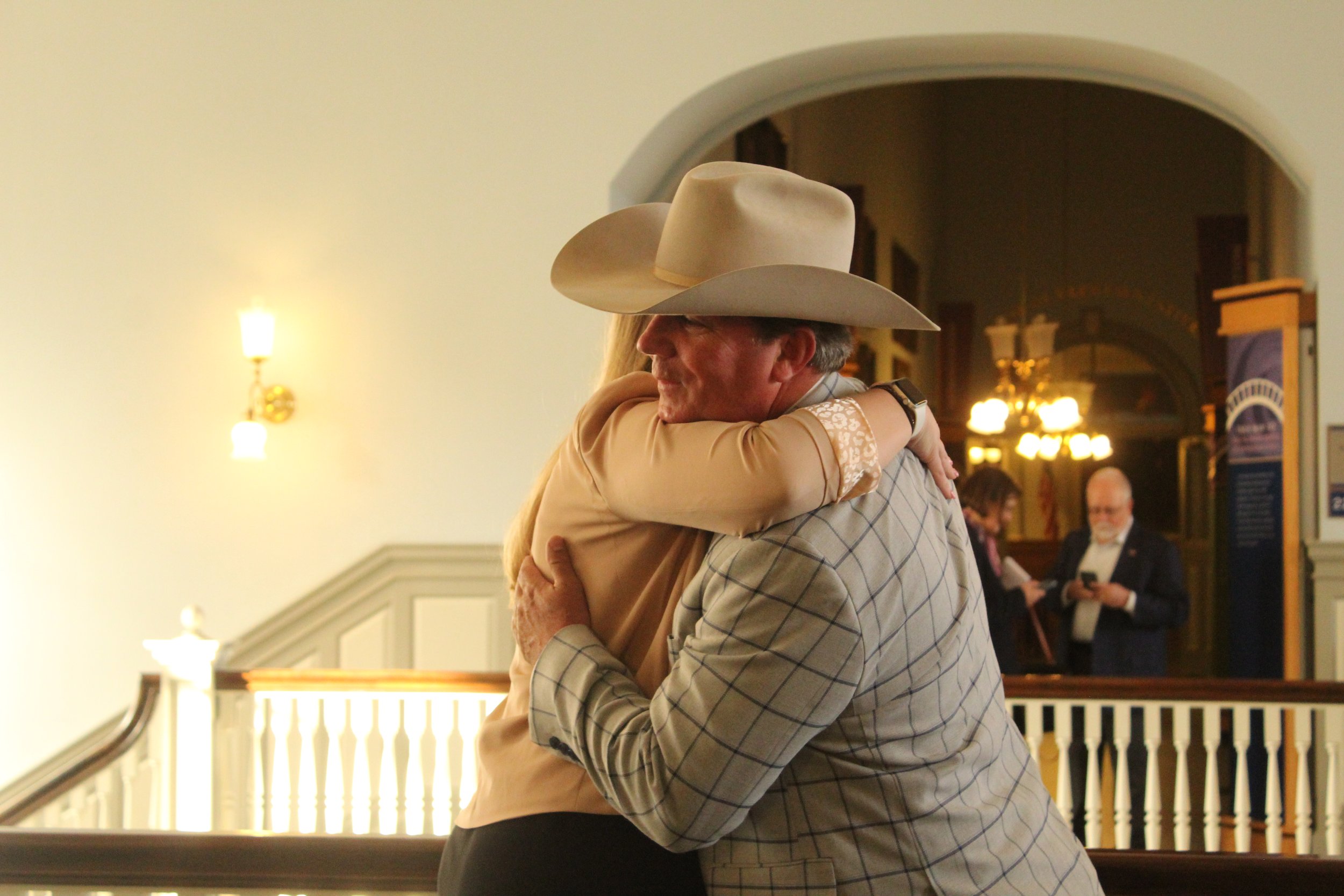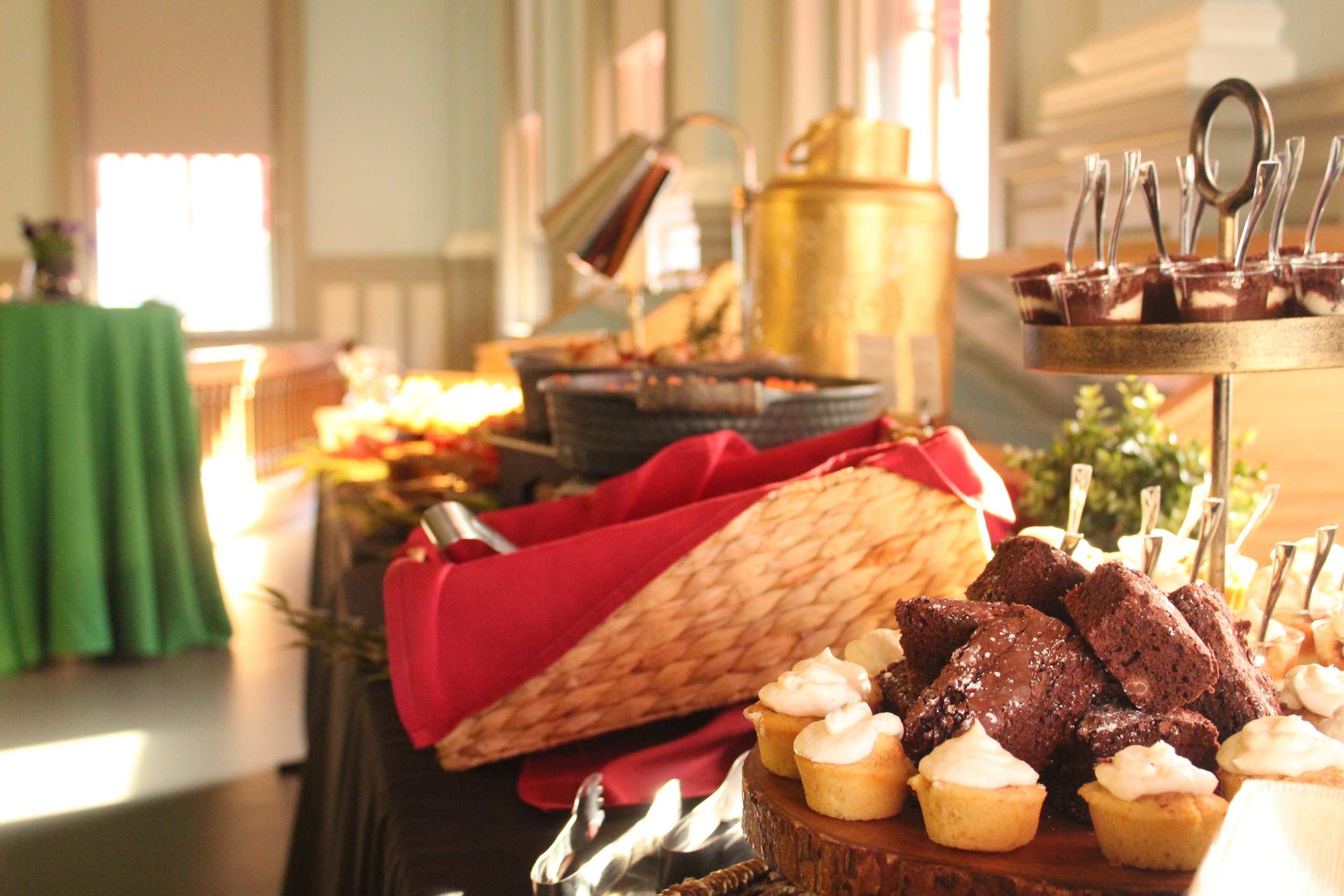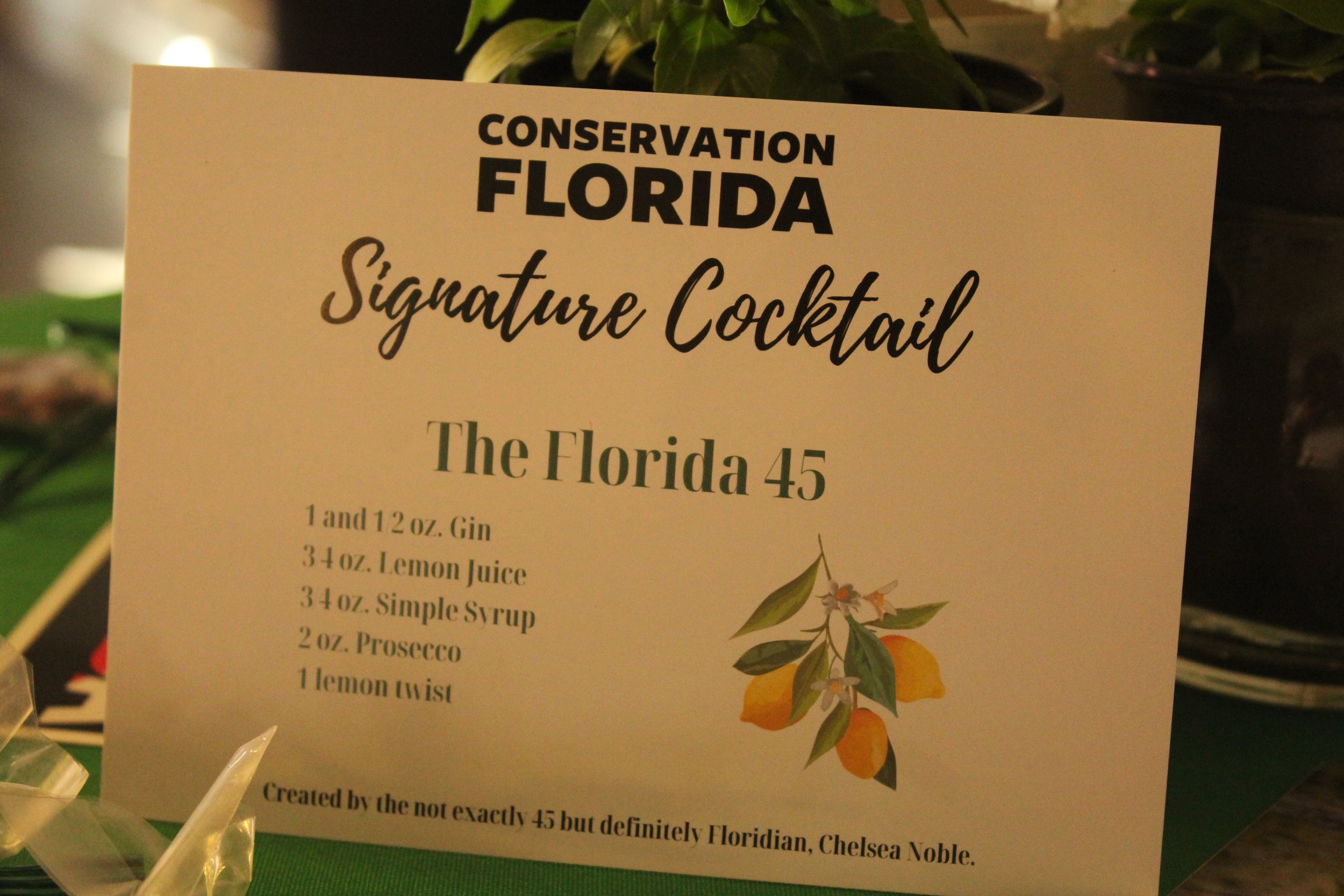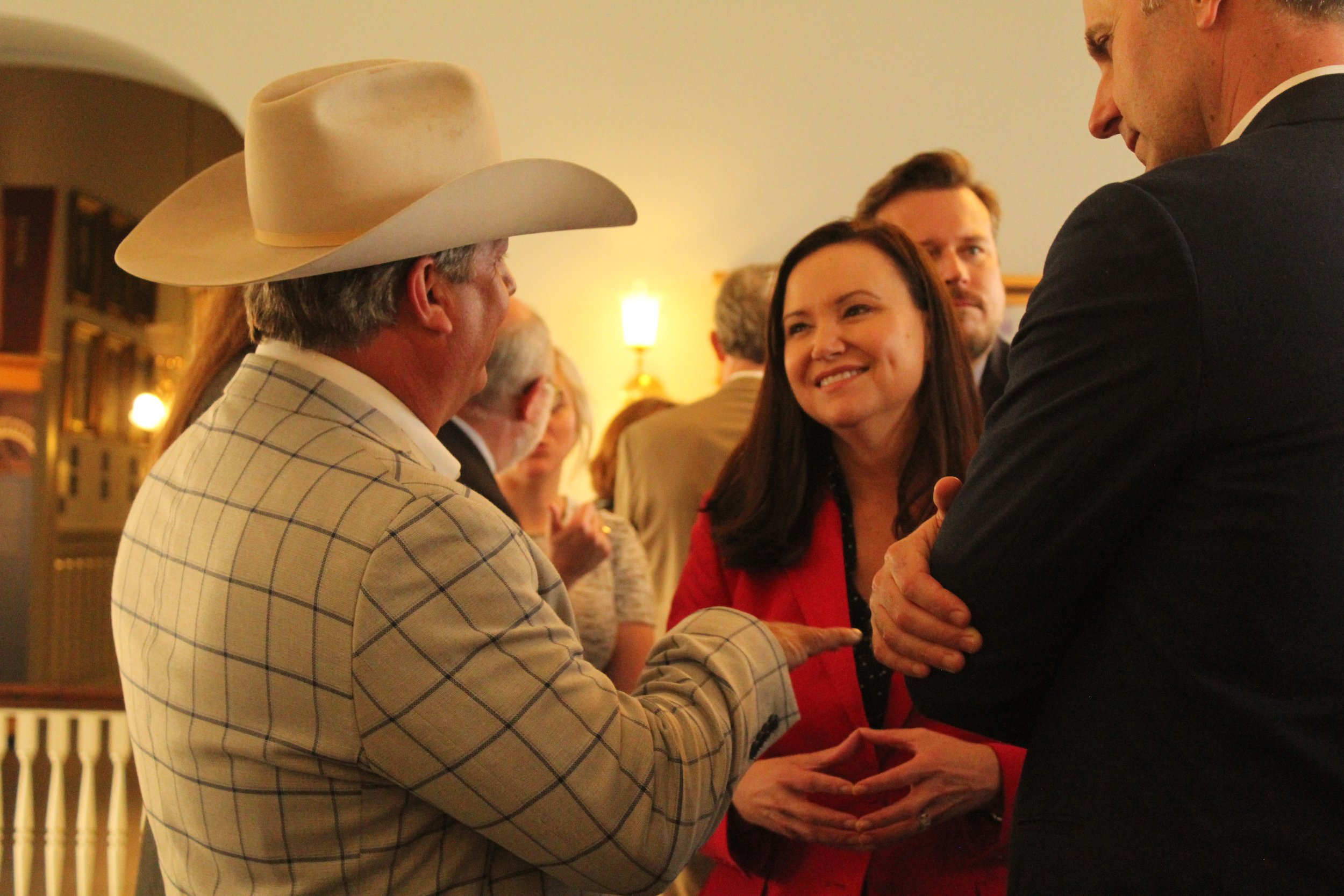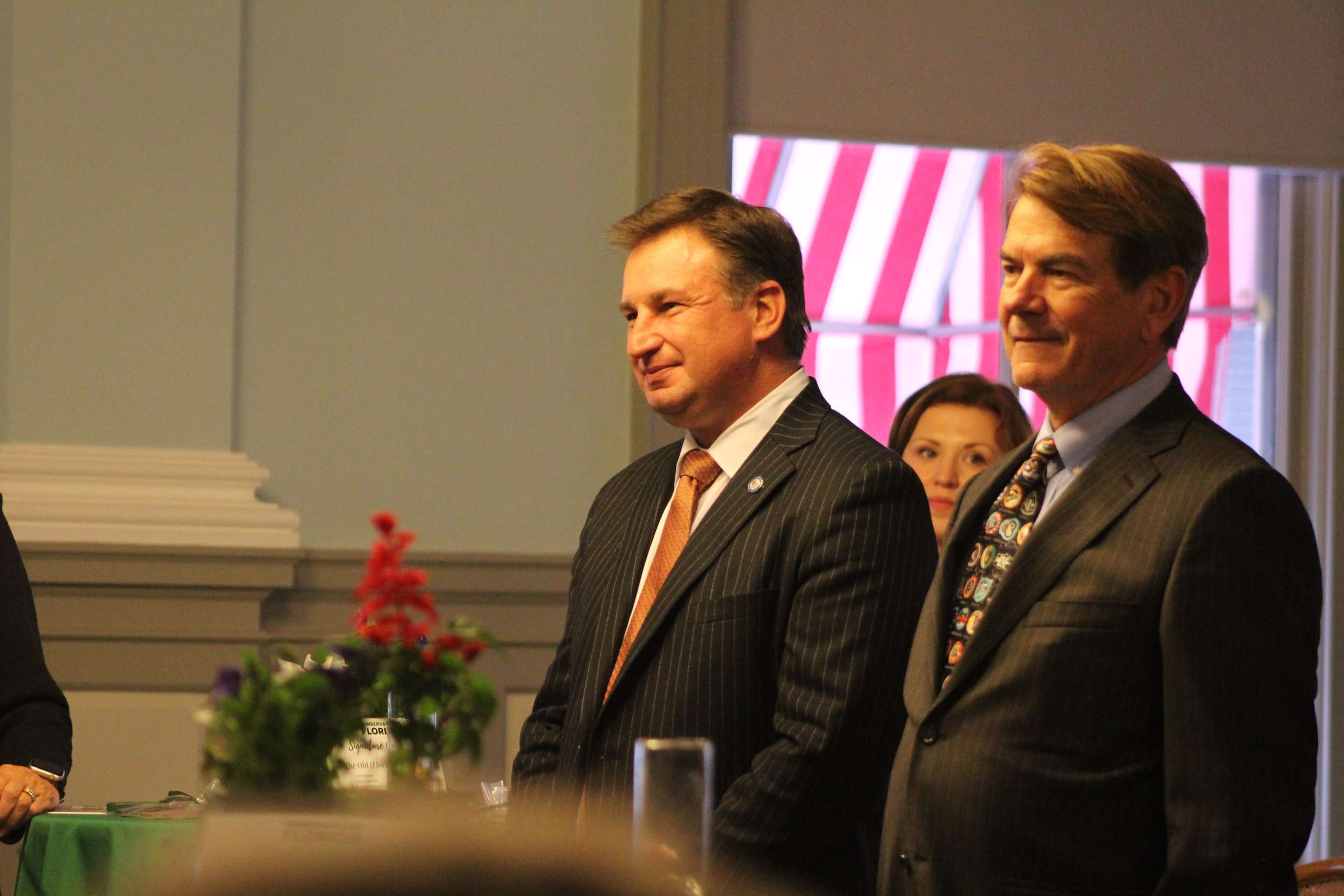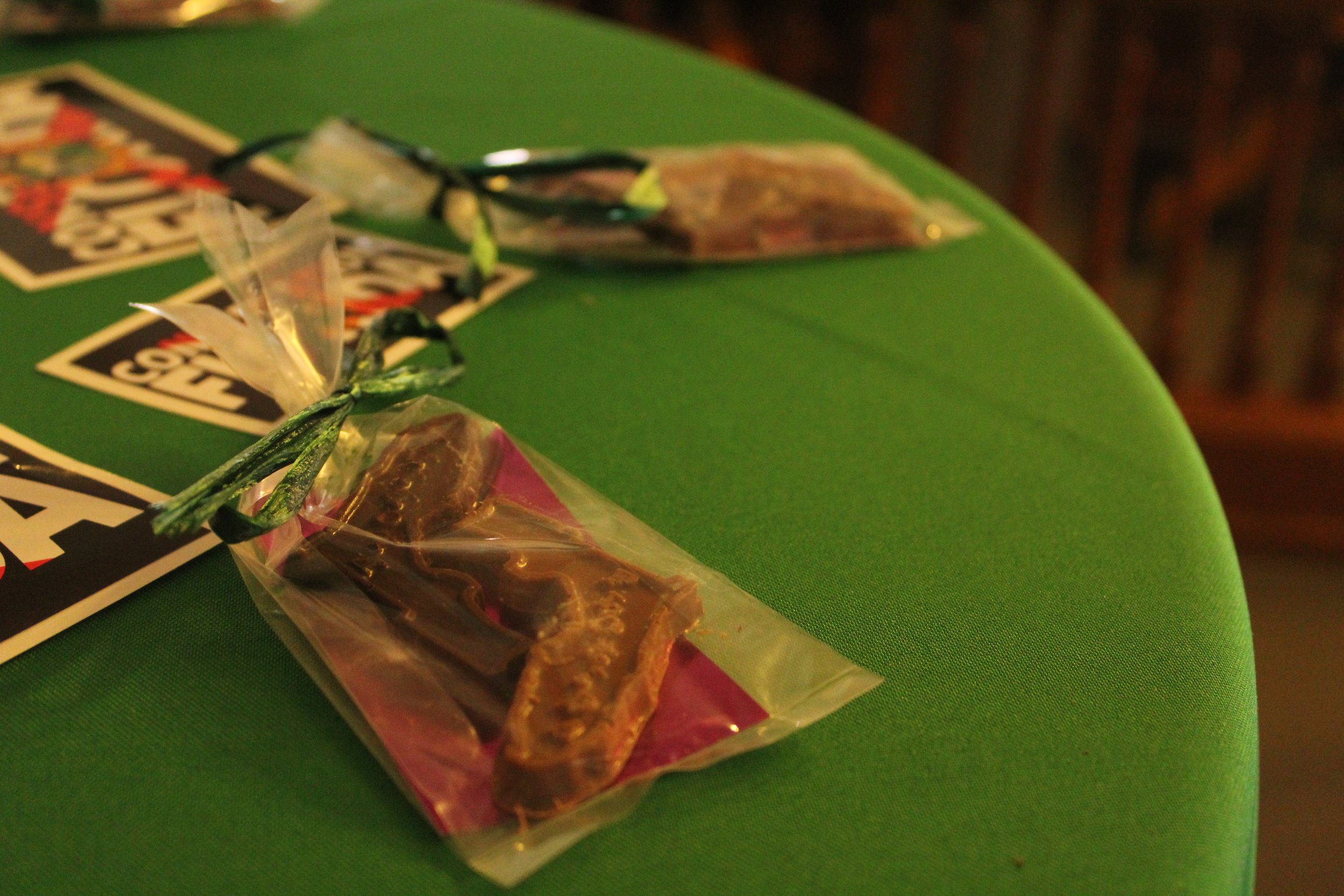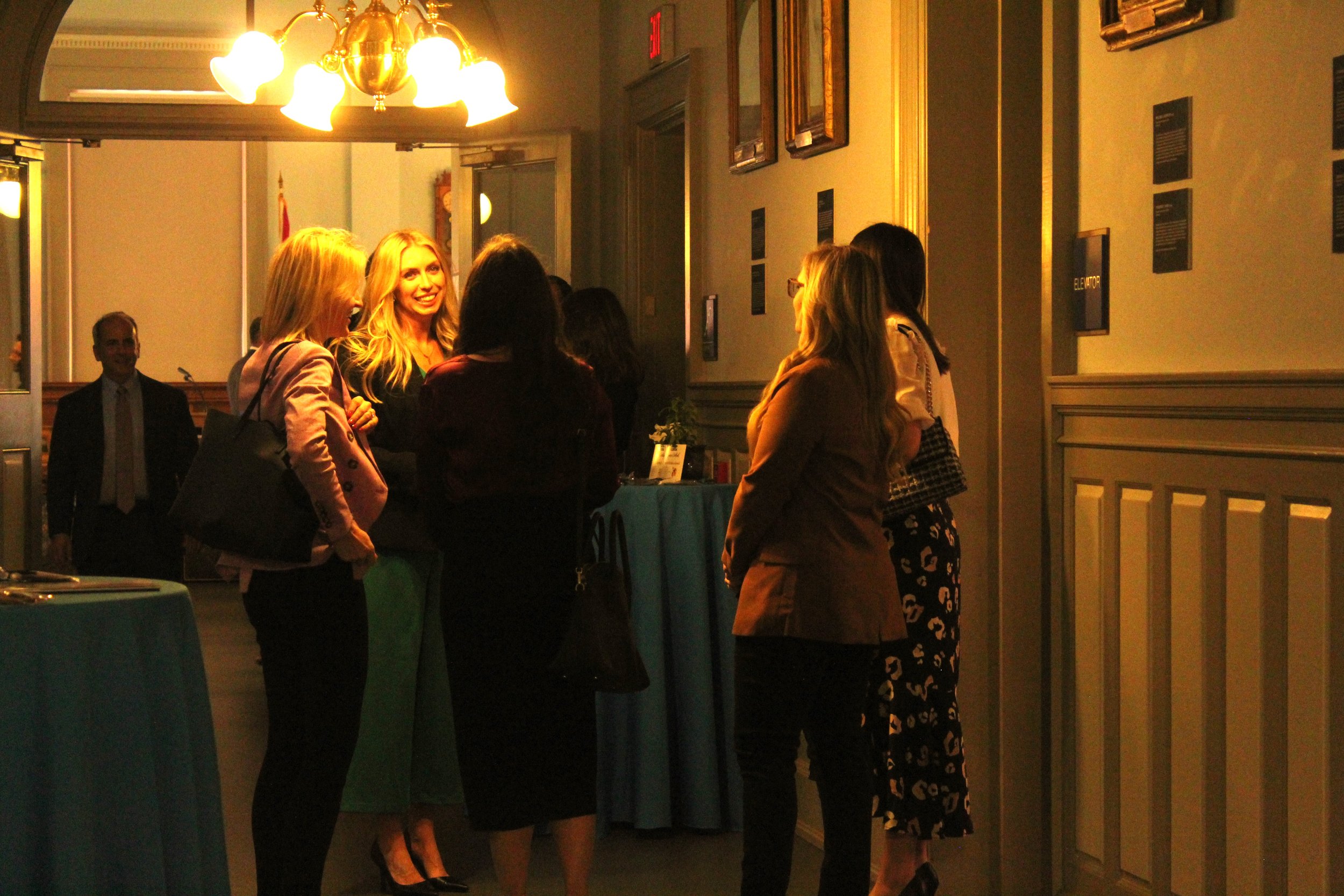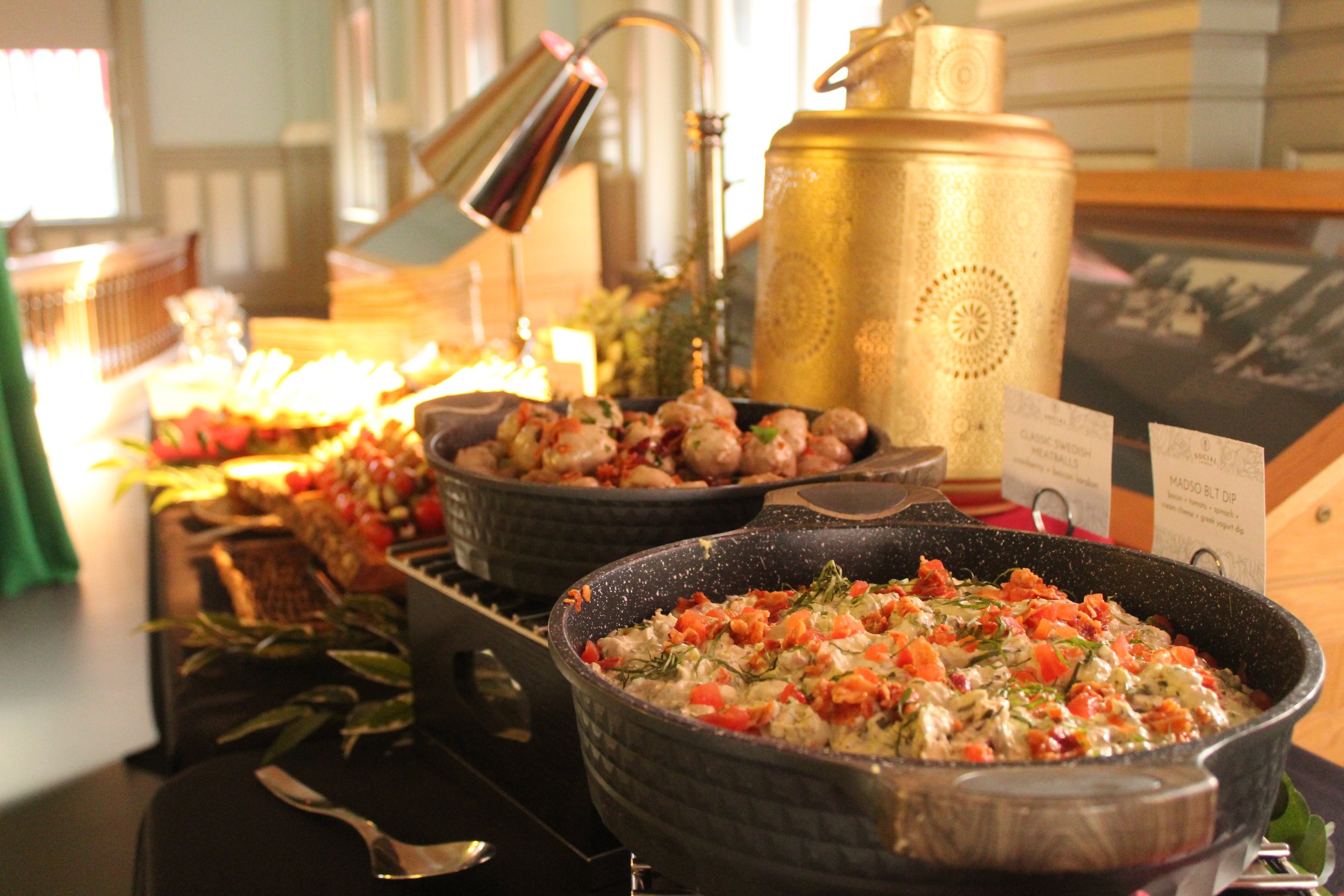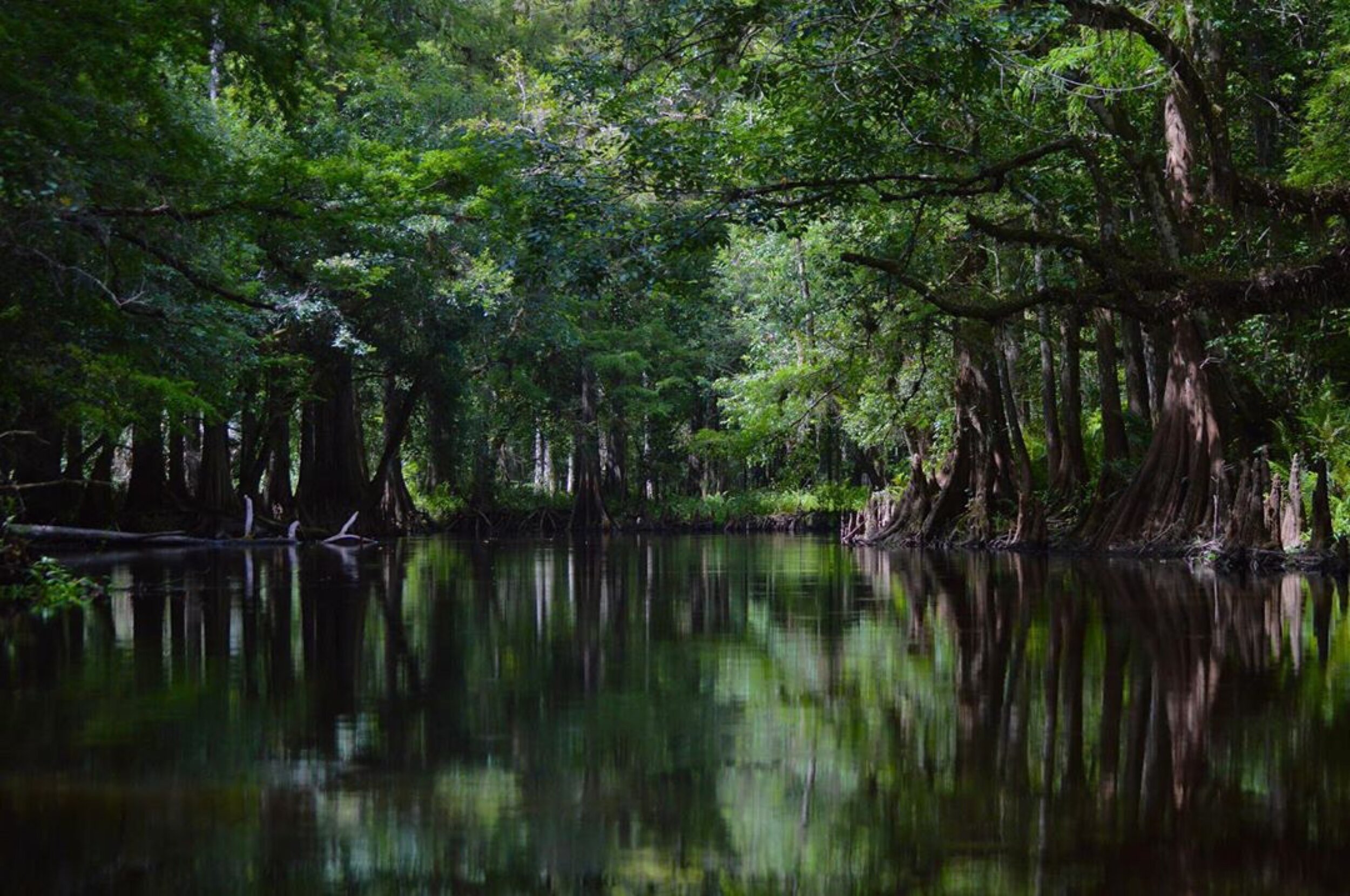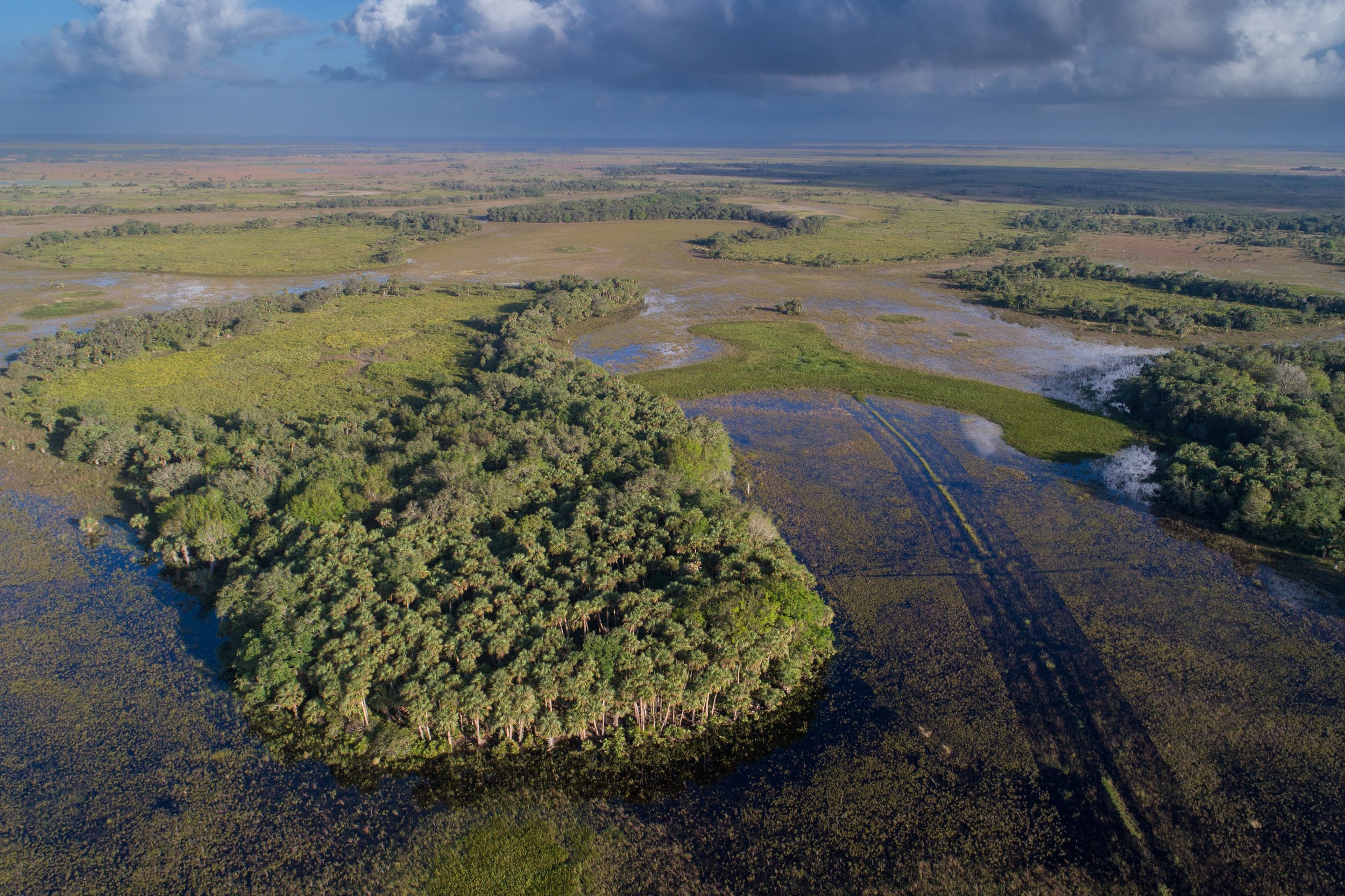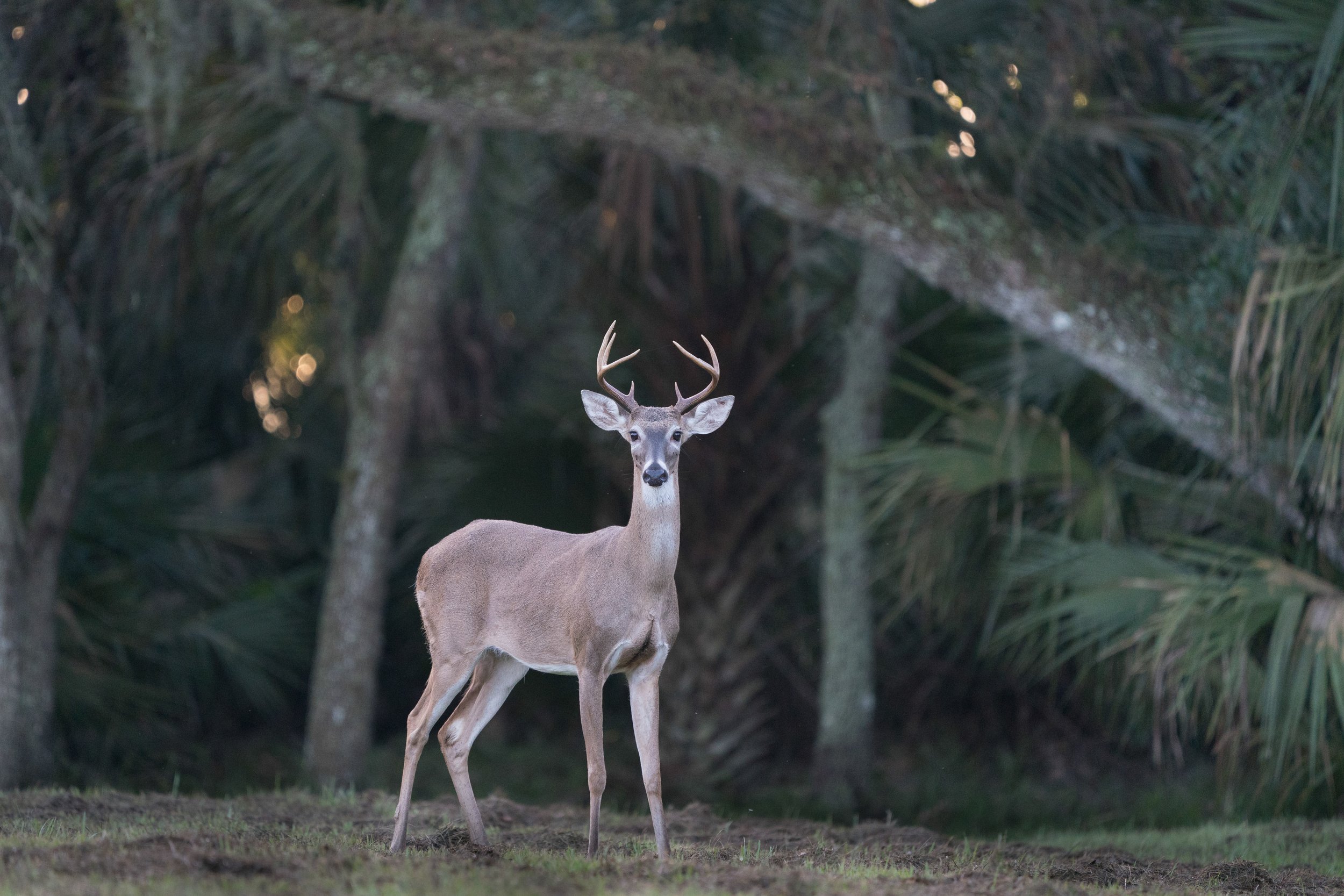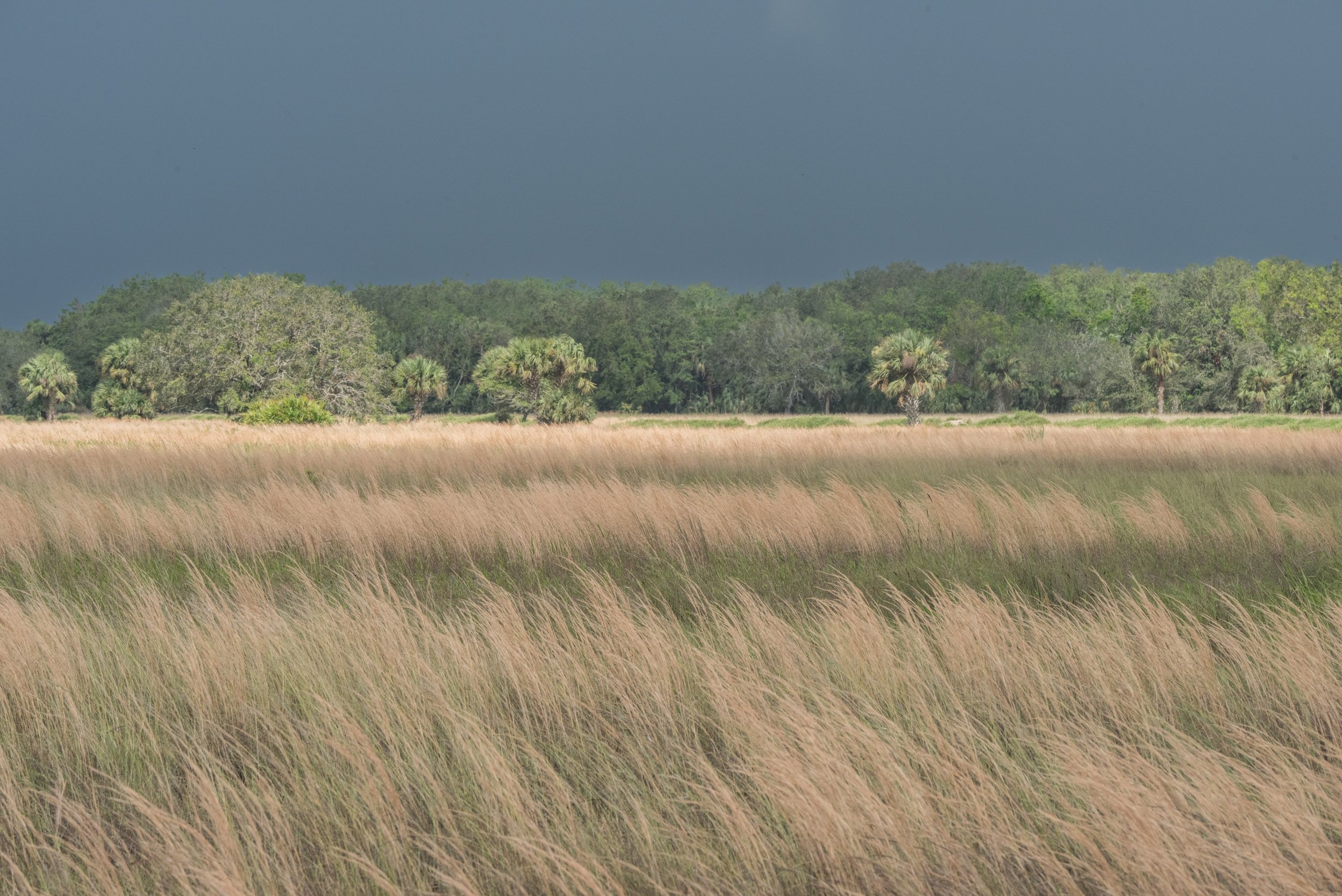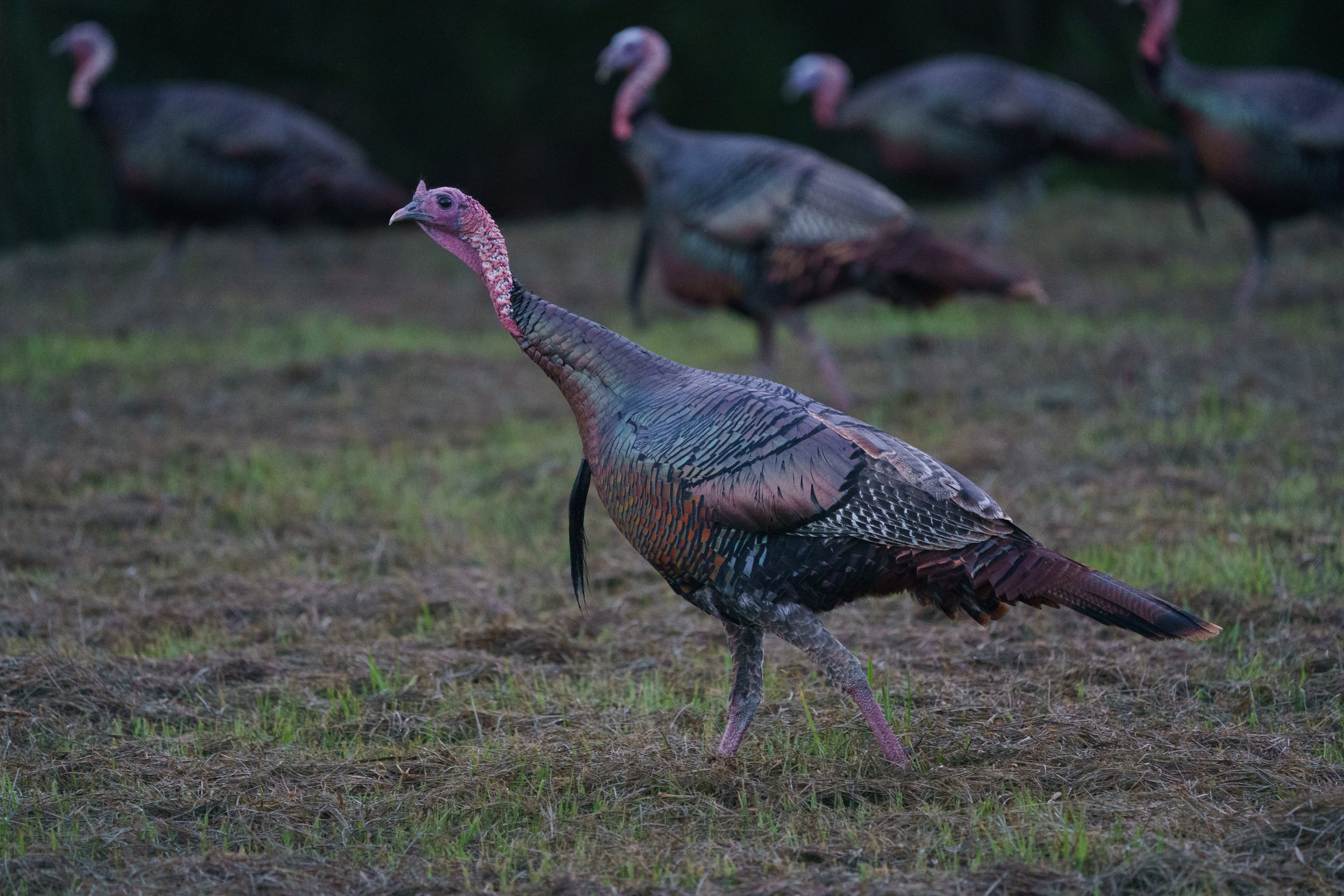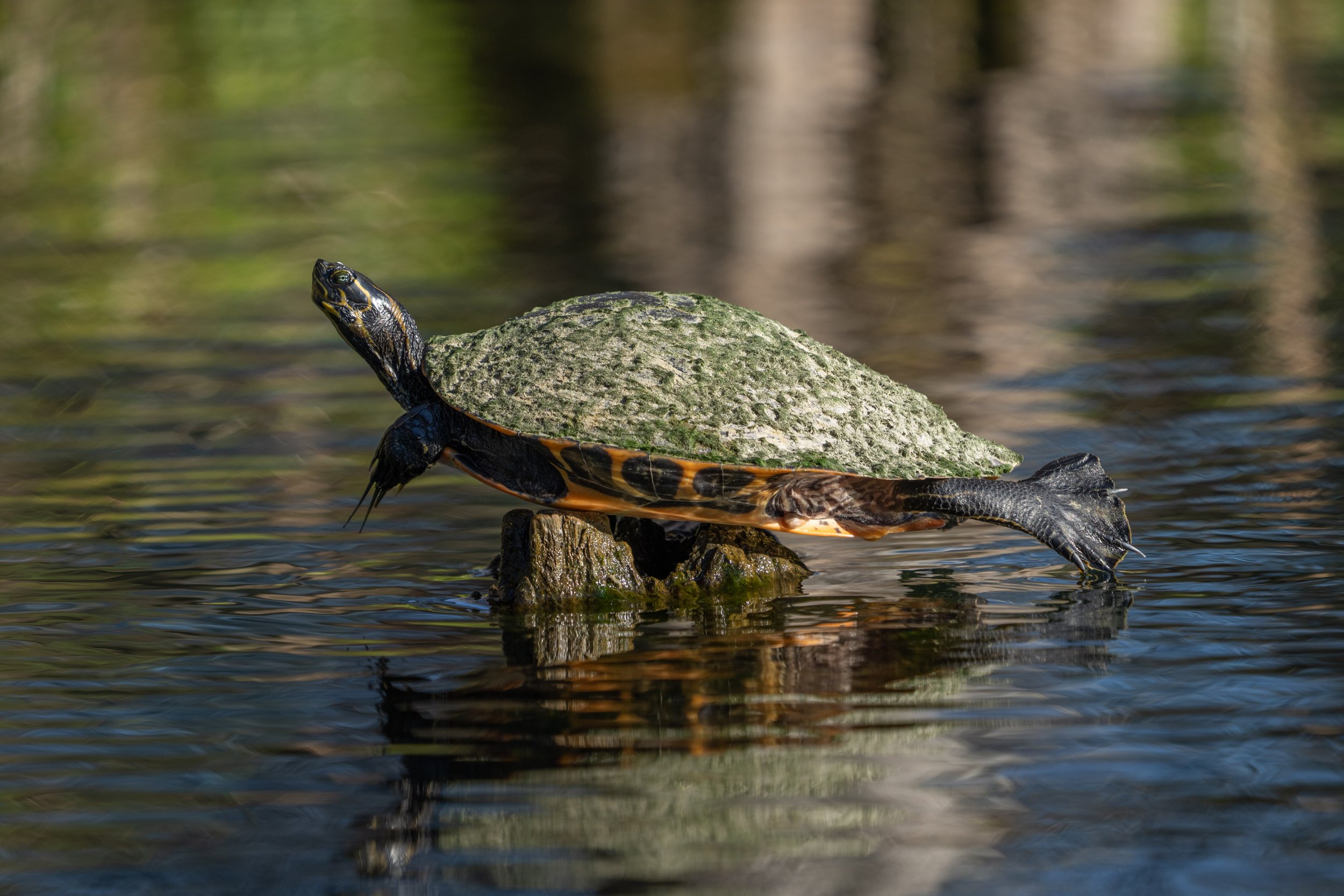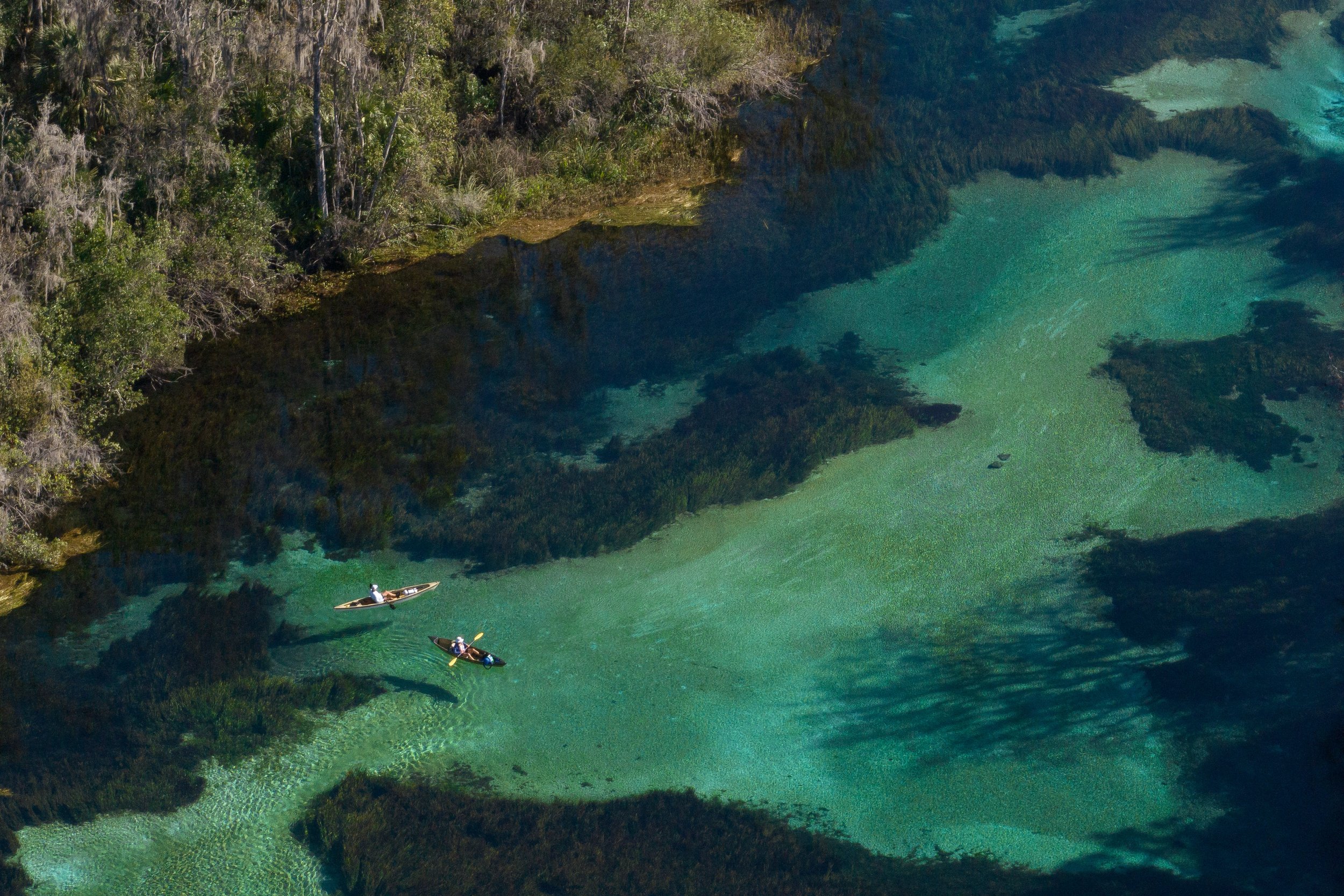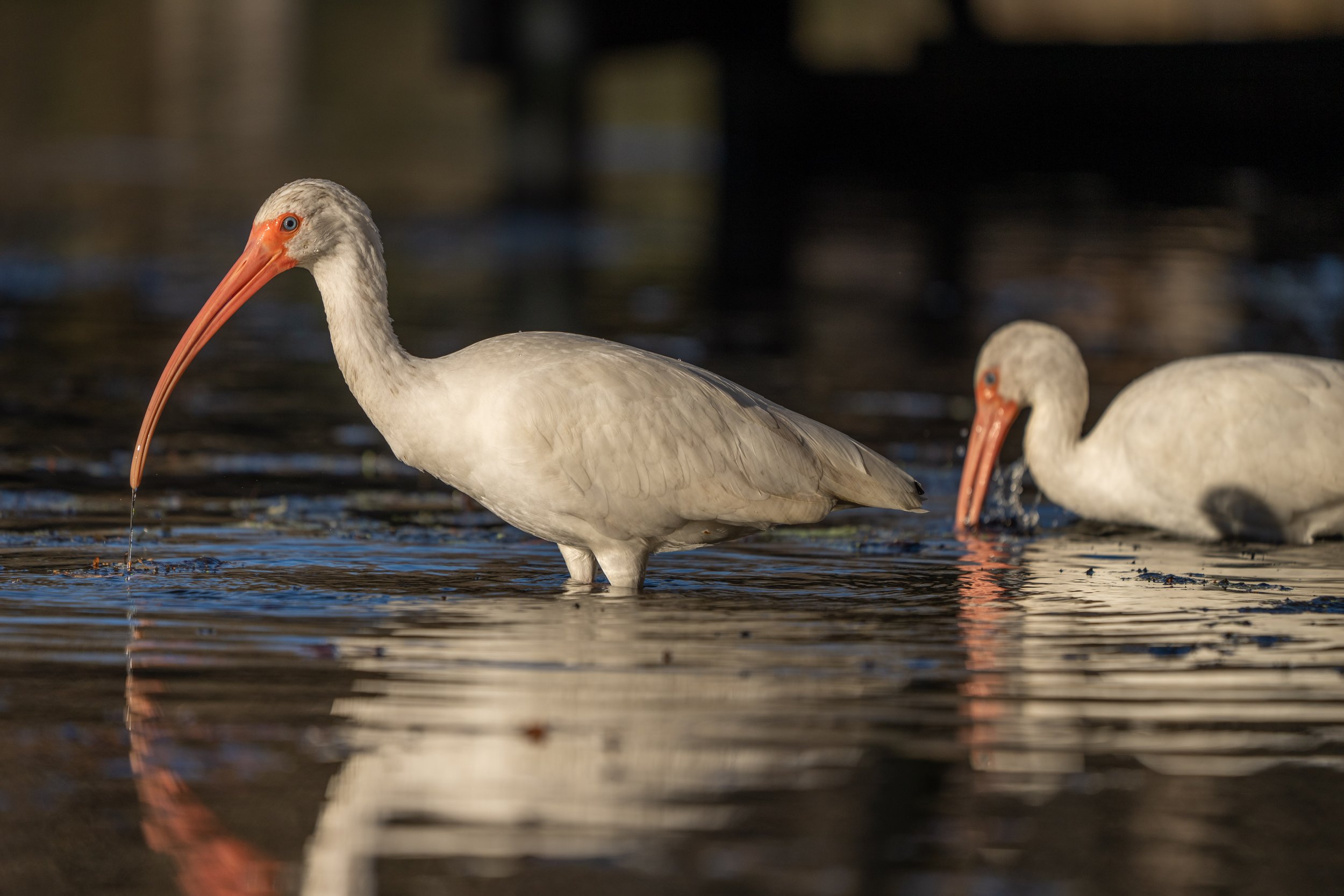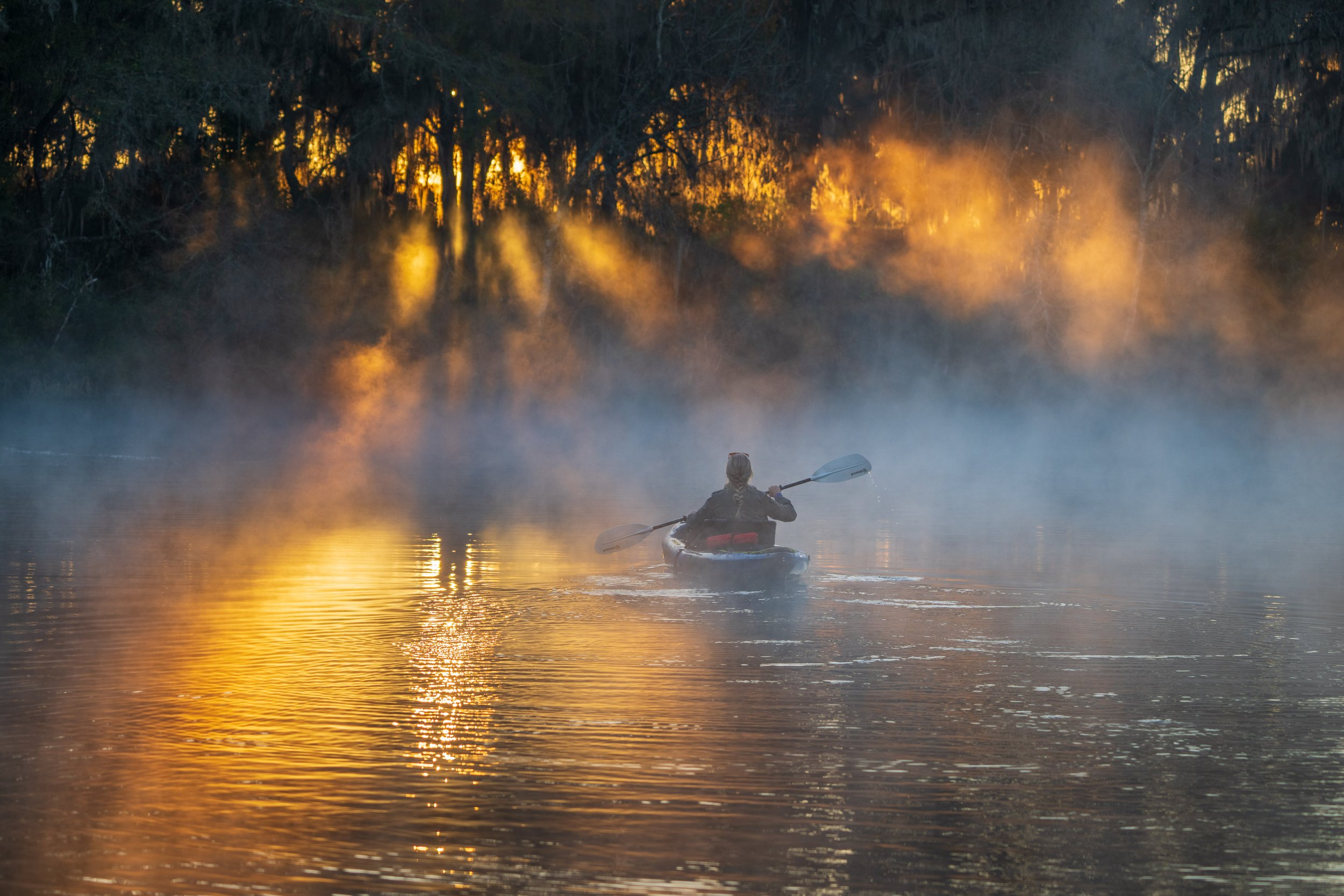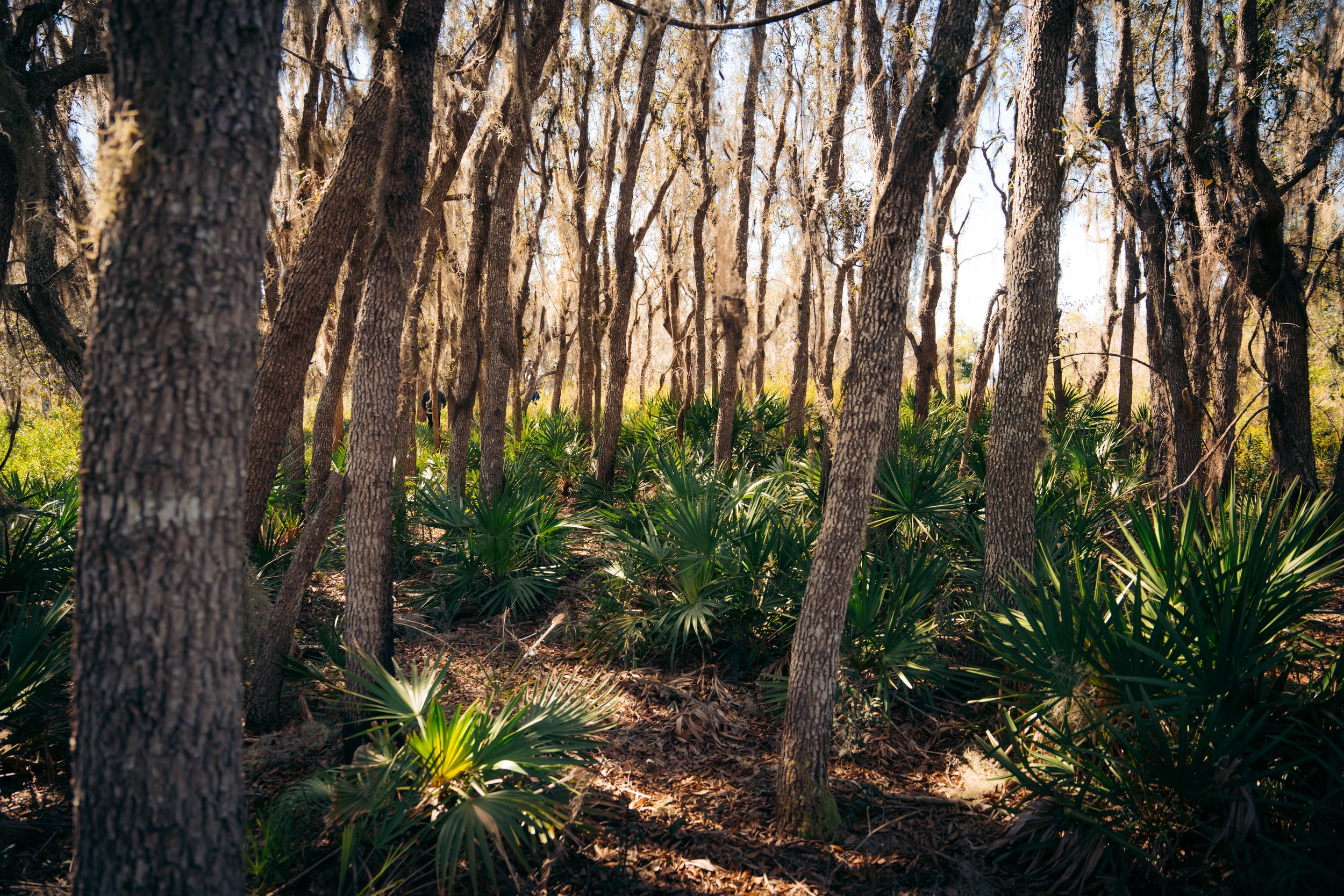
News
Conservation Florida Conducts First Prescribed Burn on D Ranch Preserve
The inaugural burn marks first in decades from fire-absent preserve
Photo by Lloyd Wilkinson.
The inaugural burn marks first in decades from fire-absent preserve
Osteen, Fla. (April x, 2023) – Conservation Florida, a dynamic driver of land conservation in Florida, conducted the first prescribed fire on D Ranch Preserve in decades, thanks to partial funding from the U.S. Fish and Wildlife Service's Partners for Fish and Wildlife.
D Ranch Preserve covers 476 acres in Osteen, Florida, within the City of Deltona, bordering the Lake Monroe Conservation Area, which is managed by the St. Johns River Water Management District. The preserve once served as a ranch and cow/calf operation for decades, but is now a place of refuge for wildlife. Currently, Conservation Florida is in the process of enhancing and restoring the habitats for wildlife use, and implementing prescribed fire is a large part of this process. The first burn on the property marks the beginning of maintenance burning, necessary for land where prescribed burning has been absent.
Conservation Florida's stewardship program works to improve the condition of our conservation lands.
“We do this by identifying the natural resource issues of our properties and exploring ways to implement certain land management measures to solve these issues in an environmentally beneficial and most cost-effective way,” explained Land Steward at Conservation Florida, Mark Rizzo. “On D Ranch Preserve, stewardship is done through conducting prescribed burns and silvicultural activities, controlling invasive species, monitoring plants and animals, and conducting enhancement and restoration activities.
On this property, stewardship is done through conducting prescribed burns, removing species from lands, introducing species to land, controlling invasive species, monitoring plants and animals, and conducting enhancement and restoration activities.
The preserve contains a mixture of several habitats such as critical Florida scrub habitat, scrubby flatwoods, mesic flatwoods, and depression marsh, all comprising native Florida species.
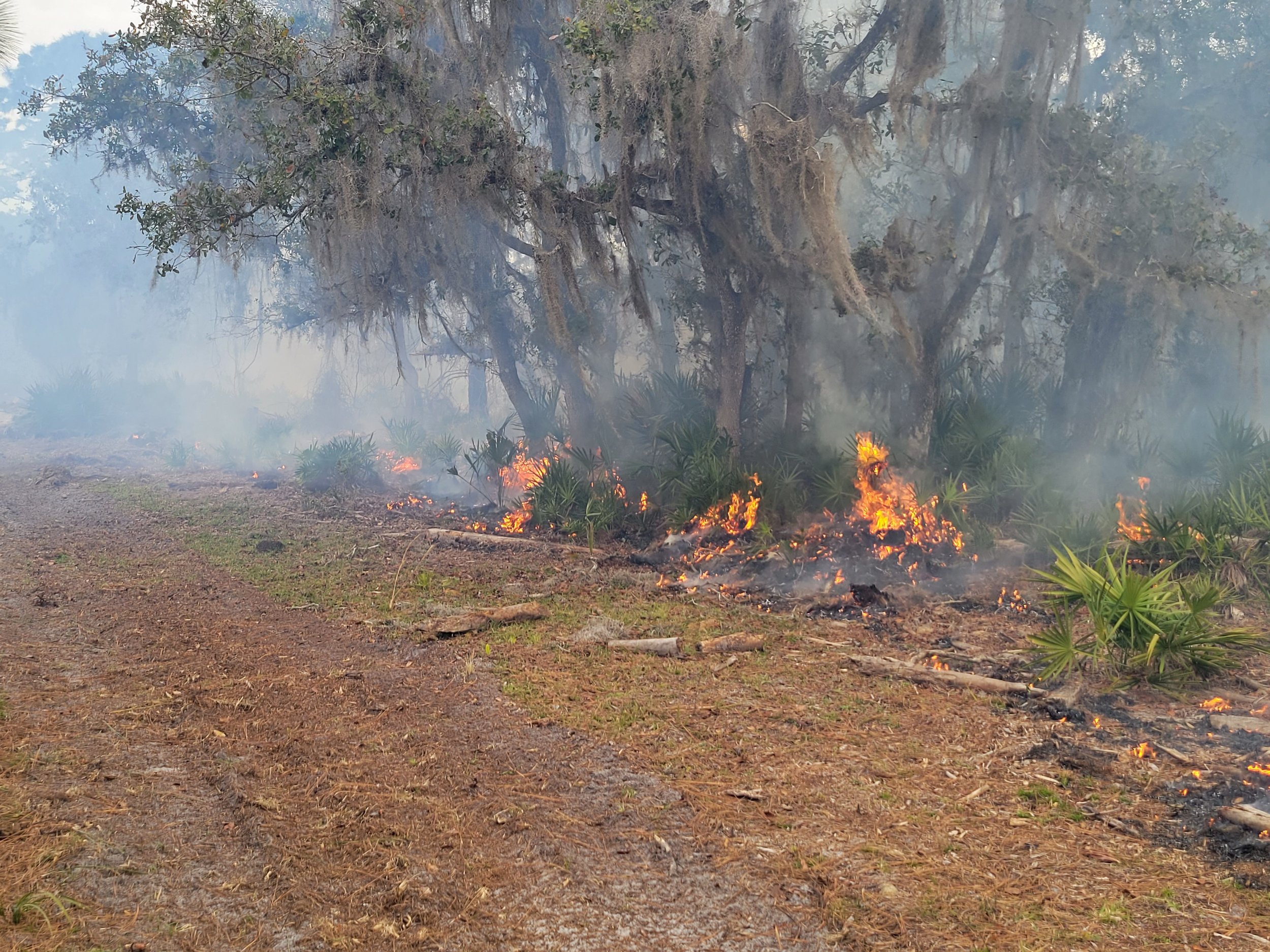
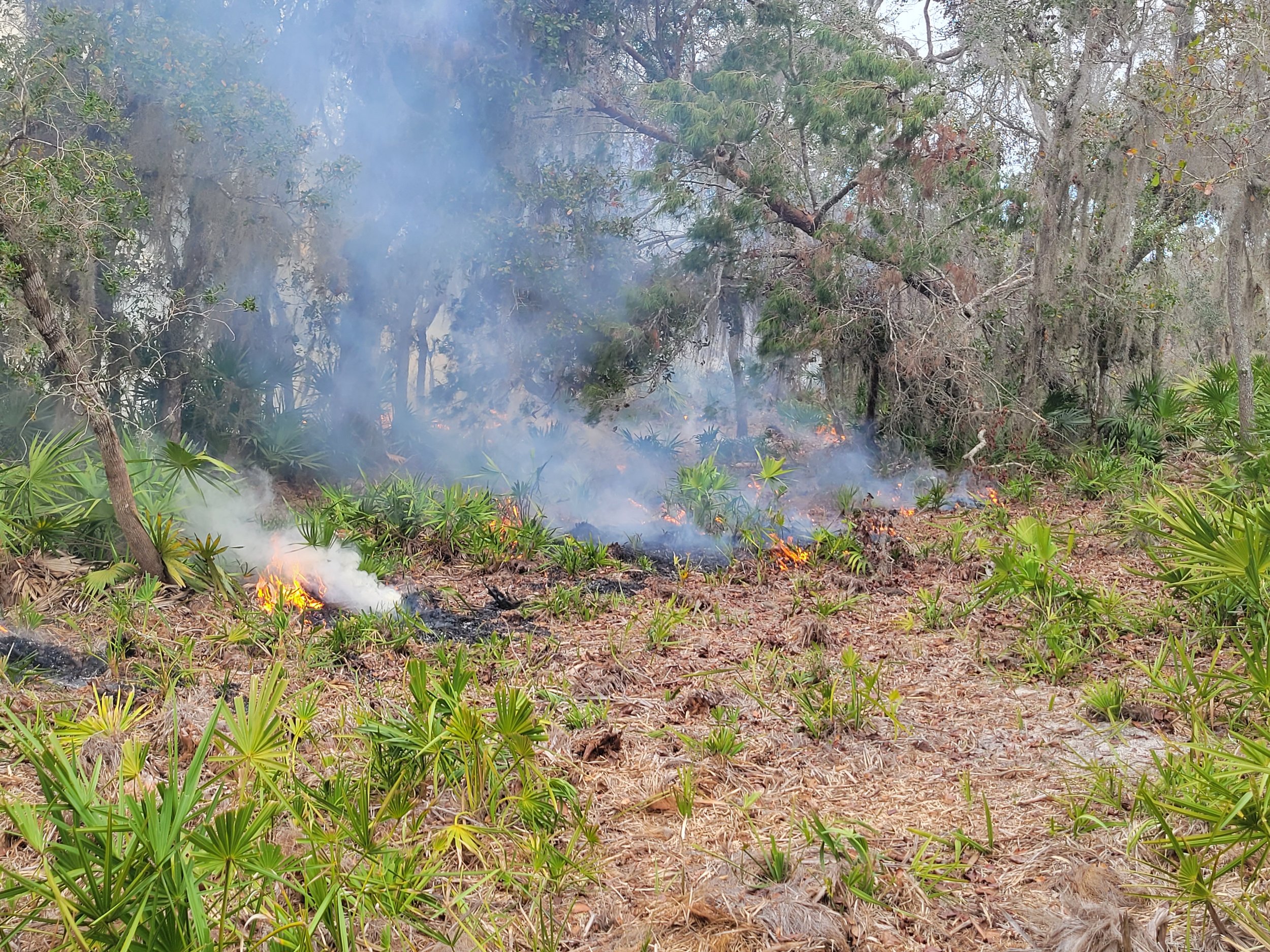
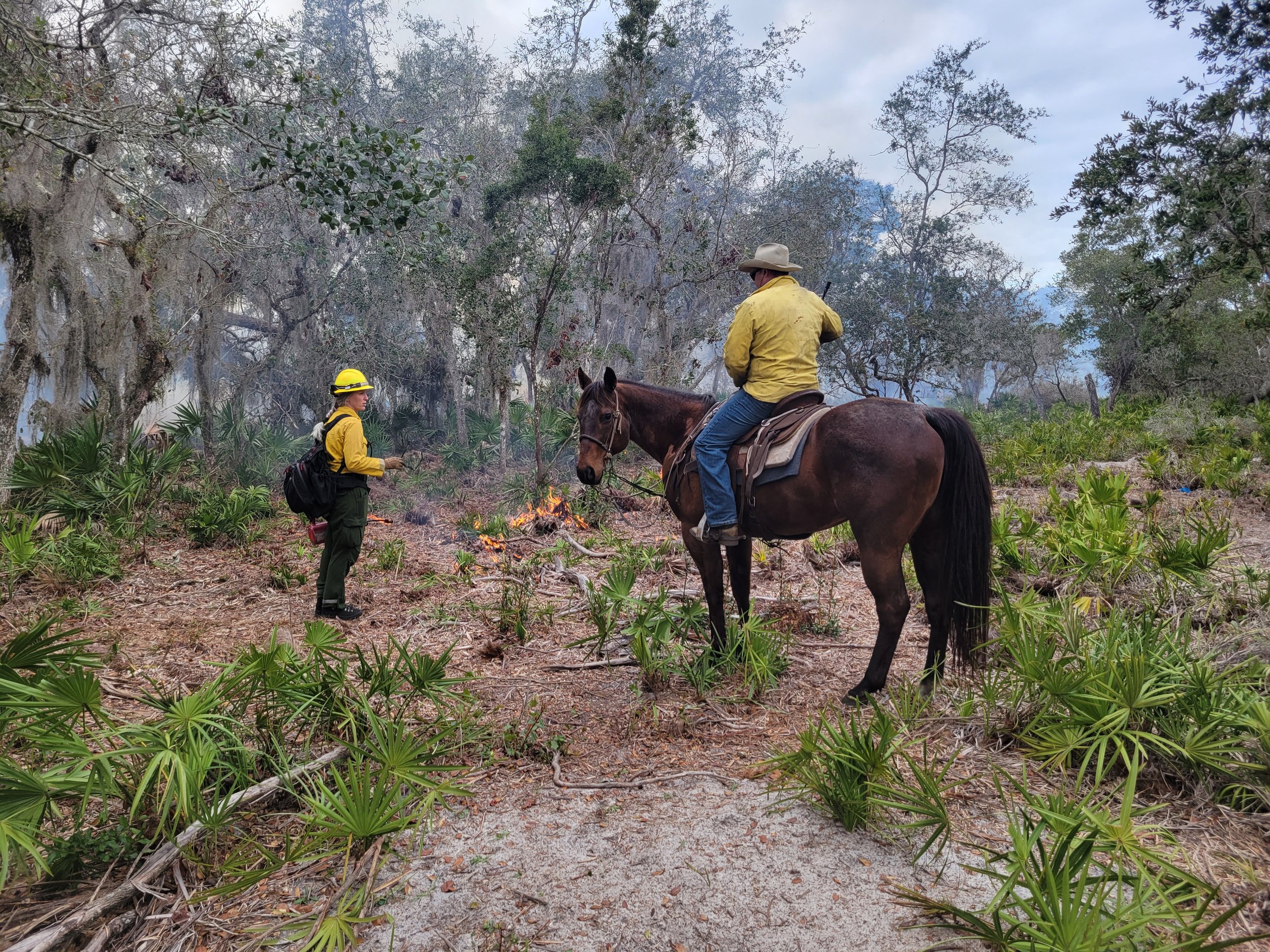
Photos by Mark Rizzo.
In addition to buffering public conservation lands and adding a significant amount of upland and wetland habitat types to this conservation corridor, D Ranch Preserve also further protects the Lake Monroe watershed. Wildlife common to the property includes the Florida black bear, Florida mouse, wood stork, gopher tortoise, eastern indigo snake, and Sherman’s fox squirrel, among numerous other animals. These species all rely on the positive impacts of prescribed burning to survive in their natural habitats.
Fire is a vital factor in managing the structure and composition of vegetation in many of the natural communities in Florida. The primary use of prescribed fire is to mimic natural fire regimes. Additionally, the application of fire aids in the reduction of fuels and minimizes the potential for catastrophic and damaging wildfires. Most of the natural communities on the property are fire adapted, making prescribed fire an important tool for use in restoration and maintenance of plant communities within the Preserve.
“Prescribed burning is an integral part of our enhancement and restoration efforts, increasing our plant diversity and wildlife use on the property as well as within the Lake Monroe conservation corridor,” detailed Rizzo.
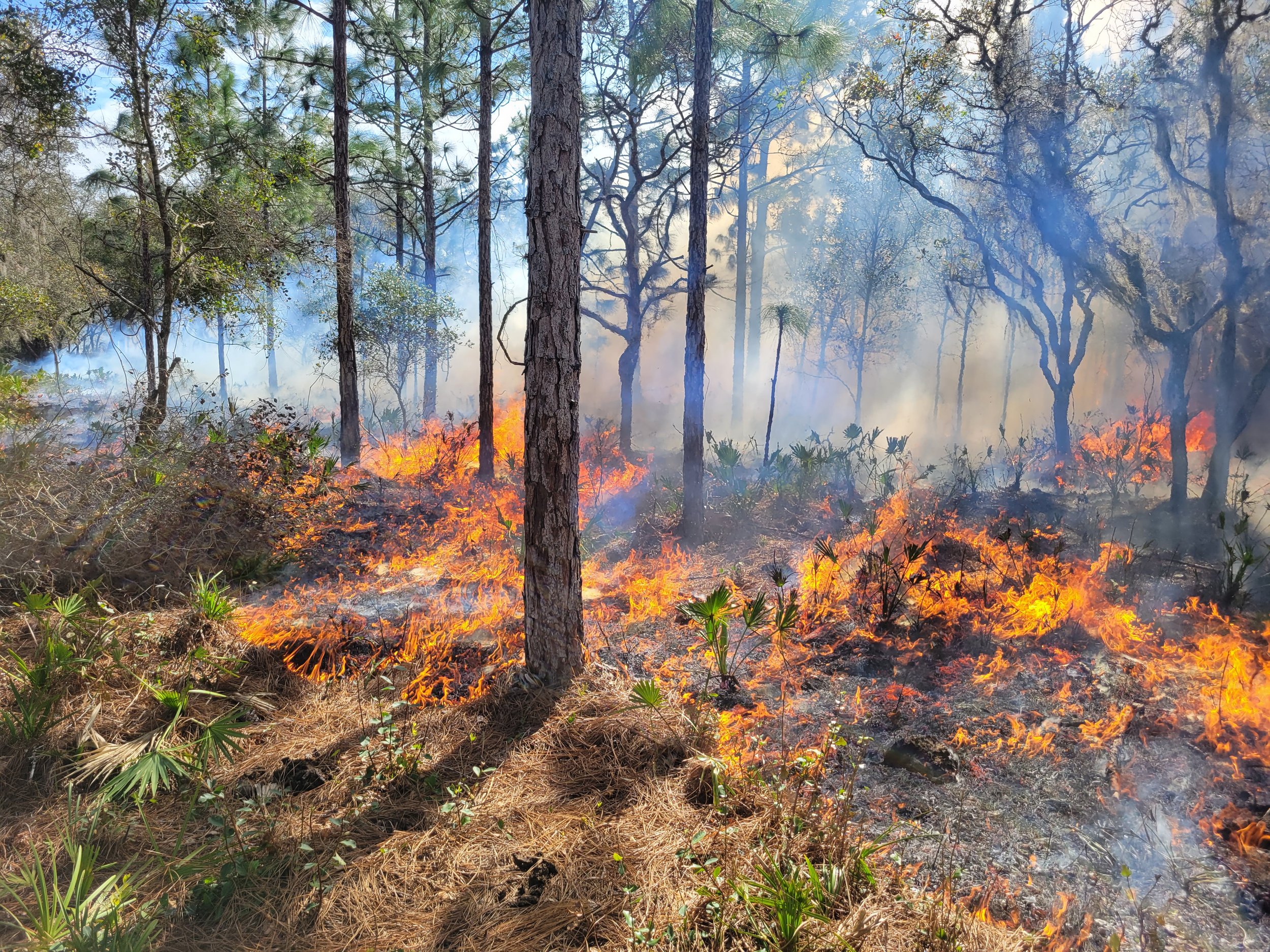
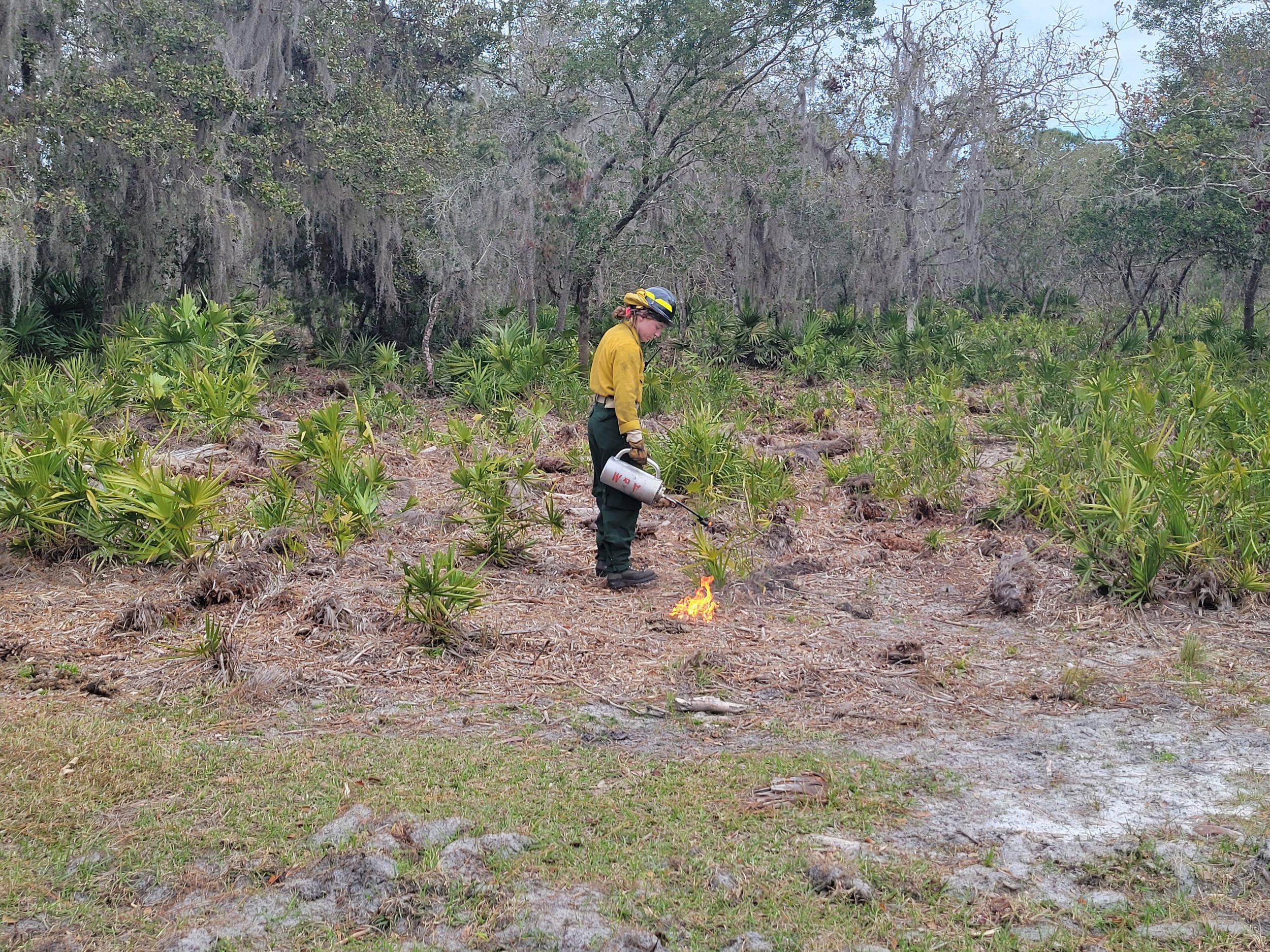
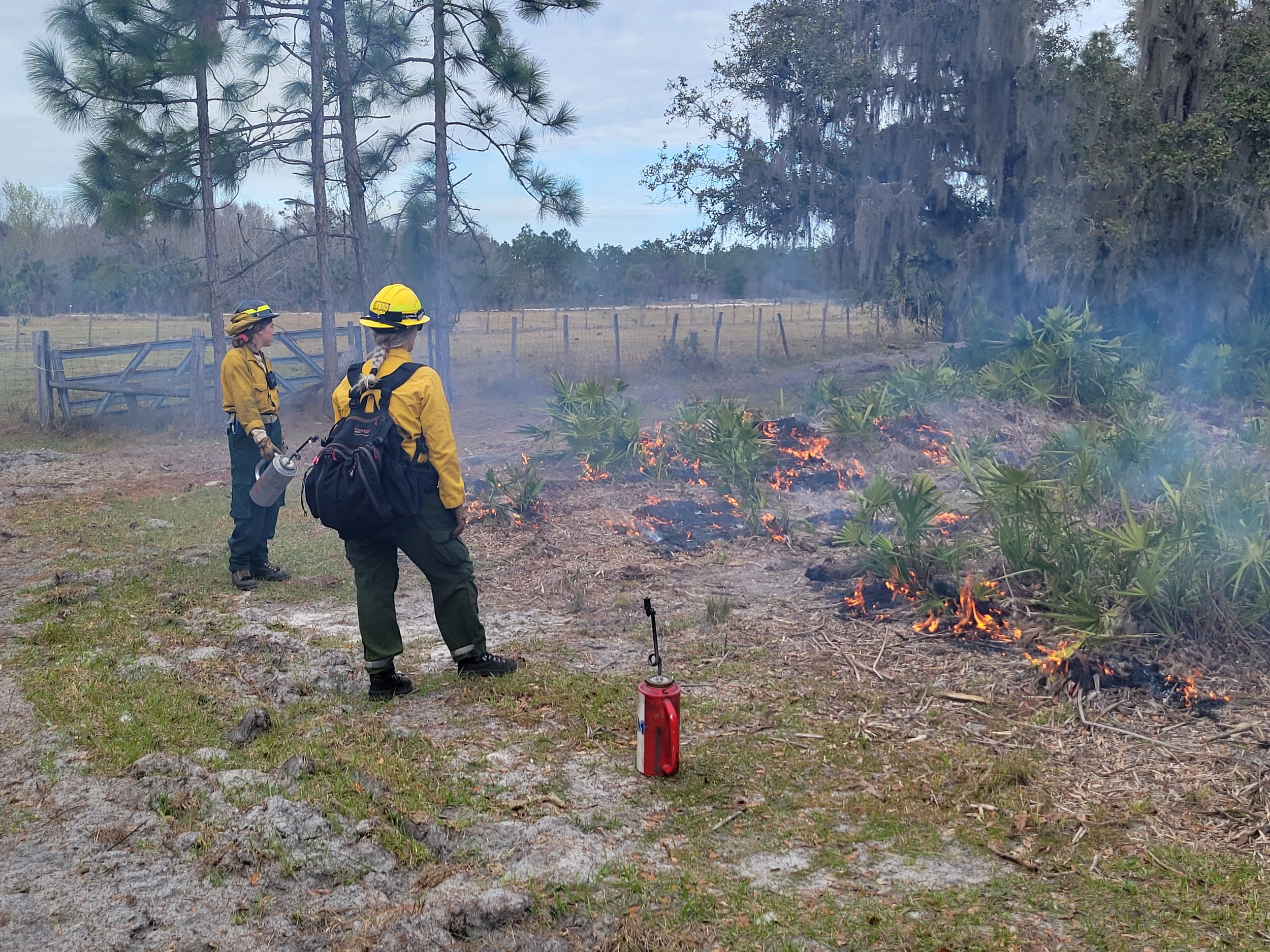
Photos by Mark Rizzo.
The stewardship program was able to secure partial funding to cover some of the cost of the burn.
“We thank our partners with the U.S. Fish and Wildlife Service's Partners for Fish and Wildlife program that helped with partial funding, and we look forward to future partnerships as well to help this conservation land succeed with its needed ecological and wildlife management,” said Rizzo.
To prepare the fire-absent land for prescribed burning, firelines, which require continuous maintenance, were installed. Firelines refer to a control line that’s dug to mineral soil and help contain the area of the fire. Fireline maintenance is important during times of prescribed fire activities but also throughout the entire year in certain areas to help protect the property and neighboring properties from the spread of potential devastating wildfires.
After completing this installation, Conservation Florida was able to use the services of a contractor to help with conducting the burns. Prescribed burning requires burn plans that contain specific details of the burn, safety measures, and strict weather parameters that need to be met. The Florida Forest Service has to give authorization to complete burns to ensure safety of those involved and those who may encounter the burn while driving, for instance, which was granted, and the preserve was ready for its first ever burn in several decades. A 35-acre burn was accomplished comprised of scrubby flatwoods, scrub and improved pasture.
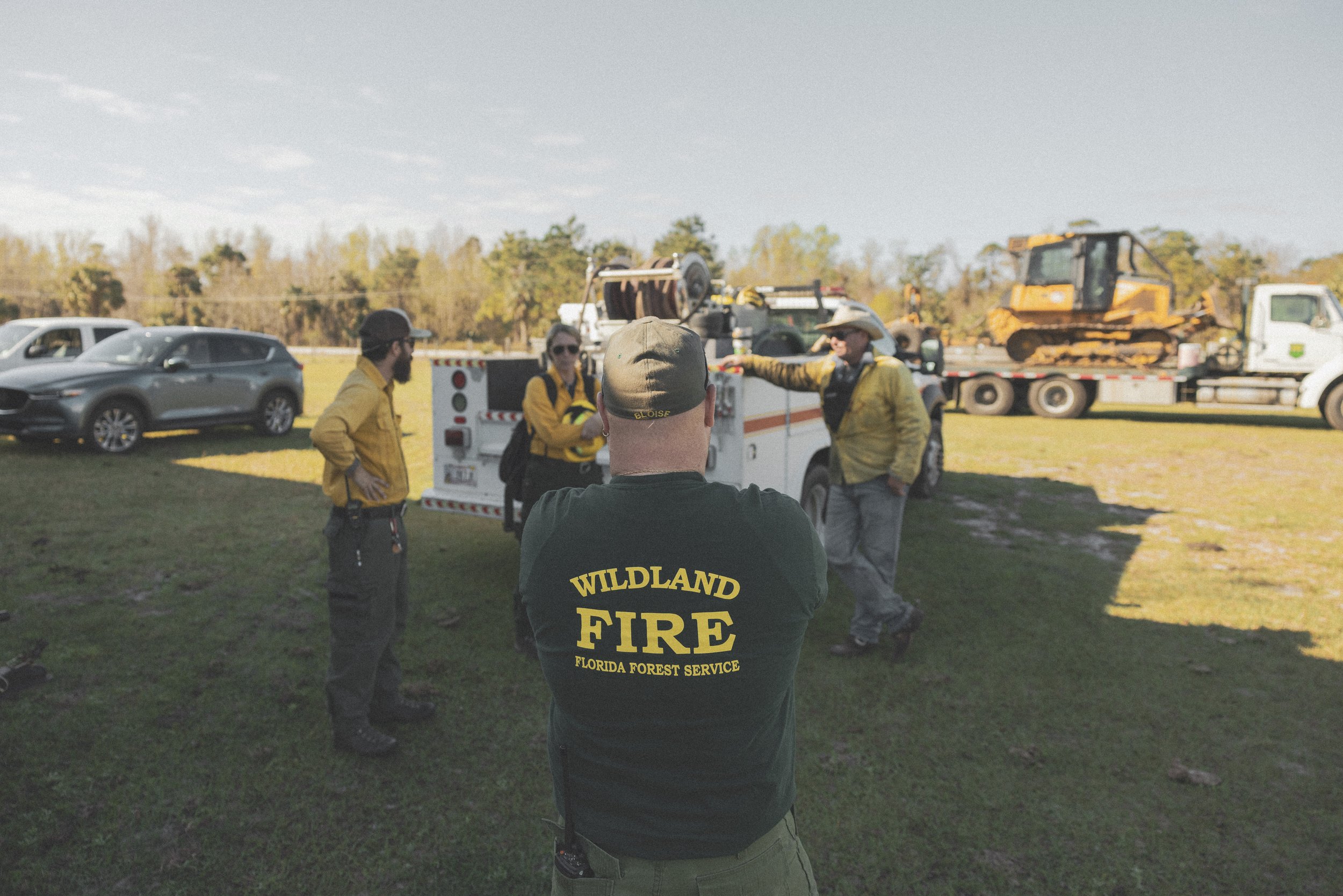

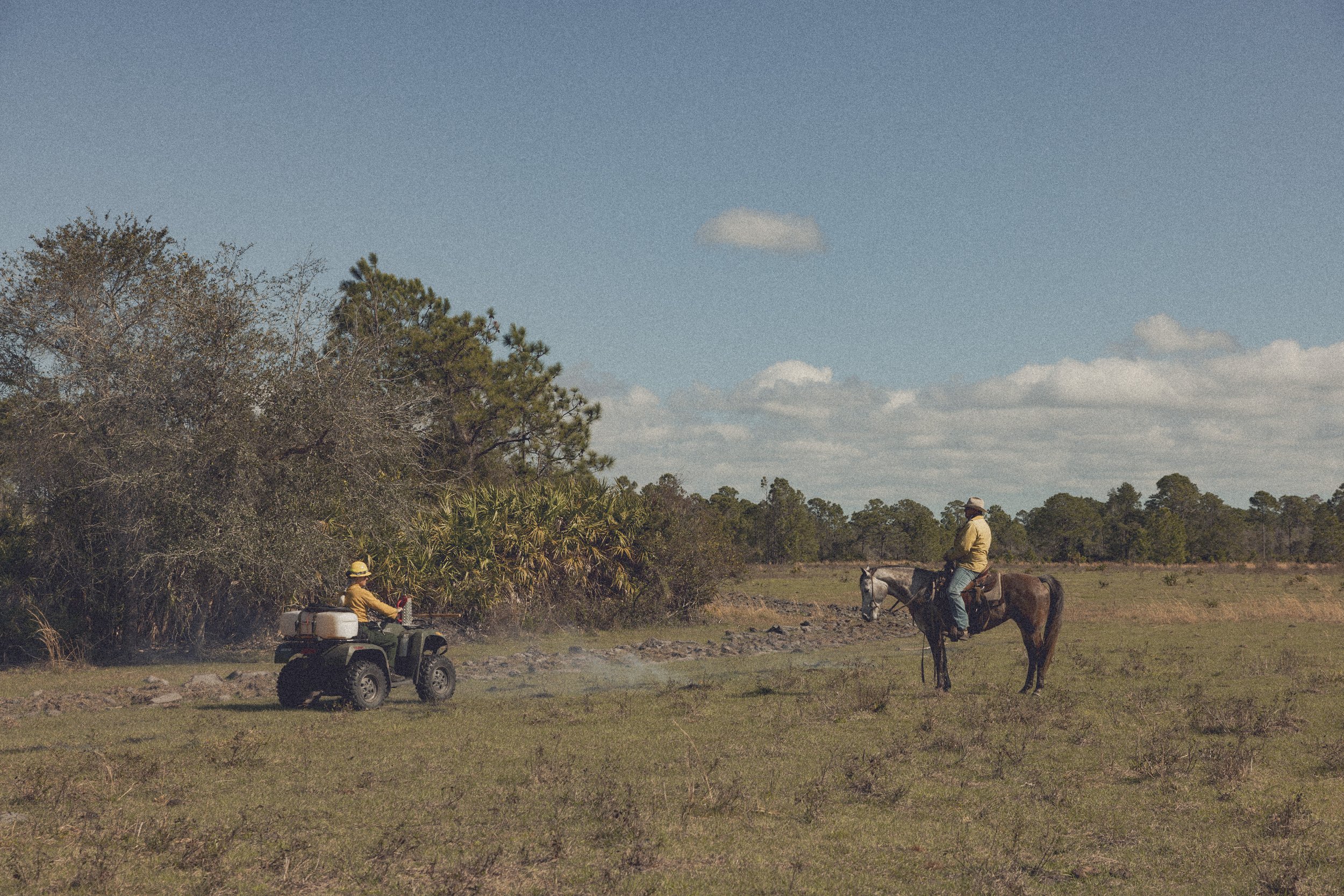
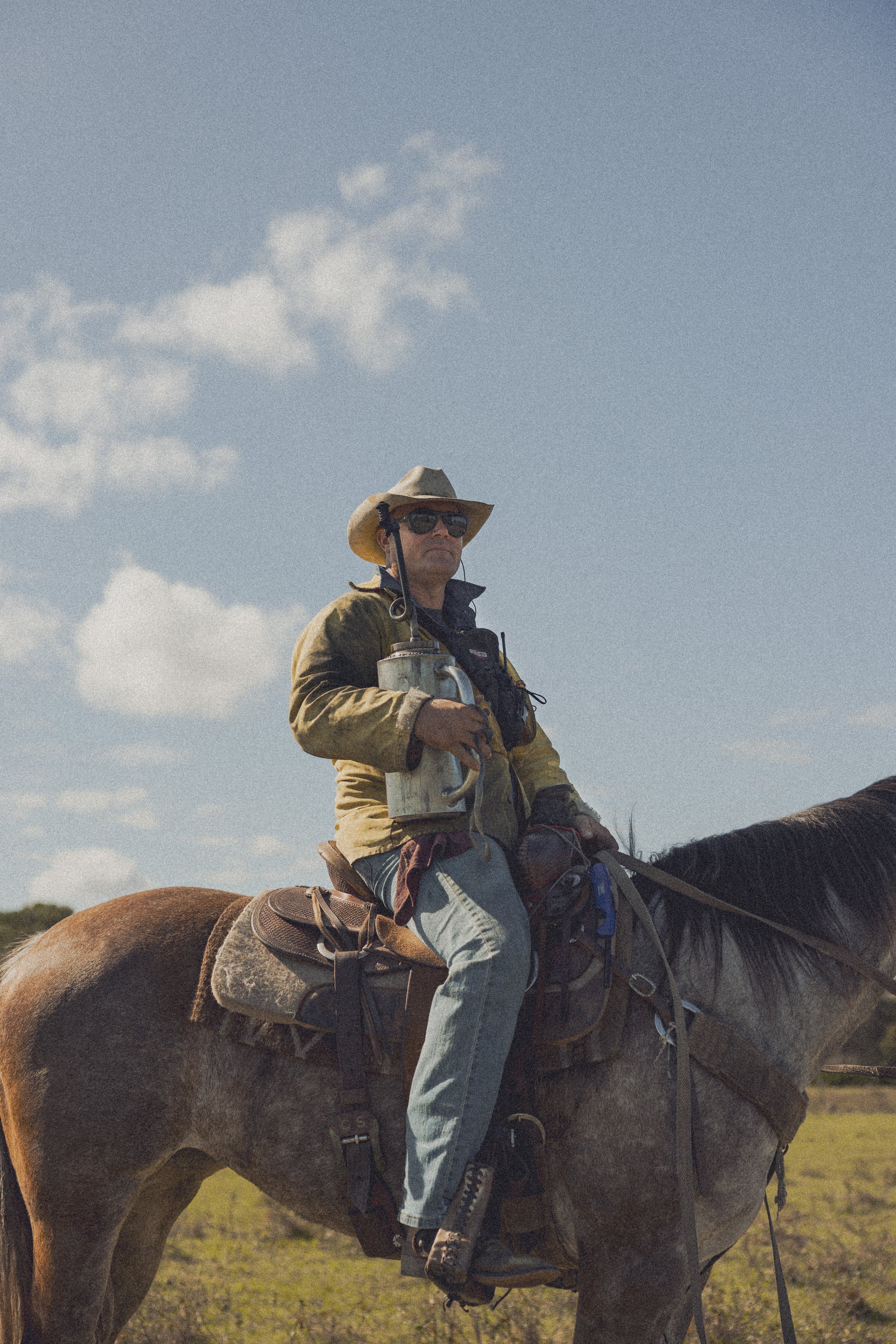
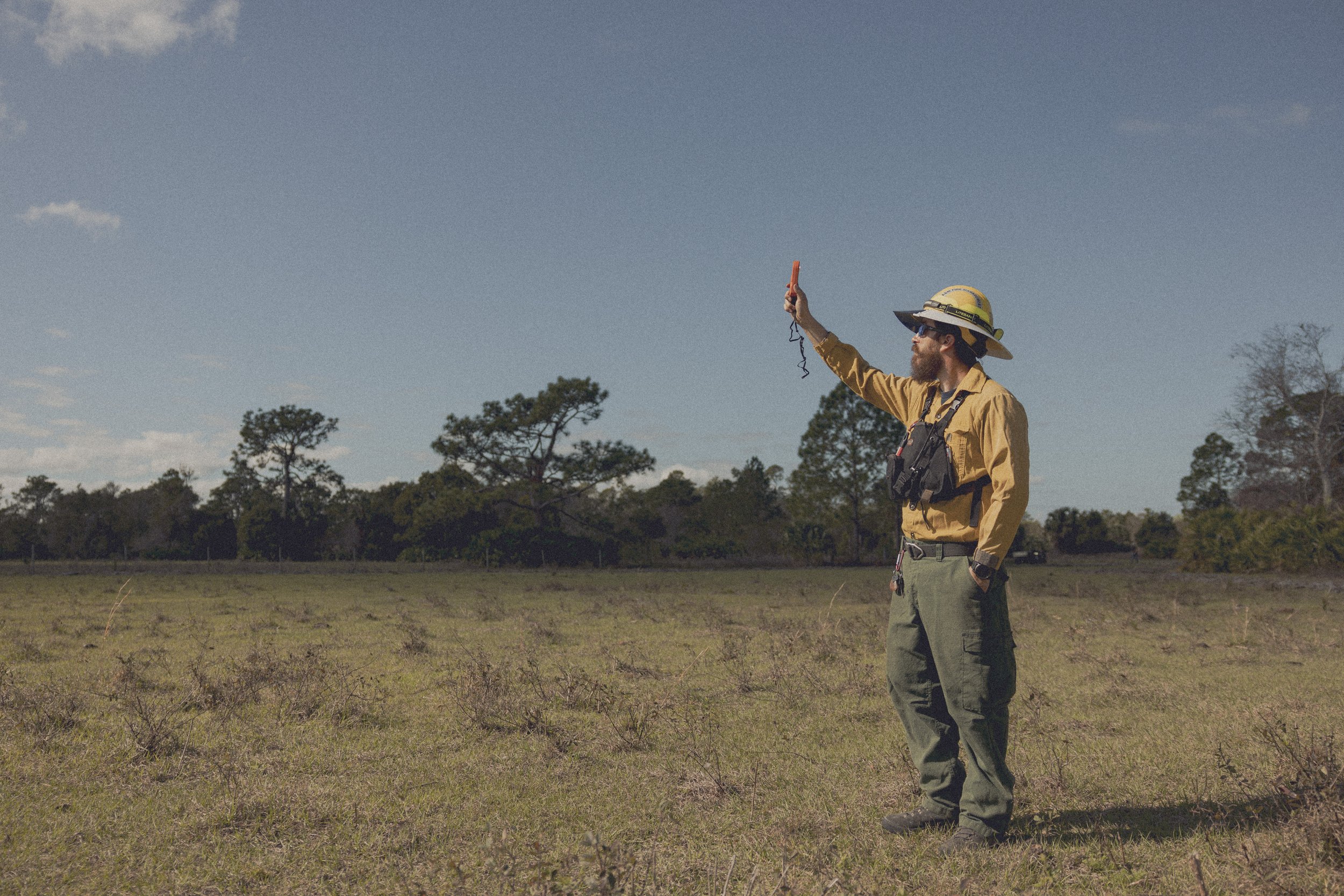
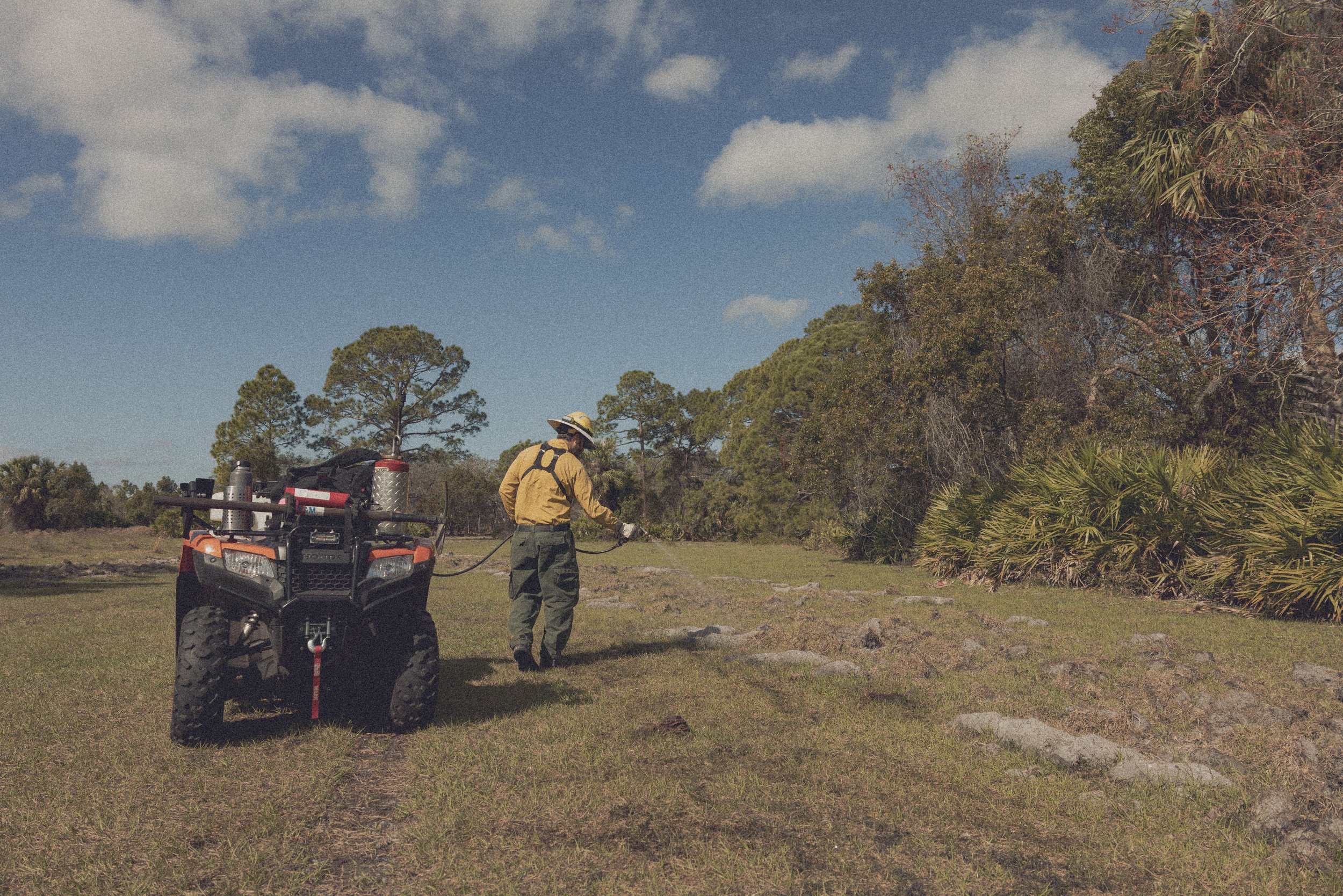
Prescribed burn contractor, Young Bear Environmental and Florida Forest Services on site at the burn. Photos by Lloyd Wilkinson.
Going forward, “we will burn whenever the weather is right to conduct a safe burn,” according to Rizzo. After maintenance burning has been completed, most burns will occur every 5-10 years on most of the property. Most habitats will begin with dormant season burning to help burn decades of accumulated vegetation and then eventually switched to spring/summer burns to help increase the number of flowering plants and increase seed viability in native grasses such as wiregrass.
The introduction of prescribed fire to D Ranch Preserve will help native Florida species survive - and flourish - for years to come. Rizzo added, “We are excited to have fire re-introduced onto D Ranch Preserve after several decades of fire exclusion and we look forward to the continuation of prescribed burning on the property.”
Video by Mark Rizzo.
About Conservation Florida:
Conservation Florida is a statewide accredited land conservancy working to conserve Florida’s water, wildlife, wild places, and protect the Florida Wildlife Corridor. Our conservation projects support Florida’s native plants and wildlife, fresh water, wildlife corridors, family farms and ranches, the economy, and nature-based recreation. Since its founding in 1999, Conservation Florida has prioritized strategic and evidence-based land protection and has saved over 30,000 acres of critical habitat.
Support D Ranch Preserve
Join us in our efforts to support the conservation and exploration of wild Florida land. Please consider making a donation to fund Conservation Florida and its stewardship of D Ranch Preserve as a refuge for wildlife and people for years to come!
Conservation Florida Welcomes Two New Members to Growing Team
Conservation Florida hired Cristi McKee Conrad and Tessa Skiles to increase reach and impact across the state.
Photo by Adam Strang Bass.
Conservation Florida hired Cristi McKee Conrad and Tessa Skiles to increase reach and impact across the state
Tallahassee, Fla. (April 3, 2023) - Conservation Florida, a leader in statewide land conservation, welcomes the newly hired Cristi McKee Conrad, Communications Associate, and Tessa Skiles, Programs Coordinator, to assist in the organization's mission to save land that supports Florida’s native plants and wildlife, fresh water, wildlife corridors, family farms and ranches, and nature-based recreation. Conrad and Skiles add depth to Conservation Florida's ever-expanding team, and will strengthen the land conservancy's reach, capabilities, and expertise.
Cristi McKee Conrad
As Communications Associate, Cristi McKee Conrad will help conduct organization-wide communications and public relations efforts while managing multimedia projects aimed to increase brand awareness for our mission-driven organization.
Cristi has been a Tallahassee resident for 15 years, and has been working in the communications field for 8. She is a graduate of Florida State University with a degree in English-Editing, Writing and Media. An award-winning journalist, she previously worked for the CBS Affiliate for North Florida and South Georgia, WCTV Eyewitness News, as a breaking news Digital Producer, The Tally Wire, a lifestyle news site as its Editor in Chief, and Tall Timbers Research Station and Land Conservancy as a Communications Coordinator. Currently during her free time, she is the head reporter for The Bradfordville Bugle, a monthly newspaper in Tallahassee.
Growing up under the oaks in the Red Hills, Cristi spent a lot of her time outside with her family, traveling to local and state parks around the area to explore, bird watch, and hike. Today, life doesn’t look much different, and she spends most of her free time outside, going on hikes with her husband and two dogs - a black mouth cur mix and a Boykin spaniel - cooking and baking, gardening, and doing waterfowl and wildlife photography.
"I am so very excited to do my part in protecting wild Florida as part of the Conservation Florida team," Cristi said. "It's a real privilege to be allowed to work alongside such a wide variety of talented, likeminded individuals, and I'm thrilled to be doing something I love, for the state that I love."
Tessa Skiles
As Programs Coordinator, Tessa Skiles will focus on expanding the organization's educational and nature-based outreach programs aimed to engage local communities with wild Florida.
Daughter of the late National Geographic Explorer and filmmaker, Wes Skiles, Tessa was surrounded from a young age by explorers and environmental advocates - even writing and starring in her first conservation documentary at eight years old. As her career began, Tessa served as the media and outreach director for the Florida Springs Institute, leading the way with a spirit of collaboration that grew into new relationships with several large organizations throughout Florida. Her development of retreats and educational programs made a lasting impact, cultivating a new generation of conservation advocates around the state.
Tessa has worked behind the scenes with several for-profit and non-profit organizations planning events, assisting with media outreach, and branding. Collaborating with individual creatives, Tessa has continued advocating for Florida’s freshwater springs as a conservation photographer, media producer, and documentary filmmaker. Tessa’s passions also include foraging mushrooms, freediving, fossil hunting, hiking, cave diving, and gardening.
“I’ve been working to protect wild Florida my entire life. Along the way, I’ve learned there are many avenues one can take to protect our planet. Conservation Florida’s approach is unique in the way it creates the immediate and lasting impact that Florida so desperately needs," Tessa said. “It's a privilege to work with a team of conservationists as passionate as myself, and I look forward to directing all of my energy to furthering our message to save wild Florida.”
Join us in welcoming our newest Conservation Florida teammates by making a donation today!
About Conservation Florida:
Conservation Florida is a statewide accredited land conservancy working to conserve Florida’s water, wildlife, wild places, and protect the Florida Wildlife Corridor. Our conservation projects support Florida’s native plants and wildlife, fresh water, wildlife corridors, family farms and ranches, the economy, and nature-based recreation. Since its founding in 1999, Conservation Florida has prioritized strategic and evidence-based land protection and has saved over 30,000 acres of critical habitat.
Conservation Florida Announces Newly Elected Board of Directors Leadership
Conservation Florida Board of Directors has elected a new slate to serve its Executive Committee.
Conservation Florida Board of Directors has elected a new slate to serve its executive committee.
Tallahassee, Fla. (March 23, 2023) - Conservation Florida is excited to welcome in a new executive committee for the 2023 year - Chair, Matt Pearce; Vice Chair, Courtney Barnard; Secretary, Eric Draper, and Treasurer, Justin Beck. These individuals bring a myriad of skills and experiences to our growing team that will help us further our mission. After 6 years of dedicated service, we're sad to say goodbye to Jeff Hardesty as a board member, but look forward to many years of conservation partnership to come.
Passionate supporters and volunteers, including former and current board members, support the organization’s mission-critical work throughout the state. Through having a Board of Directors full of professionals who come from many different backgrounds, Conservation Florida continues to increase not only its statewide presence, but also its pool of resources and expertise. What unites this Board is a shared passion for Florida’s wild spaces and places and a deep desire to conserve its precious native and natural beauty, flora and fauna.
"We are extremely thankful to have a Board of Directors filled with devoted partners who are passionate about protecting Florida's natural and agricultural landscapes," said Traci Deen, President and CEO of Conservation Florida. "I'm thrilled to work alongside our board to shape the future of conservation in Florida."
Learn more about our full, distinguished Board of Directors by clicking here.
MATT PEARCE - CHAIR OF THE BOARD
Matt is a Florida native and 7th generation Florida cattle rancher who is passionate about protecting habitat for ranching and wildlife. He owns and operates Pearce Cattle Company, a family-owned cow/calf operation with locations throughout South Florida and Central Georgia. He has served on the Florida Cattlemen’s Association Board for 10 years and is the immediate past president. His goal is to serve the industry and assist in successfully passing down the ranching lifestyle to the next generation.
COURTNEY BARNARD - SECRETARY OF THE BOARD
Courtney serves as the director of government affairs in Florida for Verizon. Her areas of focus include local government relations and community engagement. Courtney has over a decade of experience working in public policy and grassroots engagement in Florida. Prior to her role with Verizon, Courtney previously worked in housing advocacy with the Florida Realtor Association and Florida Apartment Association. Outside of work, she volunteers locally and is a lifetime member of Leadership Florida.
Courtney received her master’s in political science, international studies track at the University of Central Florida and her bachelor’s in politics and international relations at Scripps College in Claremont, CA. She also holds a certificate in public policy from the University of Washington, Jackson School of International Relations.
Courtney is a native of California, but has lived in Central Florida for a decade. She is passionate about her local community and loves having nature on her doorstep. In her free time, she enjoys hiking, stand up paddle boarding, yoga, baking, and reading.
JUSTIN BECK - TREASURER
Justin lives in Pensacola and is the CEO of Beck Partners, a commercial real estate services firm. He has a BS in Business Management from the University of Alabama at Birmingham. Justin is married to his wonderful wife Kristin, and they have three children together. In his free time, he enjoys the outdoors, especially fishing and hunting. Justin has a deep appreciation for the natural world and loves all things conservation. He’s a former chair of the Greater Pensacola Chamber of Commerce, current chair of the Ascension Sacred Heart Foundation, and trustee at Episcopal Day School in Pensacola.
ERIC DRAPER - SECRETARY OF THE BOARD
Eric Draper provides strategic advice on environmental finance and policy to businesses, non-profit organizations, and government agencies. He is a passionate road and off-road cyclist and serves on the boards of the Florida Bicycle Association and Capital City Cyclists.
He recently completed service as Director of the Florida Park Service. Before being asked to lead the Florida Park Service, Draper was Executive Director of Audubon Florida. Previously, he was Senior Vice President for Policy at the National Audubon Society, the Florida House of Representatives Majority Office staff director, The Nature Conservancy’s Florida government relations director, and Clean Water Action's national campaigns director.
During his 30-year conservation career, Draper was a leading advocate for water and land conservation and Everglades restoration. Draper’s service has included EPA’s Environmental Finance Advisory Committee, Florida Agriculture Commissioner’s Water Policy Advisory Committee, Working Forest Partnership (co-chair), Water and Land Legacy Campaign executive committee, Sustainable Florida board, Florida Ocean Alliance board, the Clinton-Gore EPA Transition Team, the Florida Soil and Water Conservation Council, the Florida Water Management District Review Commission, Partners for a Better Florida (co-chair), and FSU Political Science Department (adjunct instructor).
As Conservation Florida continues to grow, so does the hope for a future where vital and vibrant Florida land is protected forever. We invite you to donate, volunteer, or join our efforts to protect more of Florida’s special places. Email info@conservationfla.org to get involved.
About Conservation Florida:
Conservation Florida is a statewide accredited land conservancy working to conserve Florida’s water, wildlife, wild places, and protect the Florida Wildlife Corridor. Our conservation projects support Florida’s native plants and wildlife, fresh water, wildlife corridors, family farms and ranches, the economy, and nature-based recreation. Since its founding in 1999, Conservation Florida has prioritized strategic and evidence-based land protection and has saved over 30,000 acres of critical habitat.
Governor and Cabinet Approve Funding for Conservation Florida's Lightsey Family Ranch Project
Conservation Florida and the Florida Department of Environmental Protection move forward the conservation of 1285 acres in the Florida Wildlife Corridor.
Photos by George McKenzie Jr./Wildpath.
Conservation Florida and the Florida Department of Environmental Protection move forward the conservation of 1285 acres in the Florida Wildlife Corridor
Highlands County, FL (March 13, 2023) — Conservation Florida and the Florida Department of Environmental Protection have been working to permanently conserve 1,285 acres of ranch land, creek frontage, dry prairie and mesic flatwood communities as part of the Blue Head Ranch Florida Forever project. Today's meeting marked a crucial moment thanks to Governor DeSantis and the Cabinet, in its role as the Board of Trustees of the Internal Improvement Trust Fund, approving funding that allows the Lightsey Family Ranch, or LTL Holdings, to be permanently protected through the state's Florida Forever program.
Funding will be allocated from the Florida Forever program to complete the purchase of one easement, totaling 1,285 acres. The Lightsey Family Ranch is within the Blue Head Ranch boundary ranked number 4 in the Florida Forever Critical Natural Lands project category, approved by the Board of Trustees on March 29, 2022. The overall project contains 43,051 acres of which 1,285 acres are now under agreement to be acquired in this project area.
Map of Lightsey Family Ranch conservation easement.
Through the conservation acquisition, a large portion of the Fisheating Creek watershed and interlinked hydrological system - including creek frontage and important tributaries - will be conserved. This extends conservation ownership and management in southwestern Highlands County, which is contiguous to Archbold Biological Station to the north, and located on the southern end of the Lake Wales Ridge. Additionally, the property lies within Priority 4 of the Florida Wildlife Corridor.
As always, securing partnerships is vital in making this type of boots-on-the-ground conservation possible. "Conservation Florida is grateful to the Governor, the Florida Cabinet, and the Florida Department of Environmental Protection for their devotion to protecting our wild and agricultural lands, and for continuing to support critical land acquisitions such as this,” said Traci Deen, President and CEO of Conservation Florida.
This land serves as a habitat for precious Florida wildlife. "The conservation of the Lightsey Family Ranch is a great example of an easement acquisition with multiple benefits as it adds to the protection of endangered wildlife, native plants, water, and green space while also contributing to the local rural economy,” added Deen. “More, this property further conserves and builds a functional Florida Wildlife Corridor.”
Conservation Florida has been working on this project since May of 2021. Over the past year and a half, Conservation Florida worked with the property’s landowners and the Florida Department of Environmental Protection to secure the deal and bring it before the Governor and Cabinet.
This land will continue to provide and enhance the habitat of numerous rare and imperiled species. This portion of the state is known for its renowned, high quality natural, hydrological, and wildlife resources and historically, this land was used for ranching cattle, but now functions primarily as a homestead and for recreational hunting activities.
“It has been a great experience working with Conservation Florida again, this time on the protection of the Lightsey Family Ranch.” said landowner, Lee Lightsey. “I’m grateful to the Florida Department of Environmental Protection for their support and guidance through the process, and look forward to partnering for years to come.”
Additionally, the project encompasses a wide range and diversity of natural resources within a matrix dominated by high quality natural communities, including large blocks of endemic dry prairie and mesic flatwood communities. The Blue Head Ranch project also serves to capture, store, and slowly release substantial volumes of water that ultimately make their way to the interconnected downstream ecosystems of Lake Okeechobee and the Everglades.
This success story is just one of many conservation triumphs in saving the Florida Wildlife Corridor in this region of the state. This stunning and diverse area contains a myriad of biodiversity, sweeping plains, and vast ecosystems, all of which are critical to protect. The Corridor overall contains 17.7 million acres, and of that, 8.1 million acres are identified as conservation opportunities to build a statewide, functional wildlife corridor that’s permanently protected.
About Conservation Florida
Conservation Florida is a statewide accredited land conservancy working to conserve Florida’s water, wildlife, wild places, and protect the Florida Wildlife Corridor. The organization’s conservation projects support Florida’s native plants and wildlife, fresh water, wildlife corridors, family farms and ranches, the economy, and nature-based recreation. Since its founding in 1999, Conservation Florida has prioritized strategic and evidence-based land protection and has saved over 30,000 acres of critical habitat.
About Florida Department of Environmental Protection
The Florida Department of Environmental Protection is the state’s lead agency for environmental management and stewardship – protecting our air, water, and land. The vision of the Florida Department of Environmental Protection is to create strong community partnerships, safeguard Florida’s natural resources and enhance its ecosystems.
Conservation Florida Permanently Protects 458 Acres in the Florida Wildlife Corridor
Couple’s conservation easement donation protects land and leaves legacy.
The Welch property, which borders this highway, will provide a safer way for endangered Florida panthers to move between other protected lands. Photo by Adam Bass.
Couple's Conservation Easement Donation Protects Land and Leaves Legacy
Polk County, Fla. (March 6, 2023) – Conservation Florida, a dynamic driver of land conservation in Florida, has permanently protected 458 acres thanks to a generous donation by Dan and Marcia Welch.
As you drive along state road 60 East, you see a panther crossing sign. It reminds you to slow down and how very precious the green space is in the region. That sign sits at the newly protected Welch property.
The incredible property fills in a missing piece of the Florida Wildlife Corridor and protects rare habitat on Lake Wales Ridge, a unique geological feature that is one of the oldest natural scrub communities in Florida. From the gregarious Florida scrub-jay to the shy sand skink, the sandy ridge contains so many unique, threatened plant and wildlife species that it has been labeled a global biodiversity hotspot.
Endangered Florida scrub jays are special for many reasons. They form tight family groups, and young scrub-jays often help raise their siblings. They are also friendly and curious birds that spend their whole lives in Florida. Photo by Chuck Palmer.
“We are incredibly grateful for Dan and Marcia Welch’s generosity and for the privilege of working with them to protect such a beautiful place not only rich in biodiversity but further conserving a functional Florida Wildlife Corridor.” said Traci Deen, President and CEO of Conservation Florida. “This new conservation easement will ensure that this slice of wild Florida stays this way, forever.”
Recognizing the necessity and urgency of preserving this special land, the Welches felt compelled to protect it for future generations. “Our family has witnessed the continual loss of our native woodlands. We know our partnership with Conservation Florida will further our legacy of protecting our wonderful natural landscape,” said Marcia Welch.
Dan and Marcia Welch.
Nestled in the middle of Lake Wales Ridge State Forest, the land is home to more than 40 plants and animals found nowhere else on the planet. As the panther crossing sign shows, the property is used by wide-ranging mammals utilizing it to roam.
Conservation Florida now holds the conservation easement, which limits development on the land and protects its natural characteristics forever. Its location on Lake Wales Ridge and within one of Conservation Florida's priority regions made it an ideal candidate for protection.
“We have witnessed the continual loss of our native woodlands. We know our partnership with Conservation Florida will further our legacy of protecting our wonderful natural landscape,” Marcia Welch added.
On top of everything else, the donation of this land will also close a gap in the Florida Wildlife Corridor. Like filling in missing pieces of a giant land protection puzzle, Conservation Florida and its land protection partners have been working to protect land within the Florida Wildlife Corridor for decades.
About Conservation Florida:
Conservation Florida is a statewide accredited land conservancy working to conserve Florida’s water, wildlife, wild places, and protect the Florida Wildlife Corridor. Our conservation projects support Florida’s native plants and wildlife, fresh water, wildlife corridors, family farms and ranches, the economy, and nature-based recreation. Since its founding in 1999, Conservation Florida has prioritized strategic and evidence-based land protection and has saved over 30,000 acres of critical habitat.
State Leaders Attend Wild Florida Reception at the Historic Florida Capitol
The event brought attendees together to celebrate the past achievements of Florida conservationists and to look forward to the future of saving wild Florida.
The event brought together Florida lawmakers, landowners, scientists, conservationists, philanthropists, TV show producers, biologists and storytellers to celebrate the past achievements of Florida conservationists and to look forward to the future of saving wild Florida.
Tallahassee, Fla. (February 22, 2023) — Conservation Florida, a dynamic driver of statewide land conservation, held its second annual Wild Florida reception following a celebration of wild Florida and all she has to offer on Wednesday, February 22, at the Historic Florida Capitol. The event brought together Florida lawmakers, landowners, scientists, conservationists, philanthropists, TV show producers, biologists and storytellers to celebrate the past achievements of Florida conservationists and to look forward to the future of saving wild Florida.
A number of elected officials and Florida leaders were in attendance at the reception, including Attorney General Ashley Moody, Senate President Kathleen Passidomo, and Speaker of the House, Paul Renner.
The crowd of over 200 people were treated to art by Florida artist Blair Updike and speeches by Traci Deen, President and CEO of Conservation Florida, Senate President, Kathleen Passidomo, Speaker of the House, Paul Renner, and Pat Durden from the Florida Cattlemen's Association.
“Tonight is a celebration of Wild Florida in all her glory, and a celebration of each and every of you,” Deen said to the crowd. “To those working to protect our wild places, our native species, our wildlife corridor, our ranches and family farms, our natural heritage, tonight is a celebration of you and your work.”
Speakers also urged the crowd to take urgent action for land conservation, highlighted the unique features of the Wildlife Corridor, and emphasized the importance of saving our wild places and spaces. "What's so important about the Corridor is that it's so multifaceted," Senate President Kathleen Passidomo noted. "For the farmers and the ranchers, how important is this that they can continue to farm and to ranch in perpetuity? How wonderful this amenity is for those who want to preserve Florida!"
In his opening remarks, Speaker of the House, Paul Renner expressed that he was happy to be a part of the evening and the mission behind it, and said, “We have this really amazing opportunity to connect The Keys to the Florida-Georgia line to benefit the biodiversity and the wildlife.” Ultimately, Renner said that he, along with fellow leaders and lawmakers, “Need to send a clear signal that we’re committed in the long term…If we don’t get there fast, we won’t get there.”
Pat Durden of the Florida Cattlemen's Association, another speaker at the event, said, “It’s an awesome time in Florida,” as he believes that, “We’re right on the edge of being able to actually preserve Florida and the wild lands and the Corridor for many, many generations to come.”
Following the reception, attendees were treated to a premier screening of the first episode of “Protect Our Paradise,” an upcoming docuseries created in partnership through Crawford Entertainment and Conservation Florida, called “Our Corridor,” in the Historic Capitol Courtyard. The series focuses on challenges facing Florida and serves as a catalyst to propel conservation at a statewide level. Each episode will feature a unique aspect of Florida’s environment and some of the people working to protect Florida’s wildlife, wild landscapes, and wild waters. The docuseries will air this summer on NBC, ABC, and CBS.
Amidst the reception taking place, Conservation Florida illuminated the Historic Florida Capitol green, celebrating and bringing awareness to land conservation in the state of Florida and the Florida Wildlife Corridor.
The Historic Capitol Museum was illuminated to spread awareness about land conservation and saving wild place amidst the 2023 Wild Florida reception. Photo by Connor Howe.
In her closing speech, Deen highlighted that unity among all those who love the land is what will save the wild places closest to our hearts. She remarked, “Together, we’re keeping Florida wild and we’re keeping Florida, Florida.”
About Conservation Florida:
Conservation Florida is a statewide accredited land conservancy working to conserve Florida’s water, wildlife, wild places, and protect the Florida Wildlife Corridor. Our conservation projects support Florida’s native plants and wildlife, fresh water, wildlife corridors, family farms and ranches, the economy, and nature-based recreation. Since its founding in 1999, Conservation Florida has prioritized strategic and evidence-based land protection and has saved over 30,000 acres of critical habitat.
Florida Capitol Illuminated Green for Land Conservation
The Historic Florida Capitol was illuminated green as Conservation Florida's Wild Florida Day and Reception came to an end.
The Historic Florida Capitol was illuminated green as Conservation Florida's Wild Florida Day and Reception came to an end.
Tallahassee, Fla. (February 21, 2023) - On Wednesday, February 22, 2023, the Historic Florida Capitol was illuminated green as Conservation Florida's Wild Florida Day and Reception came to an end - celebrating and bringing awareness to land conservation in the state of Florida and the Florida Wildlife Corridor. Pedestrians and drivers alike will be treated to a vibrant display of flashy green lights coating the building - a poignant reminder of the importance of the state’s water, wildlife, and wild places.
“We lit the Capitol green to highlight the importance of land conservation in Florida, both past and future,” said Traci Deen, President and CEO of Conservation Florida. Amidst the Capitol going green, the Wild Florida Reception with Florida lawmakers was held. Through the event and the light display, Deen explained, “We wanted to honor Florida’s strong land conservation legacy and celebrate the opportunity before us to conserve our special places and the Florida Wildlife Corridor, together.”
The illumination of the Historic Capitol was timed as the Legislature prepares for the forthcoming legislative session where it will consider funding for the state's land conservation programs and support for the Corridor vision. "Illuminating the Capitol green is our way of engaging our state's leaders with a beautiful reminder that Florida is wild, but that we are also on the clock to protect those wild, wonderful places that make this state so special," said Sarah Collins, Conservation Florida’s Vice President of Communications and Philanthropy.
Conservation Florida is a statewide accredited land conservancy working to conserve Florida’s water, wildlife, wild places, and protect the Florida Wildlife Corridor. The organization’s conservation projects support Florida’s native plants and wildlife, fresh water, wildlife corridors, family farms and ranches, the economy, and nature-based recreation. The organization advocates for conservation funding and the protection of the state's wild and agricultural landscapes, including the conservation of a functional statewide corridor.
“The reception and illumination really is a celebration of land conservation in Florida. Saving land is a team effort made up of conservationists, landowners, lawmakers, scientists, philanthropists, outdoor enthusiasts, and everyday Floridians who care about our state deeply,” added Collins. “We live in an incredible state and are so proud to show off our love for it.”
About Conservation Florida:
Conservation Florida is a statewide accredited land conservancy working to conserve Florida’s water, wildlife, wild places, and protect the Florida Wildlife Corridor. Our conservation projects support Florida’s native plants and wildlife, fresh water, wildlife corridors, family farms and ranches, the economy, and nature-based recreation. Since its founding in 1999, Conservation Florida has prioritized strategic and evidence-based land protection and has saved over 30,000 acres of critical habitat.
Conservation Florida Conserves 1,250-Acre Arbuckle Creek Ranch
The power of partnership protects 1,250 acres of critical land in the Florida Wildlife Corridor.
The power of partnership protects 1,250 acres of critical land in the Florida Wildlife Corridor.
Avon Park, Fla., (February 8, 2023) — Conservation Florida, a dynamic driver of statewide land conservation, with its partners at the U.S. Department of Agriculture’s (USDA) Natural Resources Conservation Service (NRCS) and the U.S. Department of Defense (DoD), has officially conserved 1,250 acres that will protect vital wildlife habitats on the eastern edge of the Lake Wales Ridge in Highlands County, Florida.
The property is a major connector piece in the Florida Wildlife Corridor, linking environmentally important and protected properties in the region. Arbuckle Creek Ranch is critical to protect and beneficial to the public because it helps filter and replenish drinking water within the Lake Istokpoga watershed, which drains into the Kissimmee River and on to Lake Okeechobee. It also supports local agriculture, aids military readiness, and provides habitat for native plants and wildlife.
“This easement held by Conservation Florida is 1,250 acres, but the benefits of conserving Arbuckle Creek Ranch extend well beyond its boundaries,” said Traci Deen, Conservation Florida’s President and CEO. “It contributes to the health of the entire Greater Everglades Ecosystem and adds to the Florida Wildlife Corridor. The property protects a mile of Arbuckle Creek, hundreds of acres of a critically endangered grass, and supports a working cattle ranch - all while supporting our military readiness. We could not be more proud to have worked together with our partners and the Butler family to see this conservation project through."
The resulting $3.2 million conservation easement purchase was completed thanks to the support of Conservation Florida's supporters, the DoD, through the U.S. Air Force’s implementation of DoD’s Readiness and Environmental Protection Integration (REPI) Program, and the USDA's NRCS Agricultural Conservation Easement Program for Agricultural Land Easements (ACEP-ALE).
The ranch is within the boundaries of the Avon Park Air Force Range (APAFR) Sentinel Landscape. This vast landscape is centered around the Air Force’s “largest primary air-to-ground training range east of the Mississippi River,” according to APAFR. In addition to the water, wildlife, and habitat benefits, the protection of Arbuckle Creek Ranch benefits the Avon Park Air Force Range Sentinel Landscape by reducing residential development that interferes with military operations.
Conservation Florida has been working to protect this property since the landowners, R.D. and Rosa Butler, met with Conservation Florida in 2019. In 2020, the group secured a contract for the purchase of a conservation easement on the property that gave the nonprofit time to seek funding. An easement is a binding legal agreement that permanently restricts development activities and permanently protects a property's conservation values.
“The Sentinel Landscape was a major factor in our decision to pursue this easement. Therefore assuring that the property will never be developed," said Arbuckle Creek Ranch landowner R.D. Butler. "Rosa and I are grateful for the efforts of Conservation Florida in making this easement a reality”.
“When private landowners, nonprofits, and agencies work together, we can protect critical ranch lands within the Avon Park Air Force Range Sentinel Landscape. Partnerships such as this one are helping to keep the ranching industry viable in Florida while protecting threatened ecosystems and wildlife,” said Juan Hernandez, NRCS state conservationist for Florida. “We have several NRCS programs that offer financial and technical assistance to enhance and benefit wildlife through conservation."
“Working in partnership with Conservation Florida and NRCS to acquire a conservation easement on Arbuckle Creek Ranch was a success - protecting working lands, promoting conservation, and enhancing mission sustainability at Avon Park Air Force Range,” said Buck MacLaughlin, Lt. Col., Ret. AF. “Conservation Florida's easement on this property buffers the flight path into Arbuckle Airfield and protects night-time military training by limiting dense construction of incompatible light sources. The ability to operate at night is a distinct advantage that our military forces use while serving our country.”
At a time when Florida is facing intense development pressures, ranchlands are sought after for conversion into large housing developments and planned communities. Conservation Florida has made ranchlands in the Northern Everglades a top protection priority within its Headwaters to Okeechobee regional land and water conservation initiative.
Arbuckle Creek winds its way through Highlands County toward Lake Okeechobee. Photo by Graham Norman.
“Arbuckle Creek Ranch is an exceptional property,” said Adam Bass, Conservation Florida’s Vice President of Conservation. “It's been a real pleasure working with the Butlers and our partners to get this project over the finish line. At the end of the day, this property's protection is meaningful to the region and we are proud to have worked to see it through."
Arbuckle Creek Ranch is a family-run cow-calf operation where a herd of cattle is managed with the goal of raising calves to sell. It is also home to an endangered cutthroat grass community that spans 300 hundred acres – cutthroat grass is endemic to Florida in the United States and is limited to just five counties in the central Florida peninsula. The natural habitat on the property is also ideal for Florida scrub jays, eastern indigo snakes, and gopher tortoises. Florida panthers, and other endangered Florida species, have been documented on the ranch.
The Arbuckle Creek Ranch conservation easement project is one of many that Conservation Florida is working on in the Greater Everglades ecosystem. The protection of Arbuckle Creek Ranch reiterates the alignment between Conservation Florida's protection priorities and the DoD’s REPI and NRCS’ ALE programs. Requirements, goals, and funds of each entity were combined to support the same conservation mission, achieving joint outcomes, and the conservation of agricultural land and water resources and strengthening the Air Force mission by protecting land around the high-value military testing and training area.
Arbuckle Creek Ranch is just one success story of the many conservation projects to be permanently protected by Conservation Florida within the Florida Wildlife Corridor in the Northern Everglades region. This vibrant landscape contains historic cattle ranches, sweeping vistas, and vast ecosystems. Because it forms the headwaters of the Greater Everglades, its protection is critical for the future of Florida’s freshwater supply. The Corridor is nearly 17.7 million acres. Of that, 8.1 million acres are identified as conservation opportunities to build a statewide, functional wildlife corridor that’s permanently protected.
About Conservation Florida
Conservation Florida is a statewide accredited land conservancy working to conserve Florida’s water, wildlife, wild places, and protect the Florida Wildlife Corridor. The organization’s conservation projects support Florida’s native plants and wildlife, fresh water, wildlife corridors, family farms and ranches, the economy, and nature-based recreation. Since its founding in 1999, Conservation Florida has prioritized strategic and evidence-based land protection and has saved over 30,000 acres of critical habitat.
Governor and Cabinet Approve Funding for Conservation Florida's Role Tran and Gissy Rainbow River Ranch Projects
The Florida Department of Environmental Protection and Conservation Florida move forward the conservation of two properties advancing the Florida Wildlife Corridor’s protection.
The vast prairies of Role Tran (formerly known as Triple Diamond). Photos by Carlton Ward Jr/Wildpath.
The Florida Department of Environmental Protection and Conservation Florida move forward the conservation of two properties advancing the Florida Wildlife Corridor's protection.
Tallahassee, FL (January 17, 2023) - Conservation Florida and the Florida Department of Environmental Protection's Division of State Lands have been working to permanently conserve the 2,529-acre Role Tran (previously known as Triple Diamond) in Okeechobee County and the 135-acre Gissy Rainbow River Ranch in Marion County. Today’s Cabinet meeting marked a pivotal moment as Governor DeSantis and the Cabinet approved their funding.
Thanks to Governor DeSantis and the Florida Cabinet in its role as the Board of Trustees of the Internal Improvement Trust Fund, funding will be allocated from the State's Florida Forever program to complete the purchase of these two easements totaling 2,664 acres.
Partnerships are critical in making this type of boots-on-the-ground conservation happen. "We thank the Governor, the Cabinet, and the Department of Environmental Protection for continuing to support critical land acquisitions to protect our natural and agricultural landscapes,” said Traci Deen, President and CEO of Conservation Florida. "The conservation of land to create a conserved wildlife corridor spanning our state is not only necessary for wildlife such as the Florida panther, black bear, and gopher tortoise, but also for protecting our water, economy, and way of life. With today’s approval of our Role Tran and Gissy Rainbow River Ranch projects, both properties are on their way to being protected for generations to come and we move the needle forward on the protection of a functional Florida Wildlife Corridor."
“We want to thank Governor DeSantis and the Cabinet for supporting state land conservation goals through these important acquisitions,” said Florida Department of Environmental Protection Secretary Shawn Hamilton. “Investing in these properties helps increase the protection of Florida’s unique natural landscapes and wildlife habitats.”
The location made this special 2,529-acre Role Tran property a priority for Conservation Florida. Located in Okeechobee County in the Northern Everglades, the property is directly adjacent to the vast Kissimmee Prairie Preserve State Park and adds a linkage in building a functional Florida Wildlife Corridor. Role Tran, along with existing conservation lands, would contribute to a large, contiguous landscape-sized protection area of more than 200,000 acres.
Conserving this property would preserve significant dry prairie, important in the long-term protection of this native natural community and the rare species that it supports. Additionally, preserving this intact landscape would allow for the protection and management of thousands of acres of additional high-quality habitats in an area of Florida known for its rare vertebrate wildlife, globally imperiled natural communities, and significant hydrological values.
Connectivity is this property's strength. The property shares the majority of its northern boundary with Kissimmee Bend State Forest, eastern boundary with Everglades Headwaters National Wildlife Refuge and Conservation Area, western boundary with a federal Wetlands Reserve Easement, and a portion of its southern boundary with Corona Ranch Agricultural and Conservation Easement. The property is also situated within the Kissimmee River Basin and the headwaters of Lake Okeechobee and the Everglades.
More, Role Tran is a working ranch with 70 head of cattle. The ranch is another strong example of an agricultural property’s ability to build a functional Florida Wildlife Corridor and many conservation goals while also supporting agricultural production and the rural economy. In addition to its adjacency to conservation lands, its location near the Avon Park Air Force Range made it a priority for the Department of Defense's (DoD) Readiness and Environmental Protection Integration program.
"Conservation Florida has been a pleasure to work with on the protection of Role Tran," said Role Tran landowner, Lee Lightsey. "I am grateful for the Department of Environmental Protection's support and guidance through this process, and can rest assured knowing our family's ranch will be conserved and appreciated for generations to come."
The Gissy Rainbow River Ranch conservation easement will protect nearly a mile of cypress-lined shoreline. Photos by Carlton Ward Jr/Wildpath.
Gissy Rainbow River Ranch, boasting 4,200 linear feet of shoreline along the Rainbow River will protect most of the last undeveloped or minimally developed private land remaining along the natural landmark and serve as a connector piece in the Florida Wildlife Corridor. This project will increase biodiversity protection through the conservation of rare species habitat, preserve landscape linkages, secure a wildlife corridor, protect surface waters of the state, preserve aquifer recharge areas, and increase natural resource-based recreation opportunities along one of Florida’s largest spring-run streams.
The 135-acre property is located in southwest Marion County in the City of Dunnellon, and lies within Priority 2 of the Florida Wildlife Corridor. The property preserves a large portion of undeveloped shoreline along the eastern side of the river and provides a connection to the southern end of the Rainbow Springs State Park (RSSP). Serving as an important linkage to existing conservation land, the Ranch shares its northern and eastern boundaries with RSSP, southwest boundary with the City of Dunnellon’s Blue Run of Dunnellon Park, and western boundary with the Rainbow River.
Rainbow River has one of the largest spring runs in the world and is a designated National Natural Landmark, an aquatic preserve, and an Outstanding Florida Waterway. Restricting development on the property is crucial for the protection of the water quality, and the flora and fauna along the Rainbow River.
"I am thrilled to partner with Conservation Florida on the permanent protection of this uniquely special property" said Gissy Rainbow River Ranch landowner, Jim Gissy. "A conservation easement will provide added protection to the ecosystem it supports and play a critical role in the connection and protection of the Florida Wildlife Corridor"
Conservation Florida worked with each property's landowner and the Department of Environmental Protection to negotiate the deal and bring it before the Governor and Cabinet today. As always, the conservancy works toward the ultimate goal of good conservation around the state resulting in a connected and protected Florida Wildlife Corridor.
The next phase for both Role Tran and Gissy Rainbow River Ranch's protection will be moving toward closing, and Conservation Florida is proud to continue to work with the Department of Environmental Protection to see these properties conserved forever.
About Conservation Florida
Conservation Florida is a statewide accredited land conservancy working to conserve Florida’s water, wildlife, wild places, and protect the Florida Wildlife Corridor. The organization’s conservation projects support Florida’s native plants and wildlife, fresh water, wildlife corridors, family farms and ranches, the economy, and nature-based recreation. Since its founding in 1999, Conservation Florida has prioritized strategic and evidence-based land protection and has saved over 31,700 acres of critical habitat.
About Florida Department of Environmental Protection
The Florida Department of Environmental Protection is the state’s lead agency for environmental management and stewardship – protecting our air, water, and land. The vision of the Florida Department of Environmental Protection is to create strong community partnerships, safeguard Florida’s natural resources and enhance its ecosystems.
To Those Who Love Florida
What a year it has been. We have been through it the past few years, haven’t we? But in typical Floridian fashion, we press forward with grace, humor, determination, and a unique-to-Florida love for where we live.
Santa Fe River by Randy Trainer Photography.
“The lure of conservation is that one person can make a difference. The history of the conservation movement is woven through personal stories of ordinary people drawn to a special place and found a way to protect it as a legacy for the enjoyment of future generations. Through their deeds there are many grandparents of the future, and their stories weave important threads into the rich fabric of Florida’s history.”
To those who love Florida,
What a year it has been. We have been through it the past few years, haven’t we? But in typical Floridian fashion, we press forward with grace, humor, determination, and a unique-to-Florida love for where we live.
For me, 2022 has been a year of nostalgia. I am celebrating my twenty-year high school reunion, while simultaneously coming to terms with the fact that my oldest child is now in middle school walking the same halls I once walked. I catch myself driving around town talking about what used to be and what used to not be. I remember these same discussions in the car with my now 101-year-old grandmother, as she would reflect on the way things were and how much they have changed. (And oh my, how things have changed!)
What an interesting position it is to see my grandmother (who was born in 1921) talk to my son (who was born in 2010). While they both live in Florida, their lived experiences are not only in seemingly different states – but entirely different worlds altogether. It hits me hard that time passes, whether we are paying attention or not.
It’s time to pay attention. I want to drive my great-grandchildren around my town and tell them the story of how I was on the team that fought to protect the landscapes that make Florida, Florida. I want my great-great-grandchildren to have wild spaces to explore, to connect with nature, to identify native plants, to find native animals roaming freely in their natural habitat.
It’s time to act. Join our team, and be part of Florida's conservation legacy. Your donations save land – it’s that simple. Your support empowers us to continue to take the lead in coordinating land protection projects across the state on a scale that is unprecedented. We are ready, willing, and able to double down on our efforts to save Florida’s iconic lands, and your financial support allows us to move quickly and confidently toward implementing our plans to increase pace and scale.
So today, I urge you to make a generous donation to Conservation Florida. Conserving Florida is the best gift you can give and is truly the gift that keeps on giving. Make a gift for your grandmother, for yourself, for your friends, and for your future great-great-grandchildren who will explore Florida fearlessly. Allow your love for Florida and her wild lands to guide you through this season of giving.
Join Conservation Florida on the frontlines and be part of the team that actively protects and preserves the best of wild Florida for future generations.
Now, let’s keep Florida wildly beautiful.
About Conservation Florida:
Conservation Florida is a statewide accredited land conservancy working to conserve Florida’s water, wildlife, wild places, and protect the Florida Wildlife Corridor. The organization’s conservation projects support Florida’s native plants and wildlife, fresh water, wildlife corridors, family farms and ranches, the economy, and nature-based recreation. Since its founding in 1999, Conservation Florida has prioritized strategic and evidence-based land protection and has saved over 30,000 acres of critical habitat.
Conservation Florida Saves 615 Acres in the Florida Wildlife Corridor
Conservation Florida and the Florida Department of Environmental Protection’s Division of State Lands have completed the conservation of Crippen Ranch, a 615- acre property in the Northern Everglades.
Conservation Florida and the Florida Department of Environmental Protection’s Division of State Lands have completed the conservation of Crippen Ranch, a 615- acre property in the Northern Everglades.
Located in north central Okeechobee County and connected to the Kissimmee Prairie Preserve State Park, the property is within a key region of the Northern Everglades Headwaters National Wildlife Refuge and Conservation Area – a mosaic of seasonally wet grasslands, longleaf pine savannas, and cattle ranches that sustain one of the most important assemblages of imperiled species in the southeastern United States. The conservation easement placed on the ranch permanently prohibits development on the property while allowing cattle ranching operations to continue uninterrupted.
Partnerships are critical in making this type of boots-on-the-ground conservation happen. "Securing a conservation easement on Crippen Ranch is a win for Florida’s environment, rural economy, wildlife, and more,” said Traci Deen, President and CEO of Conservation Florida. “We are grateful to landowner Scott Crippen for his commitment to conservation and thank our partners at the Florida Department of Environmental Protection's Division of State Lands, as well as our donors, for their tremendous support in our shared mission to conserve a wild slice of old Florida."
A pivotal moment for this project occurred at a cabinet meeting in August 2022 when Governor DeSantis and the Florida Cabinet, in its role as the Board of Trustees of the Internal Improvement Trust Fund, allocated funding from the state's Florida Forever program to purchase a conservation easement on the property.
“This acquisition was made possible by collaboration between the state of Florida, nonprofits, and private stakeholders who are dedicated to conserving wild Florida,” said Shawn Hamilton, Secretary of the Florida Department of Environmental Protection. “The department remains committed to continuing our efforts to acquire and preserve conservation lands for generations to come.”
Crippen Ranch is located within the Kissimmee-St. Johns River Connector Florida Forever project, which ranked No. 7 in the Florida Forever Less- Than-Fee category, located within the Northern Everglades, Avon Park Air Force Range Sentinel Landscape, and the Florida Wildlife Corridor. Adjacent to the vast Kissimmee Prairie Preserve State Park, the ranch is an extraordinary example of a property’s protection supporting many conservation goals. The Kissimmee-St. Johns River Connector Project is intended to provide a habitat and hydrological connection between the Fort Drum Marsh Conservation Area, the Kissimmee Prairie State Preserve, and the Ordway-Whittell Kissimmee Prairie Sanctuary. This protection area will conserve high-quality, natural habitats for a wide variety of wildlife and plants.
Properties in the region provide critical habitat for species such as the Florida grasshopper sparrow, Florida black bear, crested caracara, gopher tortoise, and other imperiled wildlife species. It is also estimated that more than 50% of all habitats used by panthers in the Northern Everglades are on private lands.
Conservation Florida worked with the landowner Scott Crippen and the Department of Environmental Protection to negotiate the deal. “Conservation Florida has been a pleasure to work with,” said Crippen. “I am a huge advocate for preserving wild Florida. I will rest easy knowing our family’s ranch will be appreciated, as it is now, forever. I sincerely hope other ranchers and landowners take this path in conserving what is left of our wild and beautiful state.”
Projects Conservation Florida targets in this region will help filter surface water flowing from the north before it reaches Lake Okeechobee. In addition to contributing to the clean drinking water supply for millions of people, the land provides shelter for many species of neotropical birds during their spring and fall migrations. Conservation Florida is proud to have worked with the Department of Environmental Protection to see this property conserved forever.
About Conservation Florida:
Conservation Florida is a statewide accredited land conservancy working to conserve Florida’s water, wildlife, wild places, and protect the Florida Wildlife Corridor. The organization’s conservation projects support Florida’s native plants and wildlife, fresh water, wildlife corridors, family farms and ranches, the economy, and nature-based recreation. Since its founding in 1999, Conservation Florida has prioritized strategic and evidence-based land protection and has saved over 30,000 acres of critical habitat.
It's a Family Tradition
To others, my grandma’s house may seem like an unassuming plot of agricultural land with a comfortable home on it. To me, it’s so much more. It’s a place to disconnect from reality, a place to feel loved, and a safe space that holds some of my dearest memories and traditions.
To others, my grandma’s house may seem like an unassuming plot of agricultural land with a comfortable home on it. To me, it’s so much more. It’s a place to disconnect from reality, a place to feel loved, and a safe space that holds some of my dearest memories and traditions.
I grew up riding the four-wheeler with Grandpa to feed the cows, picking blueberries every summer, getting tadpoles from the back pond to bring to class and watch them grow, and eating entirely too much every Christmas – just to lay on the living room carpet and open presents.
To me, conservation is more than protecting wildlife and green space – it’s protecting history, memories, and traditions. I am one of the few who are lucky enough to share memories on the same property as my great-great-grandma, and I hope to one day share them with children of my own.
As a proud ninth-generation Floridian, it’s fascinating to learn more about how my family has witnessed the state evolve from purely agriculture and swampland to what it is now. My ancestors started in St. Augustine during the pre-revolutionary war, then relocated southwest to Starke and Palatka before ending up in Gainesville.
I recently had the honor to sit down with my grandma, Ethel Newmans, for the sole intent of taking a walk through our family history. I had so much fun giggling over stories of her childhood and adulthood growing up in Florida. It is a life well lived and worth sharing. I hope you all enjoy it as much as I do.
Chelsea: How long has this property been in the family?
Grandma Ethel: We are not entirely sure how long the property has been in the family. But we do know my dad was born here in 1906, and he was the youngest of seven siblings. So, we have at least been here since the late 1800s.
Chelsea: Do you know how the family came to acquire the property?
Grandma Ethel: I think it may have been from Mr. Mize selling the property. Mr. Mize was a wealthy man around here and he had a commissary where people would get things on credit. Mr. Mize would cut and sell turpentine trees; I remember being able to see people cutting turpentine trees from the house.
Chelsea: Do you have any historical documents?
Grandma Ethel: I have the deed from the train tracks running through the back of the property (evidence of the train tracks is still there), and I have the census from my dad’s family. He’s listed as Gideon...I always thought his name was just Gid!
Chelsea: What was an average day like growing up?
Grandma Ethel: We would go to school, come home, have a short break, and then work in the field. Lots of hoeing. Hoeing peanuts or whatever we had. Then we would feed the chickens and gather the eggs. I had fun doing that except for setting hens.
They would fluff up so big and be mean. Occasionally, hawks would try to steal the chickens. Mama did not like that and she was not scared to use the 12-gauge. Daddy also had geese, but they would attack you.
Chelsea: What is your favorite childhood memory?
Grandma Ethel: On Saturday afternoons, the whole family went into town. We all had to do our chores first like sweeping the yard, but then we took a bath and got to go to a movie, while Mama and Daddy went shopping. It
was all in the courthouse square at the Lyrics Theater. During the summer, we could get a snow cone from the cart and that was a real treat. I also loved chasing lightning bugs. We would trap them in a jar and just loved it.
Chelsea: You have seen a lot of things change! What do you think is the most drastic?
Grandma Ethel: Oh Lord, I could say everything has changed. First, Grandma’s house had a well but Daddy had it covered because he was afraid we were going to fall in. Grandma also had a hand pump, a bucket, a pan, and a dipper with a long handle on the porch, which was the handwashing station. Of course, we had no electricity and used kerosene lamps. Mama had a wood heater and a wood stove.
Washing clothes is a story in itself. All the linens were white. We had to boil all the white clothes, so you know they were sanitary. Laundry day was always busy. We had to haul all the clothes from our house over to Grandma’s water pump. Clothes were all cotton and had to be corn starched and ironed using irons made hot by the fire.
We had smokehouses for meat – mostly pork – and the meat would not spoil. It was marvelous. Daddy built a house over in the corner of the property. You could see through the roof, almost see the stars, but it never leaked.
Chelsea’s note: My uncle also lives on the property and my great-grandpa built the house he lives in in the 1930s. It still has the original metal roof and has never leaked.
Chelsea: What kind of wildlife do you see out here?
Grandma Ethel: Deer, turkey, and cranes. We used to have gophers, but I don’t see them as much anymore.
Chelsea: As you look to the future, what are your hopes and dreams for this special property?
Grandma Ethel: Well, that is in the works, but I hope it can stay whole and stay in the family. For more generations to enjoy.
Rooted in heritage and legacy, I approach conservation holistically. I want to protect the land that built me, I want to protect my family’s legacy, and I want to know that 100 years from now, there will be Newmans riding four-wheelers to feed the cows and pick the blueberries. I hope this story inspires you to consider the legacy you are living and leaving.
About Conservation Florida:
Conservation Florida is a statewide accredited land conservancy working to conserve Florida’s water, wildlife, wild places, and protect the Florida Wildlife Corridor. The organization’s conservation projects support Florida’s native plants and wildlife, fresh water, wildlife corridors, family farms and ranches, the economy, and nature-based recreation. Since its founding in 1999, Conservation Florida has prioritized strategic and evidence-based land protection and has saved over 30,000 acres of critical habitat.










